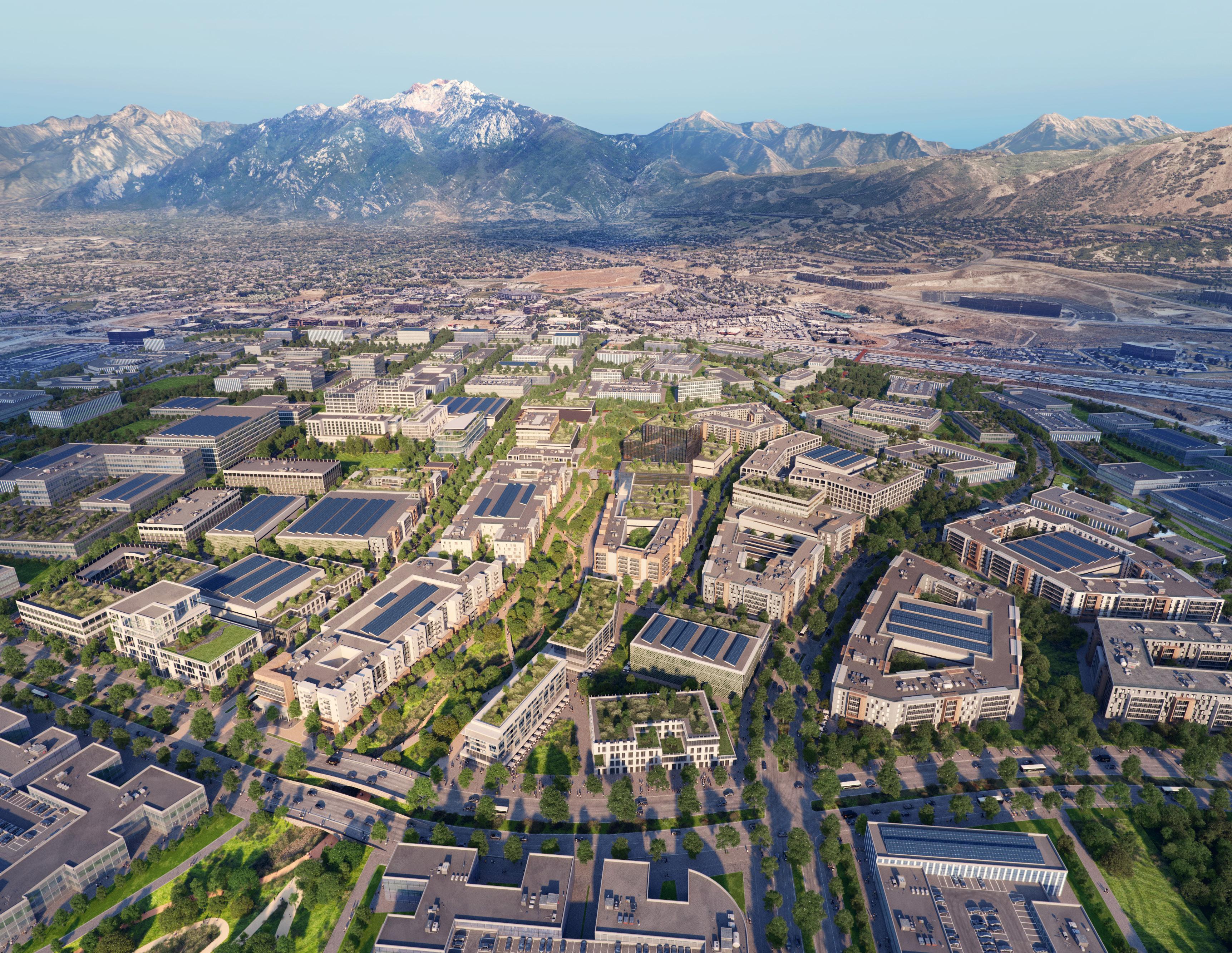

THE POINT
OF THE MOUNTAIN

CHAPTER
CONSULTANT TEAM
DESIGNING LOCAL
Amanda Golden
Managing Principal + Co-Founder
Jasmine Metcalf
Project Manager
Anna Talarico
Public Art Coordinator
Garrett Rubin
Urban Designer
Nate Fenske
Urban Planning Co-op
MARK REIGELMAN.
Mark Reigelman
Artist + Public Art Consultant
UNION CREATIVE
Jake McIntire
Founder + Principal
STATE OF UTAH
Mike Ambre
Executive Director, Point of the Mountain
Don Willie
Operations Director, Point of the Mountain
Nick Duerksen
Director of Land Development
Steven Kellenberg Planning Consultant
Alan Matheson
Former Director, Point of the Mountain
THE POINT OF THE MOUNTAIN LAND AUTHORITY BOARD
Rep. Jordan Teuscher, Co-Chair
Lowry Snow Co-Chair
Sen. Jerry Stevenson
Mayor Jenny Wilson
April Cooper
Mayor Dawn Ramsey
Mayor Troy Walker
Rep. Ariel Defay, Former Member
Ryan Starks, Former Member
Sen. Lincoln Fillmore, Former Member
Rep. Jeff Stenquist, Former Member
Rep. Jefferson Moss, Former Member

EXECUTIVE SUMMARY
CHAPTER ONE VISION FOR THE EXPERIENCE
This chapter reflects the ideas, desires, and opportunities expressed by statewide stakeholders. It includes the stakeholder report, which outlines key takeaways from our conversations with the people of Utah, and theming directions for the collection. This chapter also includes key experiential elements of the collection, opportunities for storytelling through public art, and descriptions and definitions of public art typologies and approaches.
CHAPTER TWO PUBLIC ART PROJECTS
This chapter provides a general framework for public art placement within The Point’s sites and corridors. Projects are prioritized within highpriority areas in Phase 1 of the development, specifically: The Promenade, The Central Green, River to Range and Chapel Trail. Public art direction for each of these sites includes attributes and considerations for implementation, including artwork scale, level of investment, recommended typologies, timing, anticipated impact, and prioritization.
There are also sections on additional public art opportunities from a programmatic standpoint, and public art funding for general opportunities and a possible mural program.
Chapter two closes with a project phasing plan, which represents the best assumptions for public art funding availability, at the time of this plan’s
writing. The phasing plan earmarks funding for specific projects with the intention of providing adequate funding for each proposed public art project following construction completion.
CHAPTER THREE PROGRAM MANAGEMENT
This section summarizes critical elements of the Public Art Program Policy and Administration Procedures. It includes critical details of the appropriate Public Art Fund expenditures, the public art selection process, and the public art policy. Chapter Three concludes with an outline of the immediate next steps for the Public Art Program at The Point.
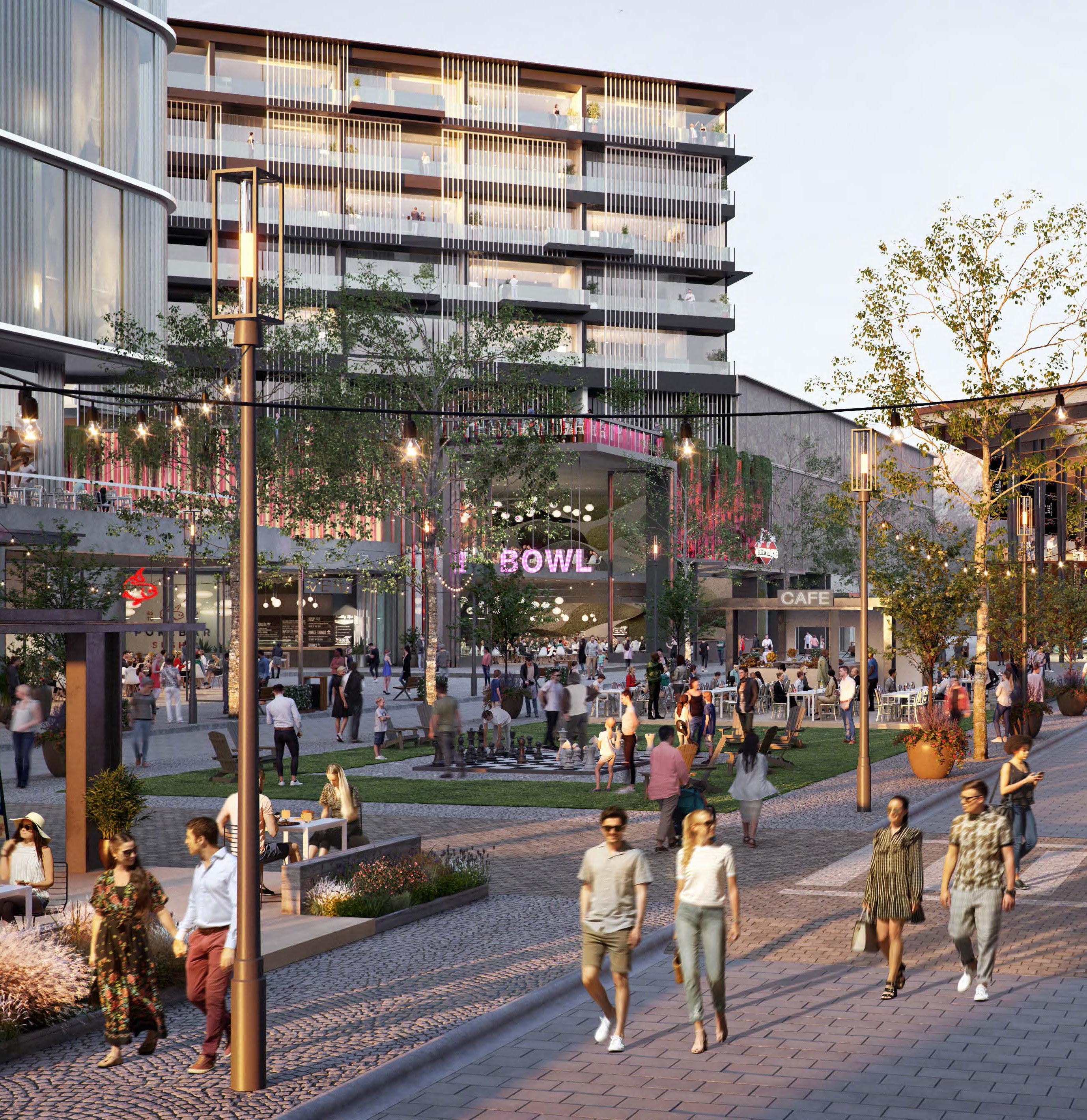
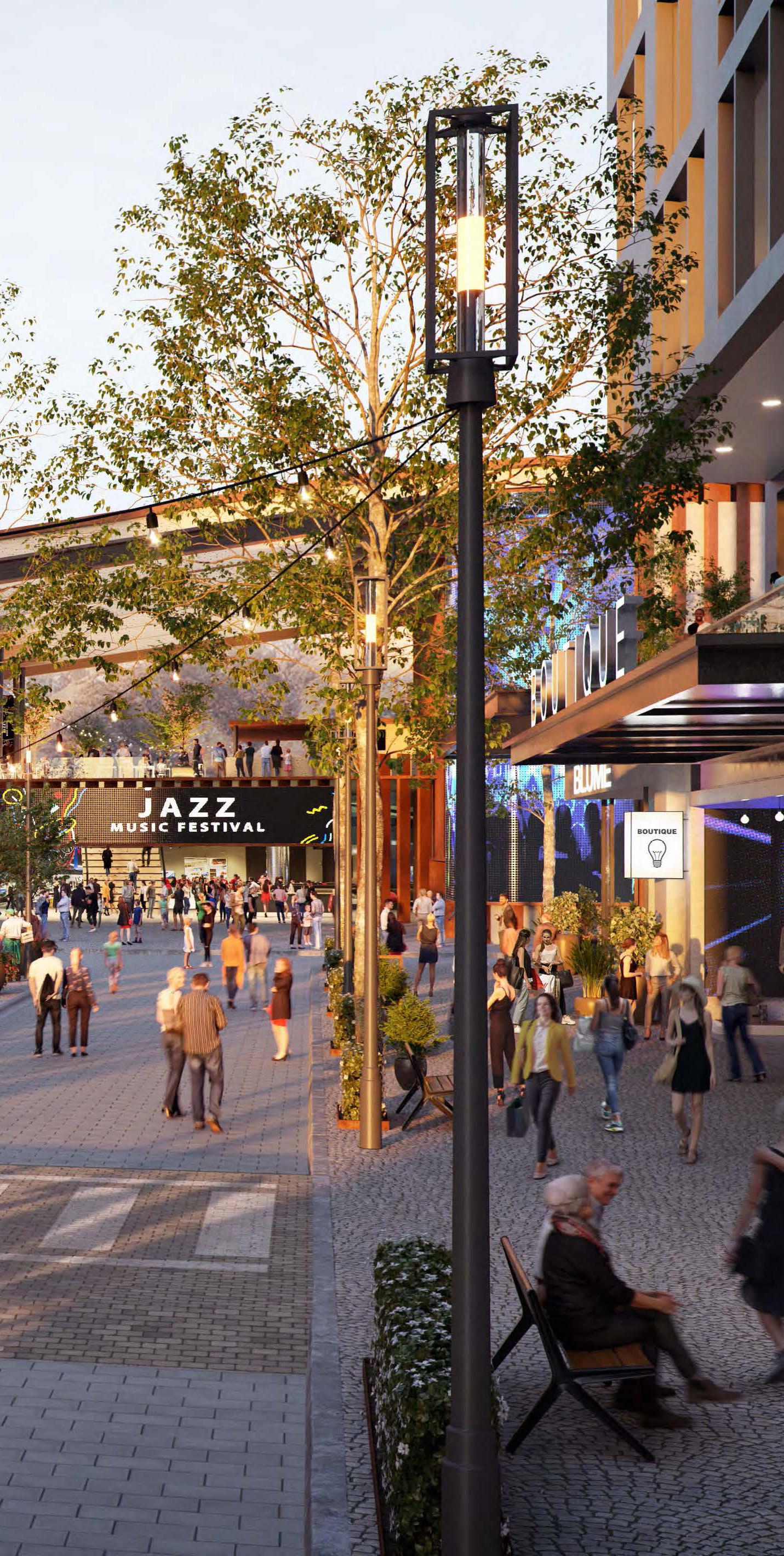
WELCOME LETTER
Creating a public art master plan is a deeply meaningful opportunity to reveal a place’s unique traits, treasures, and values. The Point, a once-in-a-century, 600-acre development project in Draper, Utah, is well on its way to becoming a place that defines the future for generations of Utahns to come. During the planning process, we continued to be inspired by The Point’s dedication to encouraging strategic growth, high quality of life, and opportunities for all Utahans, and we are honored to uplift the power of public art in creating a sense of place, fostering cultural connections, and igniting wonder and joy in achieving this vision.
On behalf of the Board of The Point of the Mountain State Land Authority, we are thrilled to present The Point Public Art Master Plan, which offers a Utah-driven vision for enlivening The Point through meaningful, uniquely-Utahan opportunities for public art and placemaking.
We believe that public art is a catalyst for finding common ground, understanding who Utahns are today, and reflecting on where Utah has been. Through this Public Art Master Plan, we can begin to envision how The Point will reflect the very best of Utah—its natural wonders, its authenticity, its untold stories, and yes, even its quirks (Jello salad, anyone?). Public art at The Point will not only enhance the experience of all The Point has to offer, but more importantly, it will reveal it.
Designing Local is grateful to the Board of The Point of the Mountain State Land Authority for supporting this bold, vibrant approach for representing Utah’s remarkable stories and characteristics through public art and placemaking strategies.
Signed,
Amanda Golden Managing Principal + Co-Founder

CHAPTER ONE VISION FOR THE EXPERIENCE
WHY THIS PLAN?
STAKEHOLDER REPORT
THE PUBLIC ART EXPERIENCE
STORY TELLING THROUGH PUBLIC ART
PUBLIC ART TYPOLOGIES
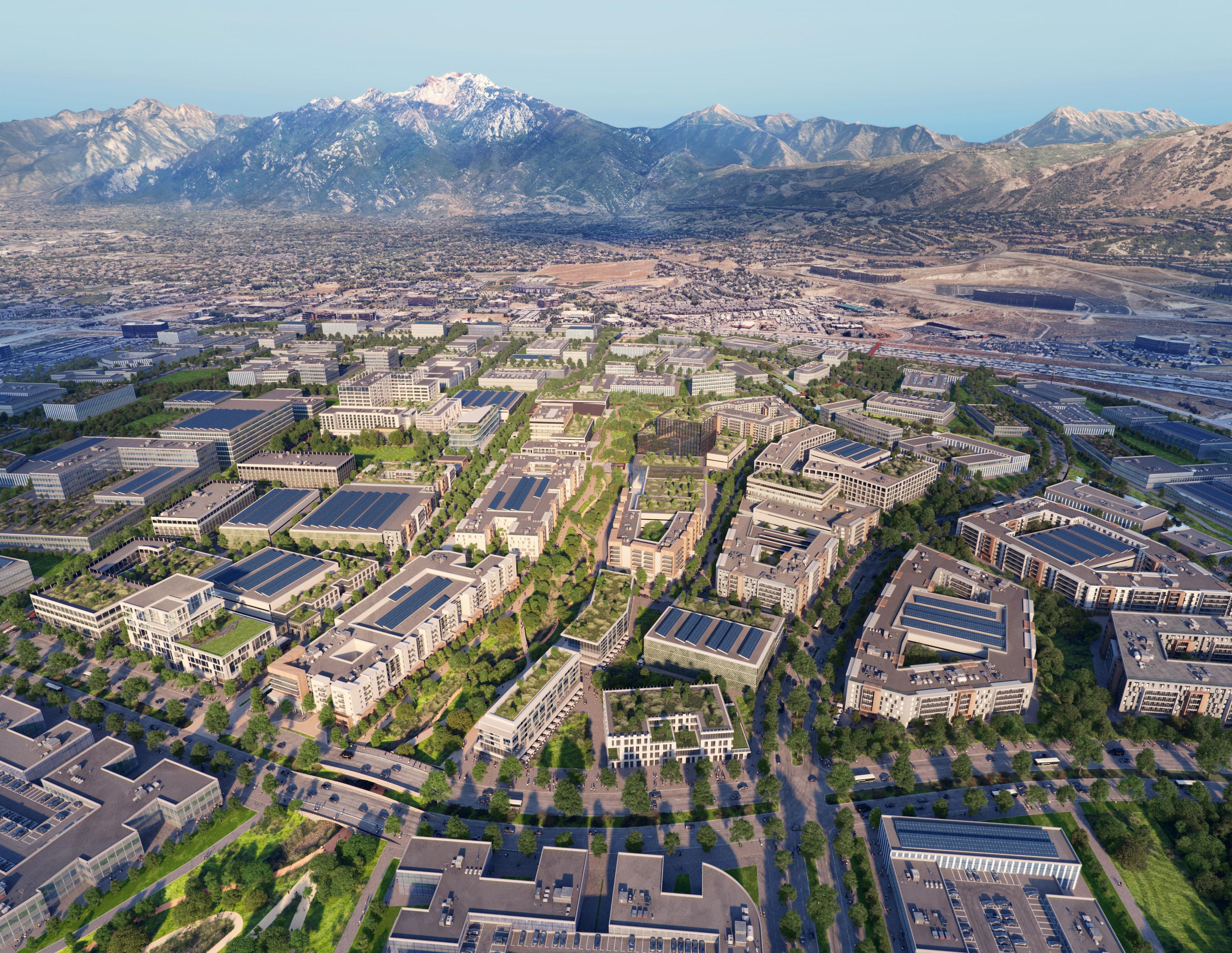
SECTION ONE
WHY THIS PLAN?
A public art plan is a roadmap for how a community’s public art collection is developed and managed. It outlines the vision, goals, and strategies for integrating art into public spaces, ensuring that the art reflects the community’s values and enhances the local environment. The plan includes guidelines for selecting and funding artworks, maintaining them, and engaging the community in the process. In essence, it’s a blueprint for creating a vibrant and meaningful public art landscape that enriches the community and its cultural identity.


A VISION DRIVEN BY UTAHNS...
From the beginning, this plan has been driven by a Utah-focused vision and a desire for public art at The Point to authentically reflect, connect, and celebrate all of Utah. This has been explored and ultimately achieved through deep conversations and consideration of the many unique customs, stories, landscapes, peoples, and icons found throughout Utah.
The people of Utah have a long standing appreciation for and commitment to the arts across disciplines. This is seen through globally renowned public art, museums, theaters, schools, artists, performers, musicians, dance companies, festivals, land art, architecture, and more. The arts are a deep part of the state’s identity and contribute significantly to quality of life, sense of place, and belonging statewide while acting as a critical economic and tourism driver. With The Point being a generational project for the State of Utah that will indefinitely contribute to Utah’s physical, social, and cultural fabric, it is imperative that public art be implemented with deep consideration of reflecting Utah’s past, present, and future.
To help shape public art at The Point through a Utah-driven vision, stakeholders from around the state were engaged through surveys and a series of focus groups. Through these input mechanisms, Utahns provided their perspectives on the relationships between public art, architecture, culture, and economic development and their vision for interweaving these at The Point through public art.
Notably, Utahns shared a desire for public art at The Point to be an authentic but not overly literal reflection of Utah. Public Art here should feel rooted to Utah’s past and present but also manifest the visionary possibilities of the future. Projects could reference or be made from Utah’s many natural resources or cultural symbols but never attempt to replicate any of the state’s icons. Participants also shared a clear desire for public art at The Point to support Utah’s artists whether through directly commissioning them for work or providing learning and professional development opportunities to collaborate with artists from around the world. In this way, public art can represent Utah’s unique position of simultaneously being hyper-local and globally-connected.

STAKEHOLDER REPORT
THE POINT PUBLIC ART PROGRAM
• Three focus groups with attendees from regions comprised of North Utah, South Utah, Wasatch Front, and Wasatch Back.
• Professionals in the fields of: architecture & landscape architecture, public art, arts and culture, economic development as well as artists and community members.
The following is a summary of feedback heard during focus group sessions. The information is divided into small sections to provide a snapshot of themes from the stakeholders.
ARTWORK STRATEGIES AND CONSIDERATIONS
• Balance prominent centralized pieces with smaller, distributed artworks
• Feature artworks that range in scale from massive to intimate.
• Integration of art with technology
• Integrate art into the natural surroundings and existing infrastructure.
• Include interactive or playful elements in some artworks
• Incorporate wind and water features thoughtfully into the artworks
• Ensure durability and low maintenance needs for the artworks considering the harsh weather conditions
ARTWORK THEMES
• Using local or natural materials to make art
• Environmental responsibility/stewardship
• Utah’s natural wonders: national parks, landbridges, the Great Salt Lake
• Utah’s global presence and multicultural essence
• Going beyond Utah’s icons
• Explore the concept of a “City of the Future” where architecture and nature seamlessly blend.
Avoid:
• Overtly literal representations of Utah’s natural features or historical landmarks.
• Art that feels exclusive or intimidating for those unfamiliar with art.
HOW SHOULD ART AT THE POINT FEEL?
• Exciting
• Happy
• Inviting
• Inclusive
• Economically Inclusive
• Connected
• Immersive
• Fun
• Accessible
• Marvelous
• Awe-Inspiring
UTAH STORIES THAT SHOULD BE CONSIDERED
• Beehives & Industriousness
• Jello Salad
• Seagulls
• Pioneer & Settler Heritage / Utah as the crossroads of the West / Utah’s global networks
• 2002 Olympics
• Quirky & Weird
• Entrepreneurship
• Outdoor Recreation (Skiing, Snowboarding)
• Natural Resources & Unique Attributes (Salt, Copper, Sego Lily, Granite, Brine Shrimp, Gold, Silver, Titanium, Lithium)
• Dinosaur Bones
• Prison History
• Utah State Song
• Utah’s Global Presence
• Indigenous history
GUIDING THEMES AND VALUES
• Inclusive and Welcoming: Art should be accessible and avoid intimidating viewers. Everyone should feel included and see themselves reflected in the art.
• Awe-Inspiring: Create a sense of wonder and excitement through impressive, thought-provoking art of varying scales (intimate to massive).
• Connection to Place: The art should integrate with the natural surroundings, highlighting Utah’s unique geological features and cultural stories.
• Community-Oriented: Celebrate Utah’s community and family aspects, fostering a sense of connection and belonging.
• Sustainable and Accessible: The Point should be enjoyable for all, regardless of economic background. Sustainable practices and accessibility should remain key considerations in public art installations.
• Surprising and Experimental: Surprise visitors with unexpected elements that challenge the norm and integrate innovative, experimental art.
ADDITIONAL CONSIDERATIONS
• Public art as storytelling: Art can act as a storyteller for Utah’s history, geography, and culture, beyond the typical pioneer narratives.
• Artist Support: Opportunities for artist residencies, professional development, and collaboration with local Utah artists are important.
• Stewardship and Governance: Establishing a clear structure for art selection, management, and promotion is crucial.
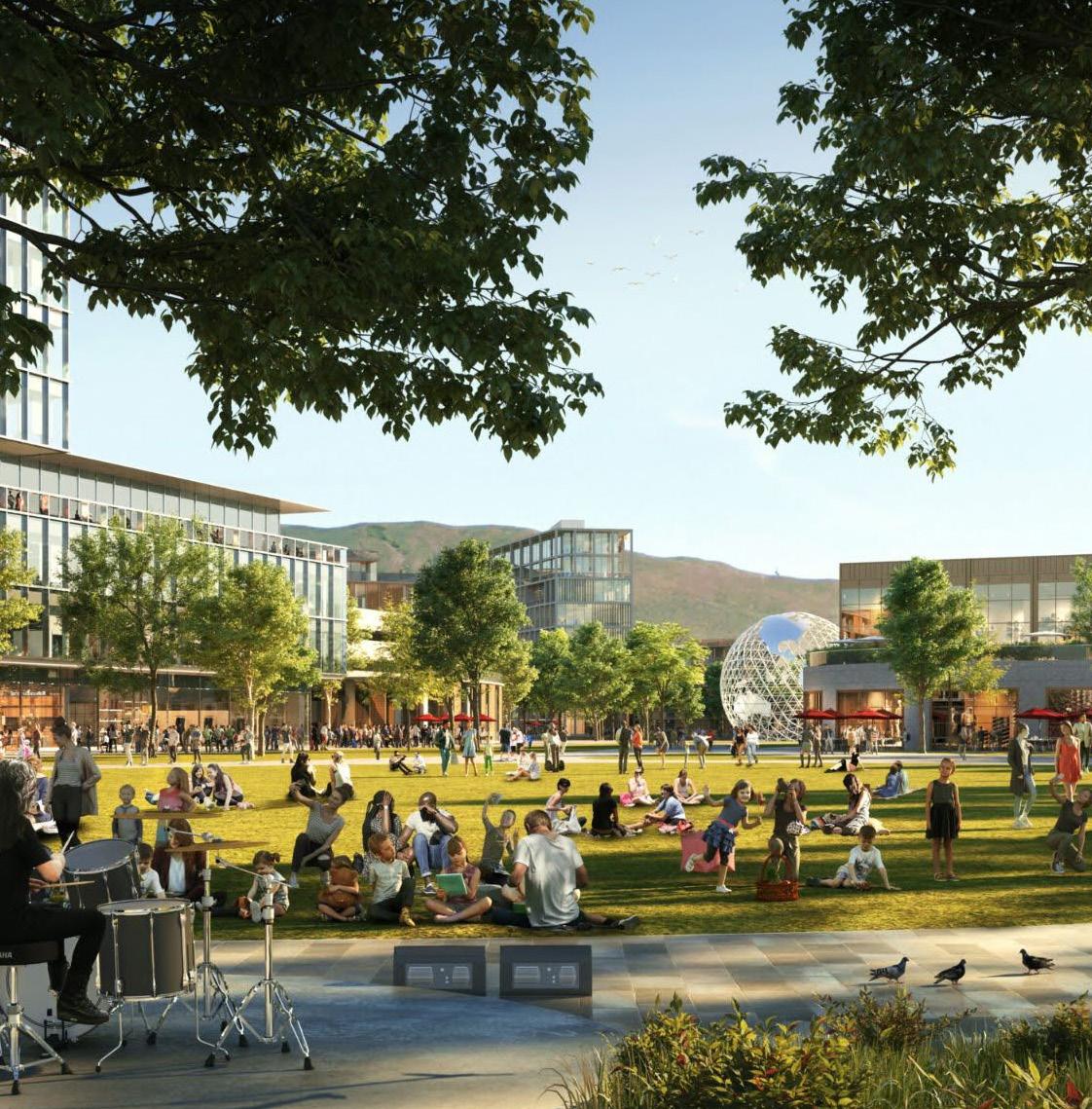

THE PUBLIC ART EXPERIENCE
The approach to engaging Utah stakeholders in this once-in-a-generation development allows for a different kind of visioning process, one grounded in the past as much as the future, stakeholders and survey respondents were asked to envision a place that does not yet exist and weigh in on a level of investment in public art which the state has not seen. The results of these conversations and survey opportunities defined two clear courses of action, one in which the state is elevated in terms of access, opportunities, and identity and another in which the public art experience is universally impactful, engaging, and iconic. Specific comment came from the conversation which translated into the guidlng principles:
• TELL A STORY
• VARY IN SCALE AND INTIMACY
• EMBRACE UTAH’S ICONS
• WELCOME AND INCLUDE
• CONNECT TO THE SITE AND ITS HISTORY
• MARK THIS UNIQUE CROSSROADS OF THE WEST
• CONSIDER THE ENVIRONMENT
• OFFER ACCESSIBILITY
INCLUSIVE AND WELCOMING
Art should be accessible and avoid intimidating viewers. Everyone should feel included and see themselves reflected in the art.
AWE-INSPIRING
Create a sense of wonder and excitement through impressive, thought-provoking art of varying scales (intimate to massive).
CONNECTION TO PLACE
The art should integrate with the natural surroundings, highlighting Utah’s unique geological features and cultural stories.
COMMUNITY-ORIENTED
Celebrate Utah’s community and family aspects, fostering a sense of connection and belonging.
SUSTAINABLE AND ACCESSIBLE
The Point should be enjoyable for all, regardless of economic background. Sustainable practices and accessibility are key considerations.
SURPRISING AND EXPERIMENTAL
Surprise visitors with unexpected elements that challenge the norm and integrate innovative art.
PUBLIC ART AS STORYTELLING
The art can tell stories about Utah’s history, geography, and culture, beyond the typical pioneer narratives.
ARTIST SUPPORT
Opportunities for artist residencies, professional development, and collaboration with local Utah artists are important.
STEWARDSHIP AND GOVERNANCE
Establishing a clear structure for art selection, management, and promotion is crucial.
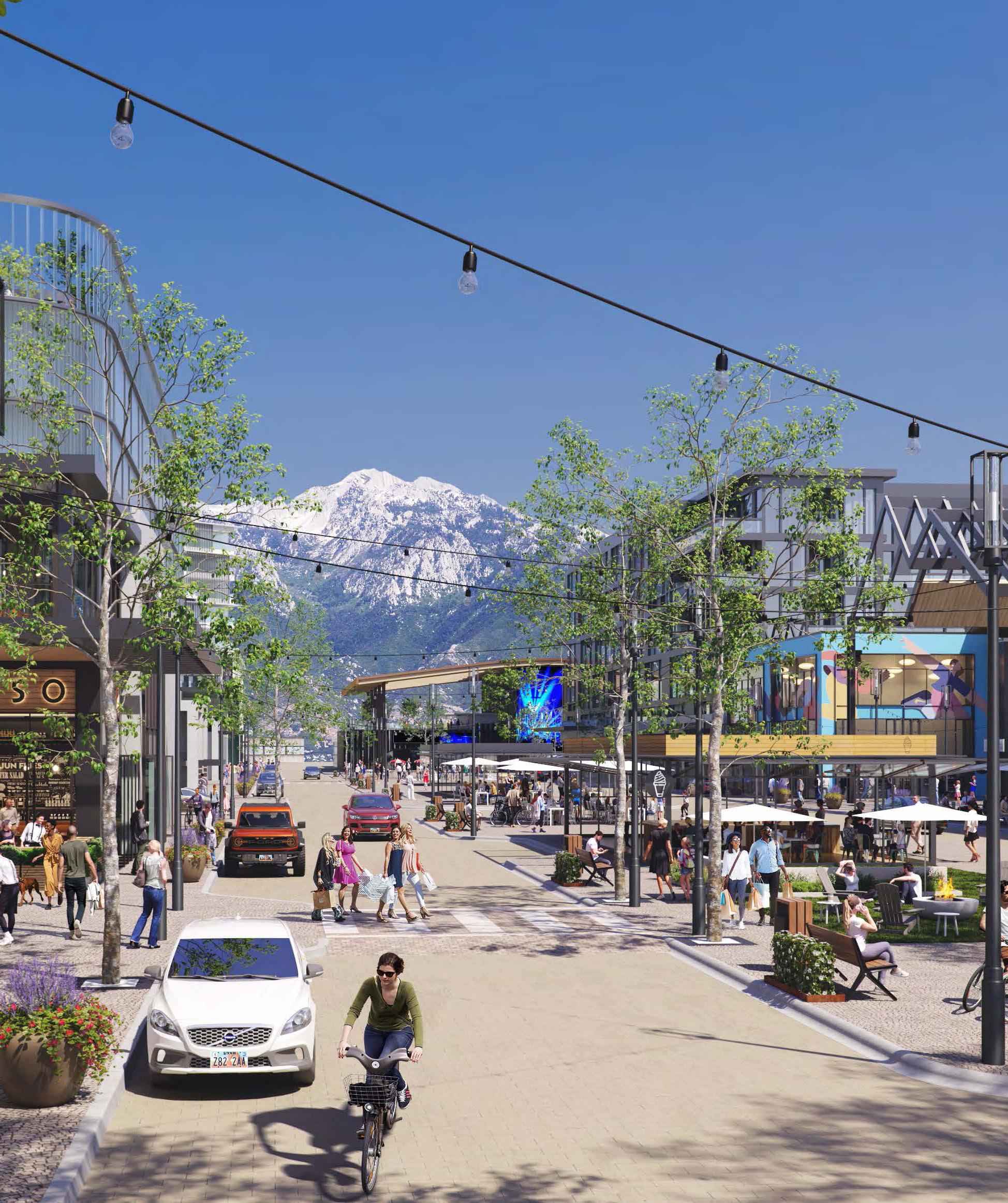
HOW DO WE CREATE THIS EXPERIENCE?
GOVERNANCE & MANAGEMENT
Clear, process-driven governance will support a thriving, dynamic, and sound public art program at The Point. The development of two documents— The Point Public Art Charter and The Point Public Art Policy—is recommended in order to outline the underlying framework for public art best practices, including appropriate use of funds, acquisition processes, collection management, public-private partnerships, and beyond. This Plan provides a detailed description of what these documents and processes entail, as well as how they will function within the overall vision at The Point.
A more detailed look at program governance can be found on page xx of the appendix.

SECTION TWO
STORYTELLING THROUGH PUBLIC ART
Public art projects can have a range of positive, impactful outcomes in public spaces and communities. This section outlines different types of public art interventions, engaging opportunities for public involvement in art, and strategies to select public art sites.
UTAH: PAST, PRESENT, AND FUTURE
Stakeholder conversations helped to shape the kind of stories individuals from across the state wanted to see represented through art at The Point.
What was repeatedly underscored was artwork that was grounded in Utah’s geographical, natural, and cultural histories that struck a balance between overly literal representations of the Wild West and pioneer foundations with natural splendor and abstraction of community stories. The themes that were widely recognized as being distinctly Utah and prime candidates for exploration through artist expression were grounded in what makes Utah unique.

INDIGENOUS CULTURES
The earliest inhabitants of Utah were indigenous tribes, including the Ute, Paiute, Shoshone, and Gosiute. Each tribe’s distinct cultural identities and community practices preexisted Utah’s statehood, but they have survived and adapted within a deeply changed and evolving place. Because art provides a powerful mode of cultural exchange and translation, centering and celebrating Indigenous experiences and traditions is a key thematic opportunity area for the art at The Point.

BEEHIVES
Even from the top of Kings Peak to the desert valleys, Utah’s social fabric and industrious nature have been likened to that of a busy hive: bustling, active, and dedicated to creating a place of plenty. Connected to Utah’s pioneer roots this symbol has expanded to become synonymous with Utah as a state, exemplifying Utahn’s collaborative nature, community-oriented values, and entrepreneurial spirit.
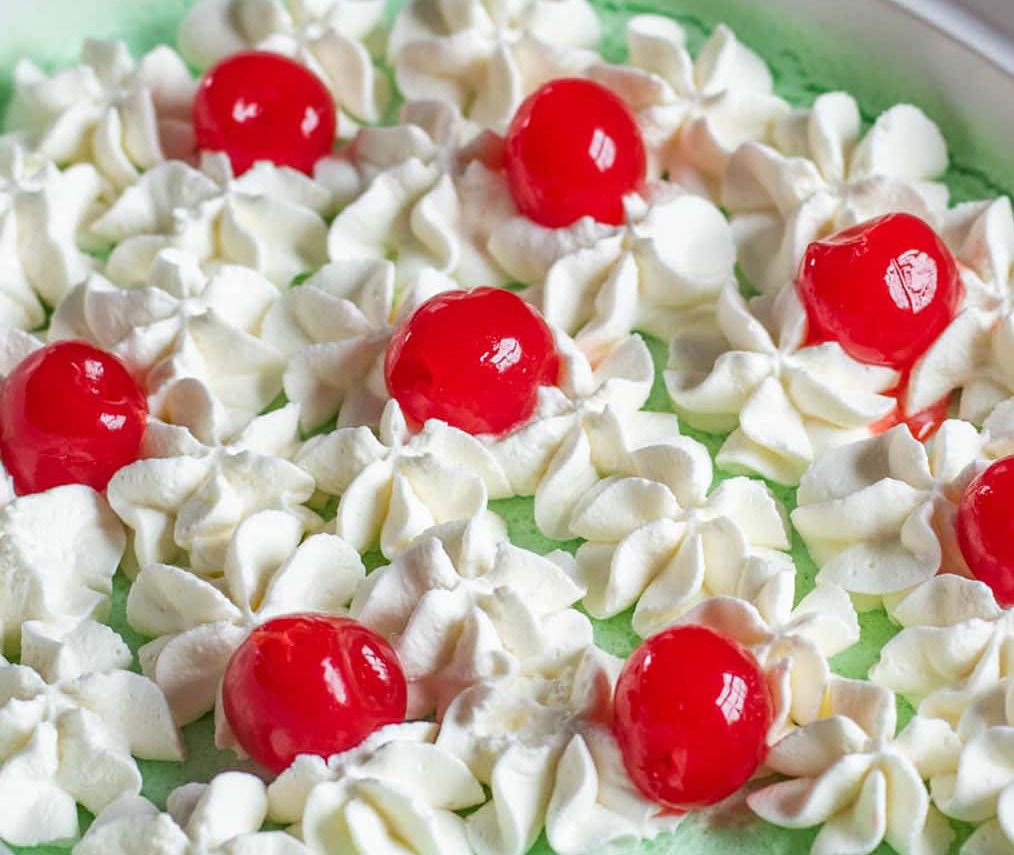
JELLO SALAD
When asked what makes Utah unique stakeholders routinely referred to the beloved Jello Salad as an analogy for a place that grows more diverse and dynamic by the day but has roots in unique customs and traditions. Jello Salad is used by community members interviewed as a representation of a collective of people, identities, and stories coming together to create the greater Utah community.


DISCOVERY
Discovery characterizes Utah’s past, present, and future, and comes in many forms: getting lost in nature, being awestruck by the landscape, or being invited to engage, experiment, and interact within public space. Discovery should underscore the experience at The Point.

OLYMPICS: PAST & FUTURE
Utah rose to the global stage in 2002 as host of the Winter Olympics, creating a legacy that has played a larger role in the Wasatch region’s culture and generated statewide pride. The impact of the 2002 Winter Olympics continues to be felt in the state’s economy, culture, and reputation as a global leader in competitive sports. Utah will once again host the Olympic and Paralympic Winter Games in 2034; and excitement and energy is building across the state for what’s to come.

PIONEER & SETTLER HERITAGE
Utah’s history as a state is deeply enmeshed in Pioneer and Settler Heritage, contextualized most notably by the mid-1800s Mormon arrival to the Salt Lake Valley. These years remain formative pillars of present-day Utah culture and value systems. Despite contemporary (and sometimes oversimplified) representations of Pioneer and Settler Heritage, what remains clear was that this period was a defining moment for Utah culture and has permeated generations through art, culture, and social connections.

SEAGULLS
As the story goes... when crops across Utah faced devastation, California Seagulls arrived in the region. Although they migrated to this land-locked place, they are beloved by Utahns as heroes. Known as the Miracle of the Gulls, the species saved the state from starvation in 1848 when nearly all crops were decimated by crickets.

UTAH AS THE CROSSROADS OF THE WEST
Utah’s unique geographic location and rich history have made it a pivotal crossroads of the American West. Situated at the intersection of major trade routes like the Oregon Trail, the California Trail, and the Mormon Trail, Utah has served as a vital stopping point for travelers and traders for centuries and has played a key role in shaping the westward expansion of the United States.
The mountainous terrain served as both a challenge and a key connector for the many cultural groups that have inhabited or traveled the region. Its diverse heritage—from the first peoples to the Spanish explorers, Mormon pioneers, and later European immigrants— has further solidified its status as a melting pot of the West. Additionally, Utah’s rich mineral resources, including silver, gold, and copper, attracted miners from across the country, leading to a period of rapid development and prosperity.
Utah’s legacy as a crossroads is evident in its diverse population, vibrant culture, and thriving economy. Today, Utah continues to be a crossroads, serving as a transportation hub with major highways, railroads, and airports connecting it to other parts of the country and the world. Its stunning natural treasures—including the Rocky Mountains, national parks, and state parks—attracts visitors from around the globe.
ADDITIONAL THEMES
• The Environment, Natural History, & Land
• Salt
• Mined Materials & Metals
• Dinosaurs
• Brine Shrimp
• Segoe Lily
• Engravings, Tracks, Prints
• Cliff Dwellers
• Flora & Fauna
• Environmental responsibility
• Utah’s natural wonders
• Natural resources
• Caves/Mining
• Indigenous Cultures
• Crystal Streams
• Agricultural Heritage
UNIFYING VALUES
• Love of & Connection to the Outdoors
• The Utah State Song
• The Mountains & Natural Wonders
• Behold, the Valley!

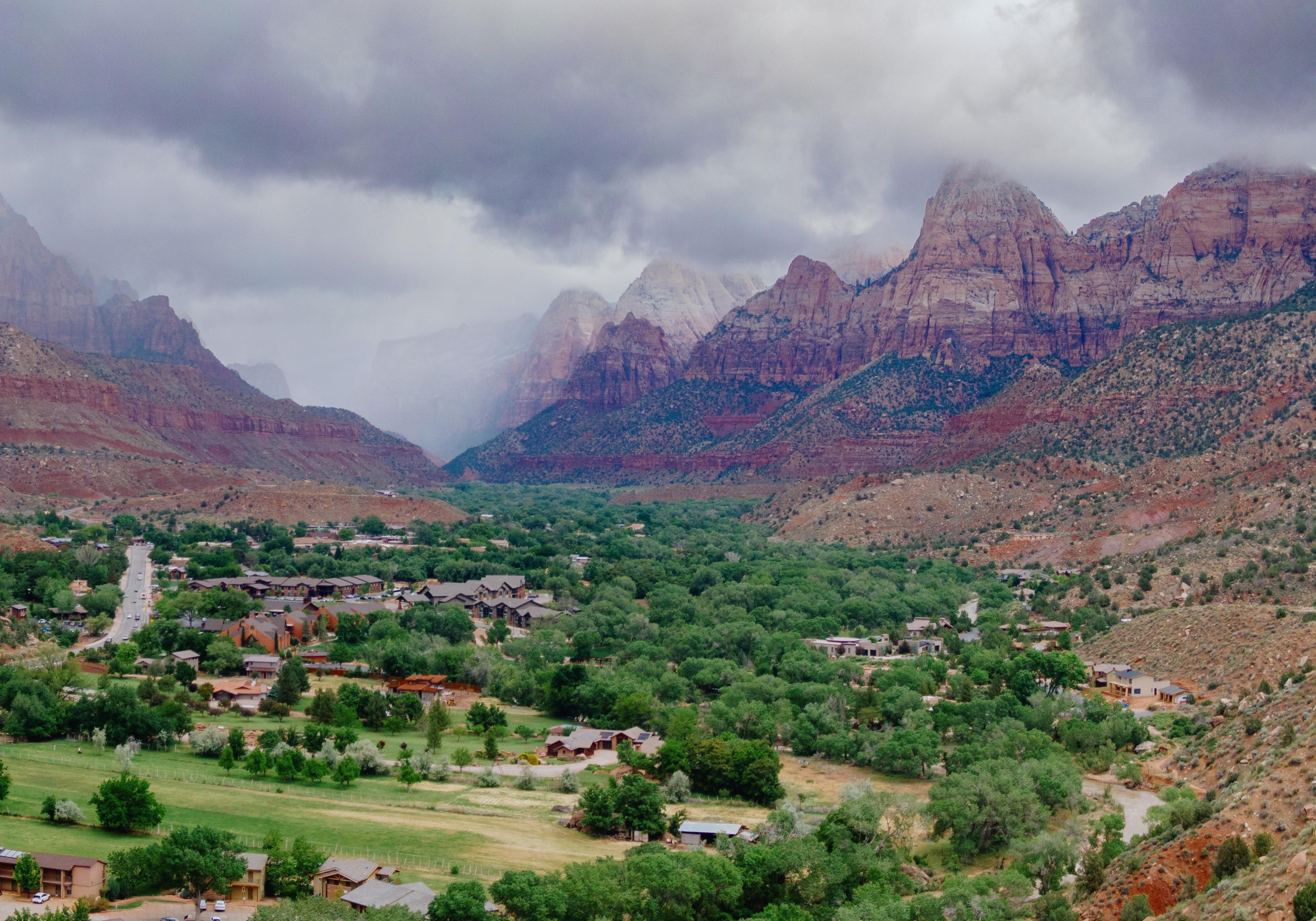

SECTION THREE
PUBLIC ART TYPOLOGIES
Public Art is defined as an original physical work created or produced by an Artist that is accessible to the public. Artwork may be free-standing or integrated with the work of other design professionals into a building or site. Artwork may be new or maybe an existing work of art.
This section outlines commonly accepted and reference Public Art typologies for consideration in future calls for art at The Point.
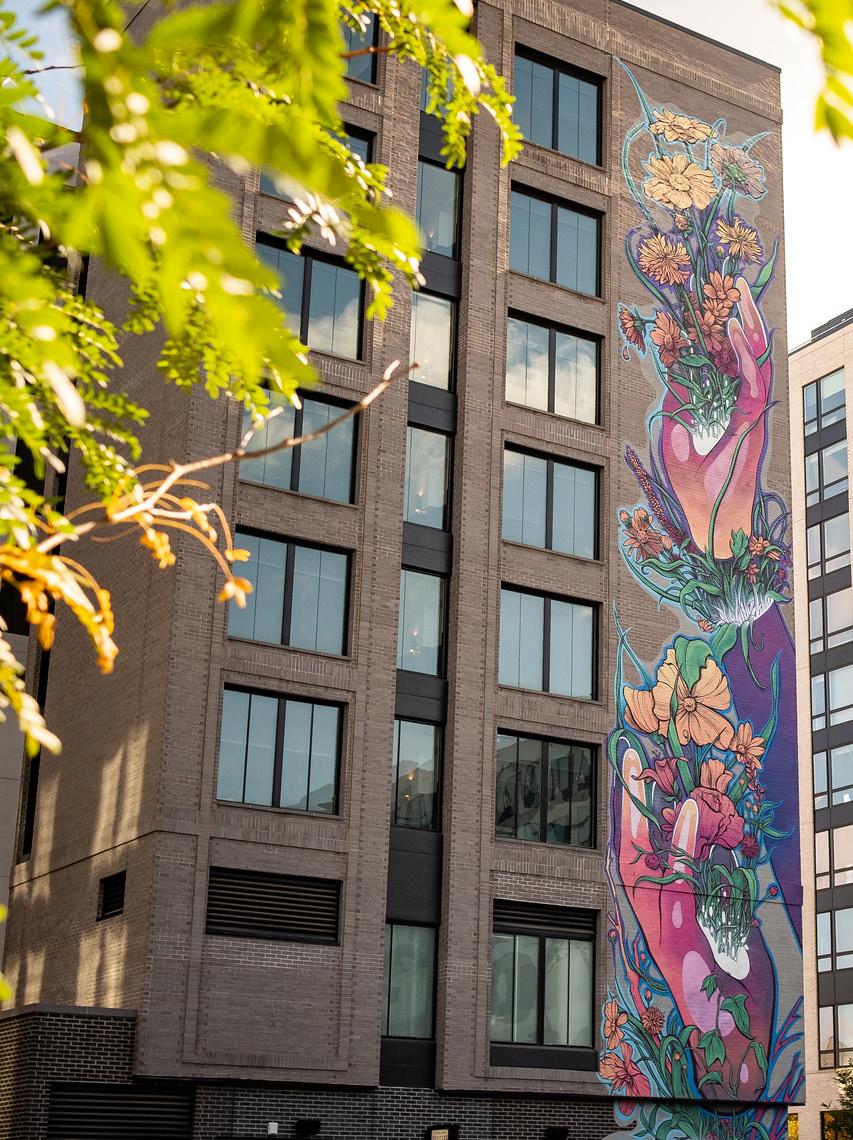

WHAT EXACTLY IS PUBLIC ART?
he purposes of these policies, but teams of such professionals may be led by an Artist.
DEFINITIONS FROM THE POINT OF THE MOUNTAIN PUBLIC ART POLICY
Public Art, when used herein, shall mean any of the following:
• sculpture, statues or monuments in any material or combination of materials;
• painting;
• murals;
• graphic arts including printmaking and drawing;
• photography;
• crafts in clay, fiber and textiles, wood, metal, plastics, glass and other materials;
• mixed-media, any combination of forms or media, including collage;
• performing arts;
• functional art such as street furniture, as defined by The Point Public Art Program;
• environmental art consisting of landforms and artistic landscape composition, or artwork created from natural (non-man made) materials.
The term “Public Art” does not include:
• reproductions by mechanical or other means of original works of art, except for limited editions, controlled by the artist, of original prints, cast sculptures, photographs or other works of art;
• decorative, ornamental, or functional elements which are designed by a building architect or consultants engaged by the architect which are a traditional and typical element of architectural functionality or code standards;
• elements generally considered to be conventional components of a landscape architectural functionality or code standards including, but not limited to, plant materials, pools, paths, benches, receptacles, fixtures and planters;
• “Art objects” which are mass produced or of a standard design, such as playground sculpture or fountains, except pieces of historical significance to The Point;
• directional or other functional elements, such as supergraphics, signage, color coding and maps, except where sculptural pieces are used to define gateways in The Point;
• electrical, water or mechanical service for activation of the work;
• exhibitions and educational programs related to the work;



THE CONSTELLATION
CHICAGO, IL
SANTIAGO CALTRAVA

SCULPTURE
Sculptures are three-dimensional original artworks that can be made of any material that offers structural stability and durability. Sculptures are scaled to their surroundings and typically do not move from the location in which they are installed. Whether contemporary, whimsical, traditional or something more, sculptures are often the focal points of civic art. Sculptures may commemorate and celebrate our history, express civic pride, or be established as culturally-defining showpieces for the town.
Sculptures can take on many shapes and sizes and often fit well when created in or alongside gateways, parks, gathering spaces, and community centers. Because communities can celebrate and enhance their civic identity, tin parks and urban settings.
ARMSTRONG

MURALS
Murals are large-scale, two-dimensional compositions that can be: 1) painted onto the surface 2) graphic reproductions printed onto vinyl that is adhered to a surface, or 3) painted onto a panel that is affixed to the building. Environmental conditions, artwork display duration, artist ability, timeline, and budget are all considerations for which mural application style is suitable for a project. While curating permanent works of art as part of the collection is important, ephemeral works such as murals allow for the exposure of many artists over a short period of time rather than a few artists over a long period of time.

BUTTERFLY MURAL



16TH AVENUE STEPS

RHAPSODY

MOSAICS
Mosaics come in many shapes and sizes and include glass or ceramics. The relative flexibility of the application of mosaics responds well to many art contexts. Mosaics can be inlaid for flooring or wall elements, or they may be a component of a sculpture. Terrazzo floors can be considered as a kind of mosaic installation. Special considerations for material choice, placement, and installation methods should be given to mosaic installations at The Point to account for Utah’s seasonality and climate.
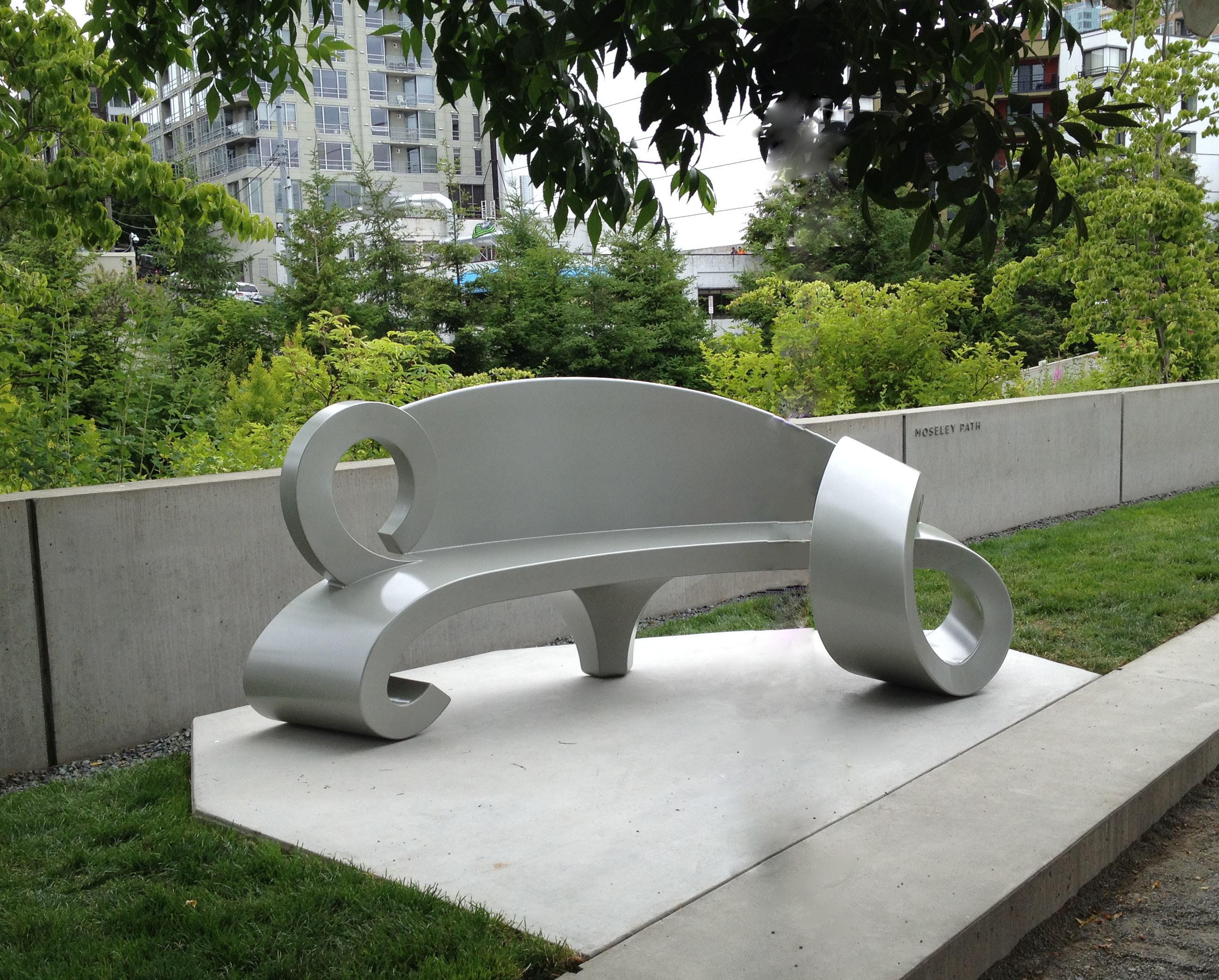
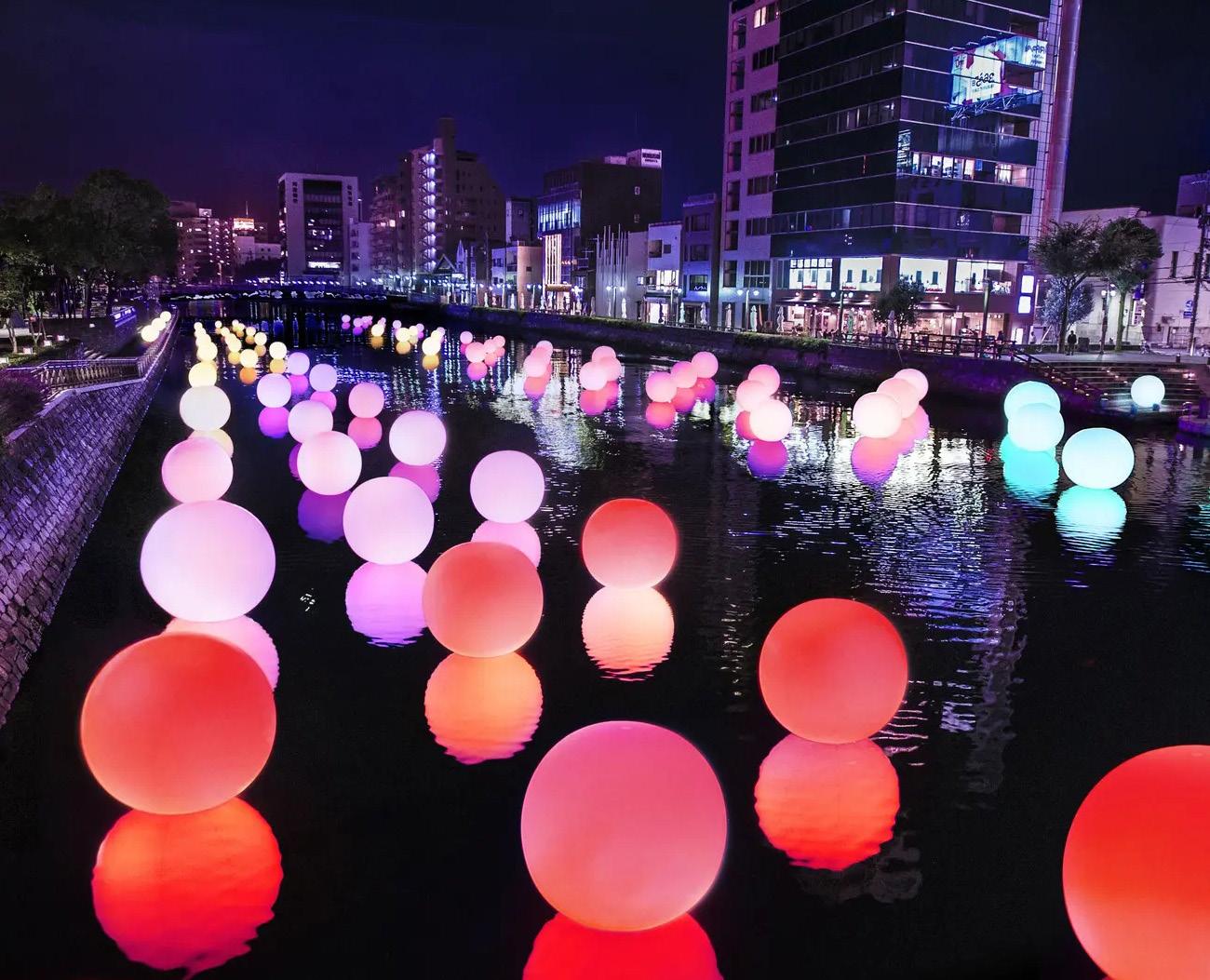
FUNCTIONAL
Functional Art is ordinary infrastructure that has been reimagined and designed by an artist. Integrating unique designs into infrastructure may be an affordable and efficient way to create a major visual impact. Some possible options for functional art installations include bike racks, benches, play equipment, medians, subdivision walls, trash cans, transit stops, storm drains, manholes, monument signage, sidewalk treatments and more.

WALALA LOUNGE
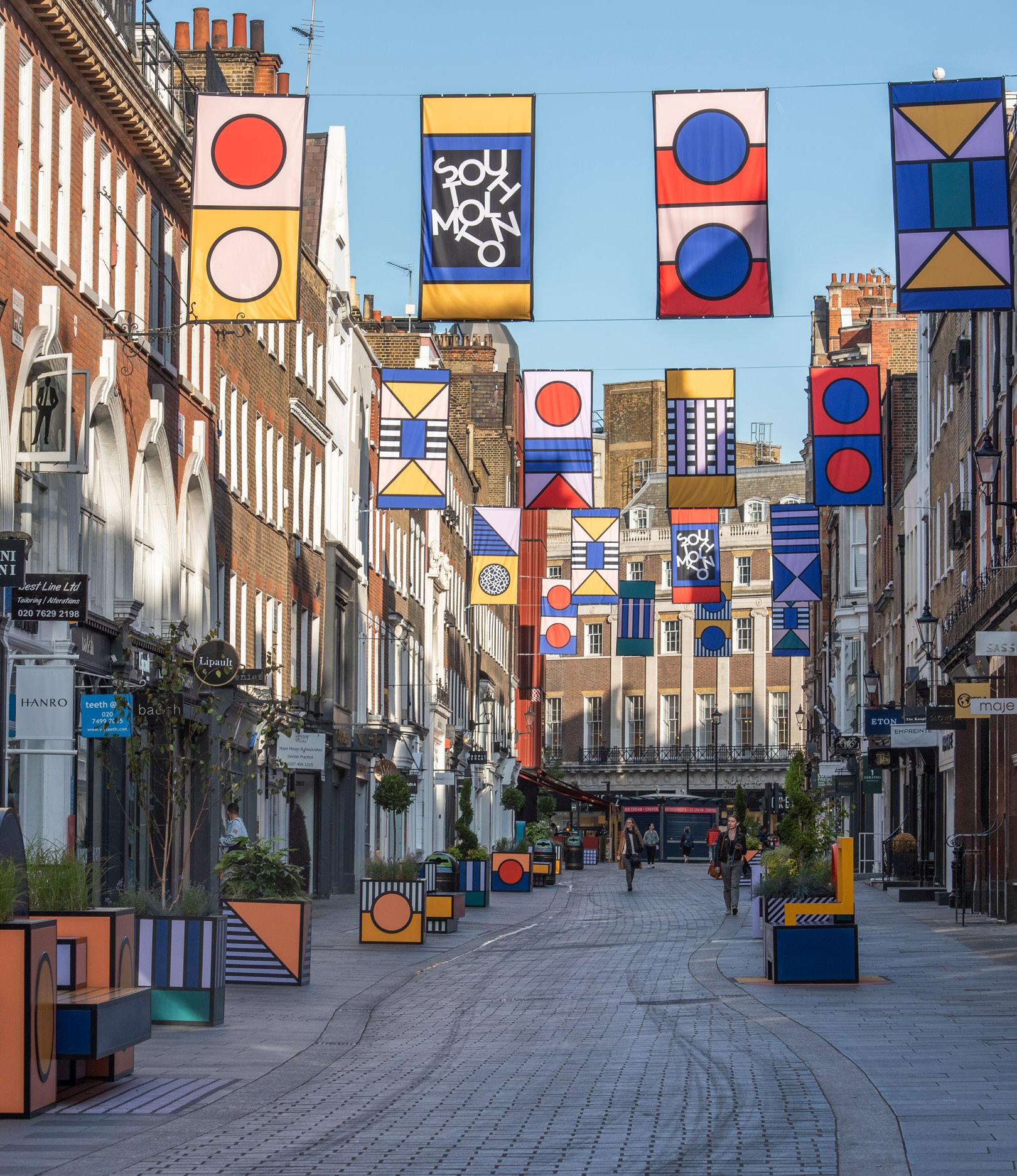

SKETCH PISTON


CLOUD ARBOR

INTERACTIVE
Site-specific art is artwork that is aesthetically, conceptually, and/or thematically connected to the unique circumstances, culture, history, and environment of a particular site. Site-specific art can take many forms, and may be permanent or temporary. In this approach to art-making, artists extensively research the place, site, or area where the site-specific artwork will be placed. Site-specific art tells the story of a place through its surroundings, enriching the experience of the place itself.
SHIMMERING RIVER OF RESONATING SPHERES
TEAMLAB TOKUSHIMA, JAPAN

POP-UP & TEMPORARY
Pop-up and Temporary Art are public art opportunities that exist in a community between one day and two years. Though temporary art is not intended to live for a generation, it can have a lasting impact on a community by creating a sense of surprise and joy in unexpected places. Some ideal locations for temporary installations include construction sites, sidewalks, alleyways, parks, and temporarily empty spaces and storefronts.
Temporary art can be cost-effective and easy to execute, providing opportunities for additional artist engagement. In whatever form, its short lifespan gives energy to the space and drives excitement among the community. Temporary may also invite collaboration, be it with local schools or community groups, to rotate artwork over short periods of time.
BODY / LIGHT I
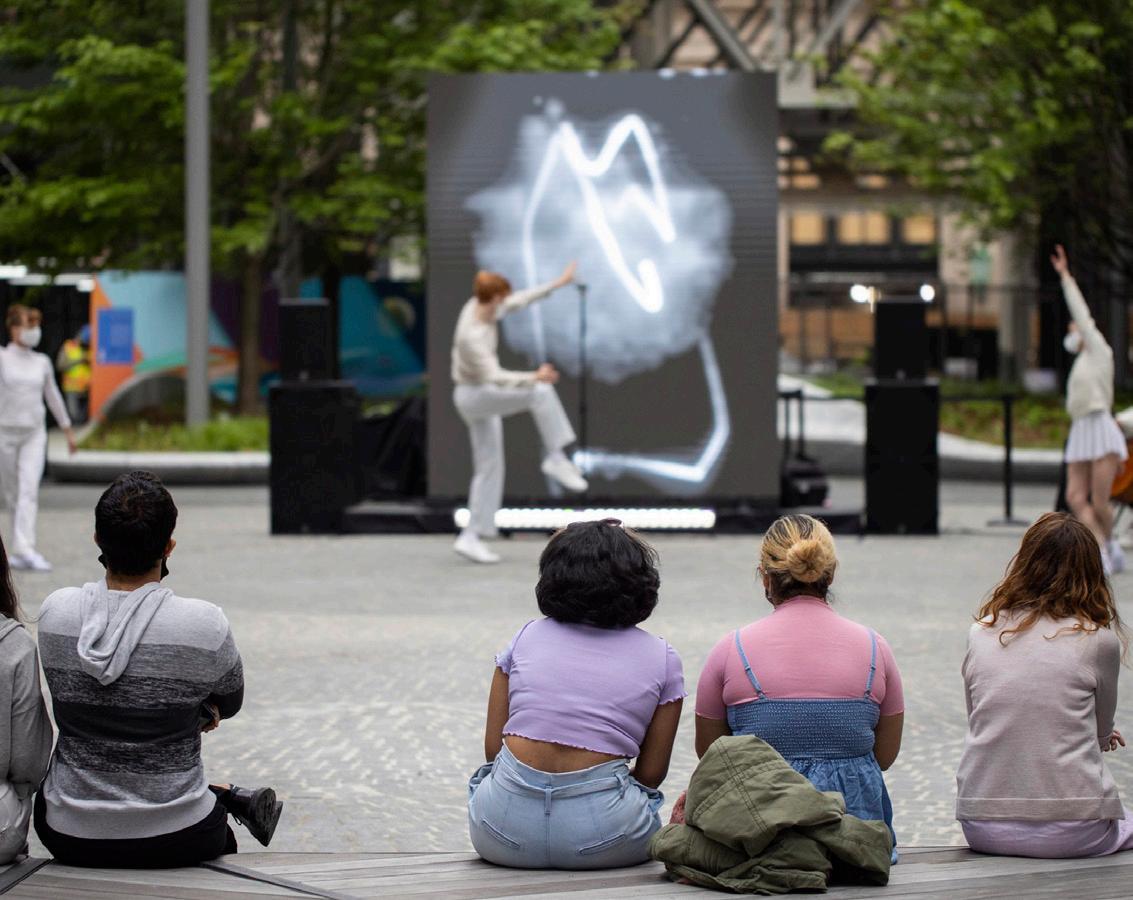
RIVERSIDE CRYSTAL TREE


ORGANIC HIGHWAY
LANGELAND, DENMARK

BLACK NEST II

ICE WATCH

ENVIRONMENTAL ART
Environmental art is any kind of outdoor public art that uses materials with a direct connection to nature, landscaping, or organic materials. Environmental art can be temporary or permanent, and its scale can vary. Its thematic context addresses environmentalism and sustainability.

FIBER
Fiber art is any kind of artwork that uses natural or synthetic fiber materials as the primary component of its overall composition. Fiber art can take the form of wall hangings, tree wraps, suspended sculptures, and beyond. Examples of fiber materials include fabric, yarn, polyurethane materials (like tarp), and mesh.

BRAIN PROJECT
ASCENSION OF POLKA DOTS ON THE TREES
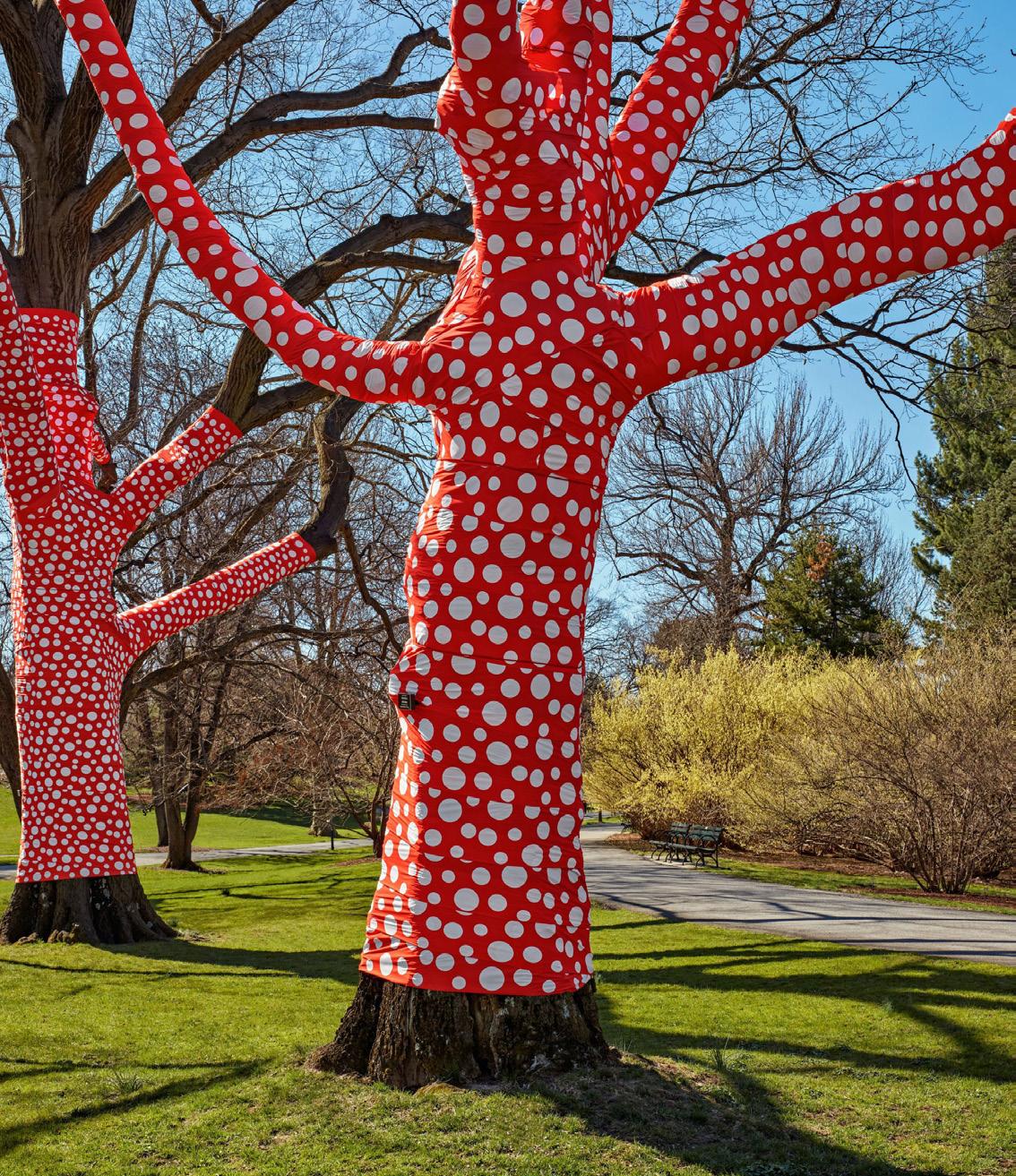

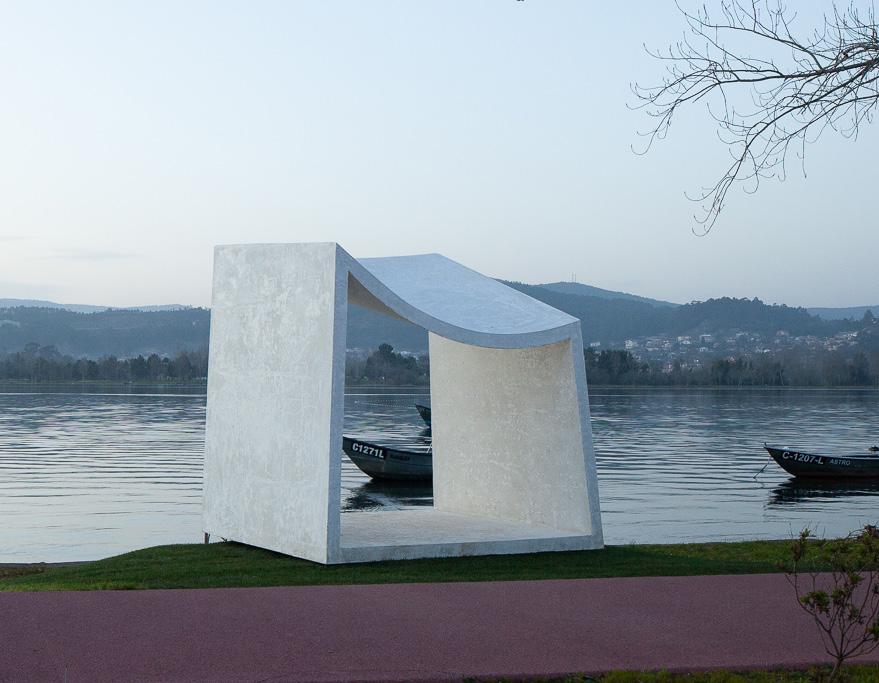
PRISM

PERSPECTIVES ON FREEDOM

SITE-SPECIFIC
Site-specific art is artwork that is aesthetically, conceptually, and/or thematically connected to the unique circumstances, culture, history, and environment of a particular site. Site-specific art can take many forms, and may be permanent or temporary. In this approach to art-making, artists extensively research the place, site, or area where the site-specific artwork will be placed. Site-specific art tells the story of a place through its surroundings, enriching the experience of the place itself.

MULTIMEDIA
Multimedia installations may combine many other art types in ways that expand the imagination. Video, lighting, sculpture, murals, and more can be combined to make multimedia installations. Multimedia installations are especially useful for temporary or pop-up installations.

POROSITY


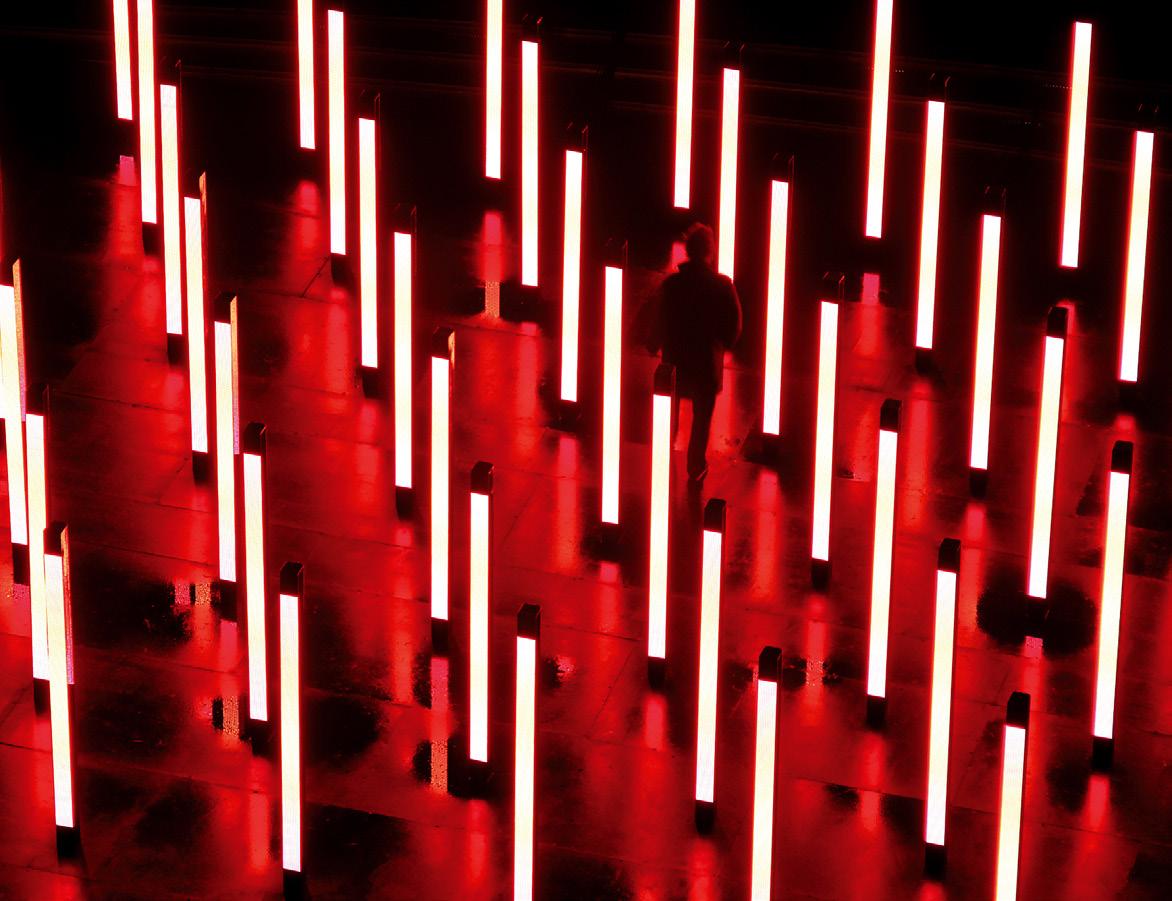
PULSE
PHILADELPHIA, PA

SWARM STUDY / IX
RANDOM INTERNATIONAL CHEMNITZ, GERMANY

LIGHT INSTALLATIONS
Artists use lighting in creative and interesting ways in order to manipulate the built environment with limited physical impacts. Light installations may be used on existing buildings, in parks on substantial landscape features, or as part of a larger installation of sculpture. They may be especially useful and impactful when used in infrastructure projects.
DOMINO PARK PLAYGROUND
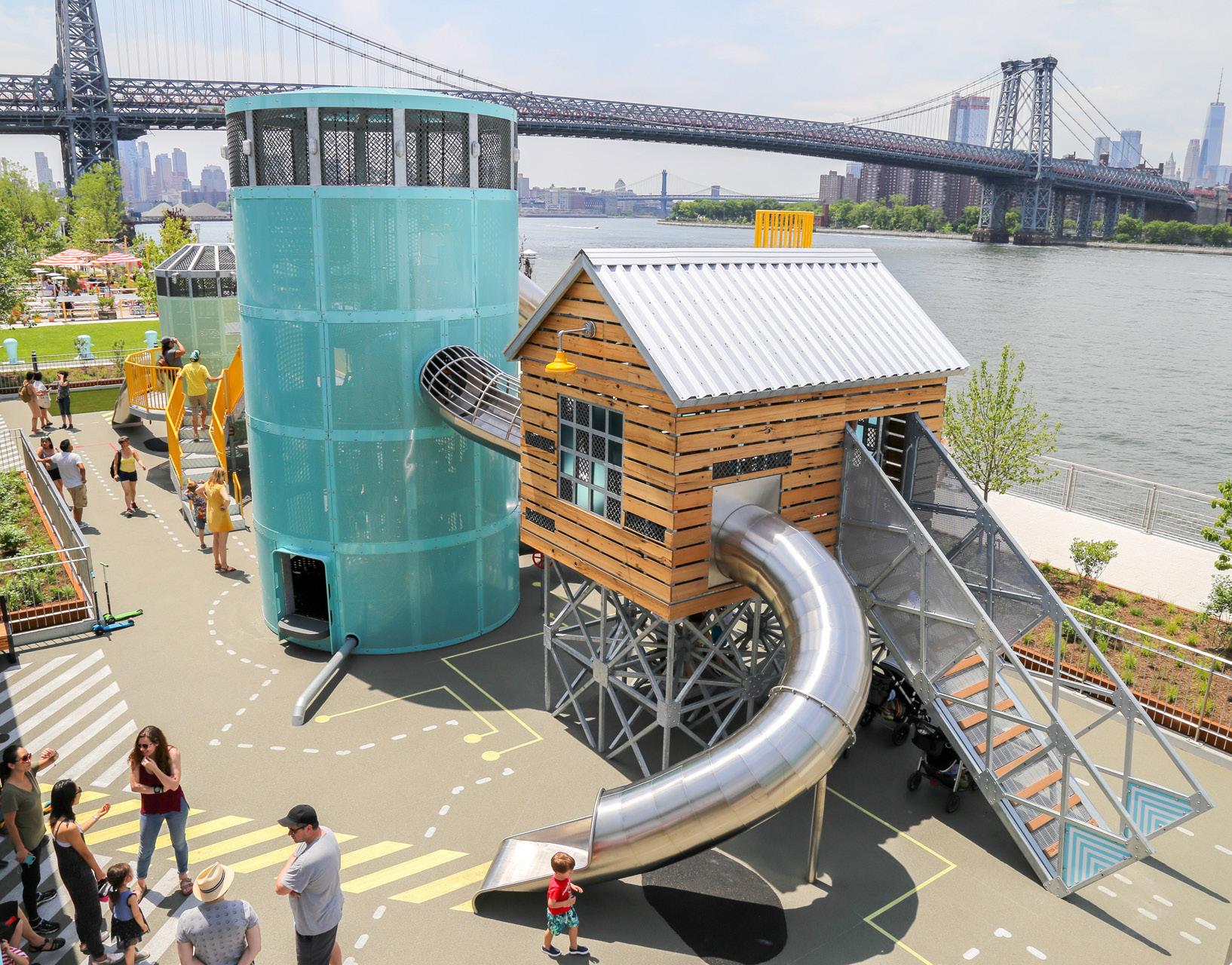
ARCHITECTURALLY-INTEGRATED
Architecturally-integrated artwork yields a bespoke, non-standard architectural element for both interior and exterior settings. Artists may lead teams of designers, architects, and engineers to realize such a project, but the Artist will drive the artwork’s unique, inspired vision. Such projects may emerge during a building’s construction process, or an Artist could be commissioned for an artwork after a building’s completion.
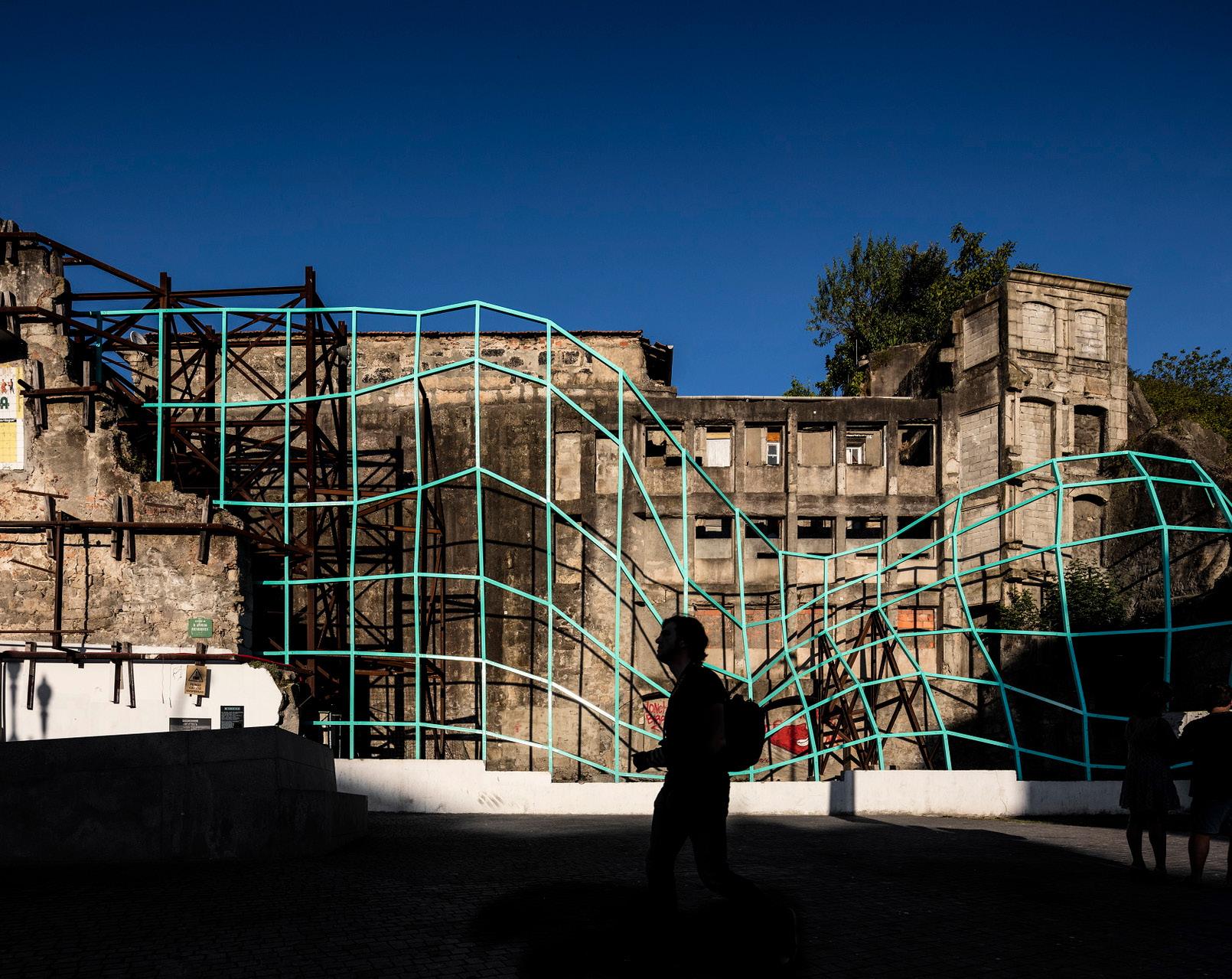
CAIXA FORUM VERTICAL GARDEN


CHAPTER TWO PUBLIC ART PROJECTS
PUBLIC ART PLACEMENT
THE PROMENADE
THE CENTRAL GREEN
THE RIVER TO RANGE
THE CHAPEL TRAIL
ADDITIONAL OPPORTUNITIES

PUBLIC ART PLACEMENT
PUBLIC ART AS A DYNAMIC EXPERIENCE
Many of the voices that shaped this plan shared the desire for The Point’s public art collection to celebrate Utah’s dynamic, vibrant story, and offer everyone the opportunity to experience something ICONIC.
To accomplish this, works of art should harmoniously integrate design, experimentation, and surprise through captivating placement and storytelling.
The study of this space revealed distinct placespecific characteristics and a clear approach in investment, placement, and content. Priority sites have been identified for large-scale, curated works and highly competitive calls for art which will create a place-defining experience that unequivocally sets itself apart on a global scale.
SITE PLACEMENT OF PUBLIC ART
All artwork purchased or commissioned in whole or in part with public art funds must be displayed, installed, or executed (if performance-based) on land, facilities, properties, and/or buildings that are owned or managed by the Land Authority, its designees, agencies, and/or authorities. Artwork may be placed on another entity’s property so long as the property is located within the Land Authority’s jurisdiction limits and an agreement
between the Land Authority and the entity that owns the property is executed and approved by the Land Authority. All artwork purchased with public art funds must be displayed in a visually accessible location for the public to receive the most enjoyment and benefit from the art.
Placement of works of Public Art, when utilizing Public Art Fund, should meet one or both of the following definitions outlined in the Public Art Policy a) is located in Public space, when used herein, shall mean any area or property (public or private) which is accessible and visible to the general public a minimum of 8 hours per business day and b) is located on Publiclyowned land, when used herein, shall mean any land open to the public and managed by the Land Authority, its designees, agencies, and/or authorities.
CONSIDERATIONS FOR PRIVATELY OWNED PROPERTIES
In order to maintain the integrity of a public collection it is critical that public art funding is only spent on artwork that is placed in the public realm or public right-of-way as accessibility and ownership by the public is a critical component of public art.
Special considerations may be made to artwork that is placed on private property, such as a building facade, granted that the artwork
1) be clearly and directly visible from public space or the right-of-way 2) an easement be granted to the collection’s governing body so that the public maintain ownership of the work 3) the work may not be integral to any private structure and would be removable whether permanently or temporarily for maintenance.
When determining whether or not a piece located on private property should be considered for the public collection it is imperative that the governing body consider all of the above as well as the long-term maintenance costs and needs associated with a work of art located on private property.
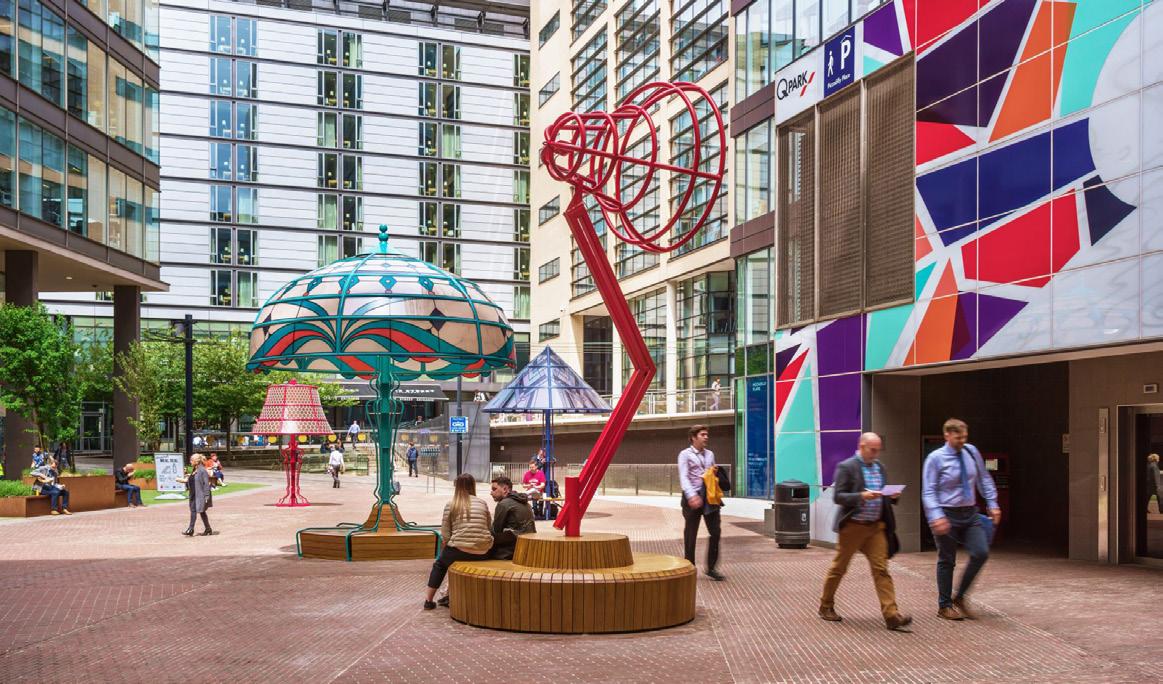
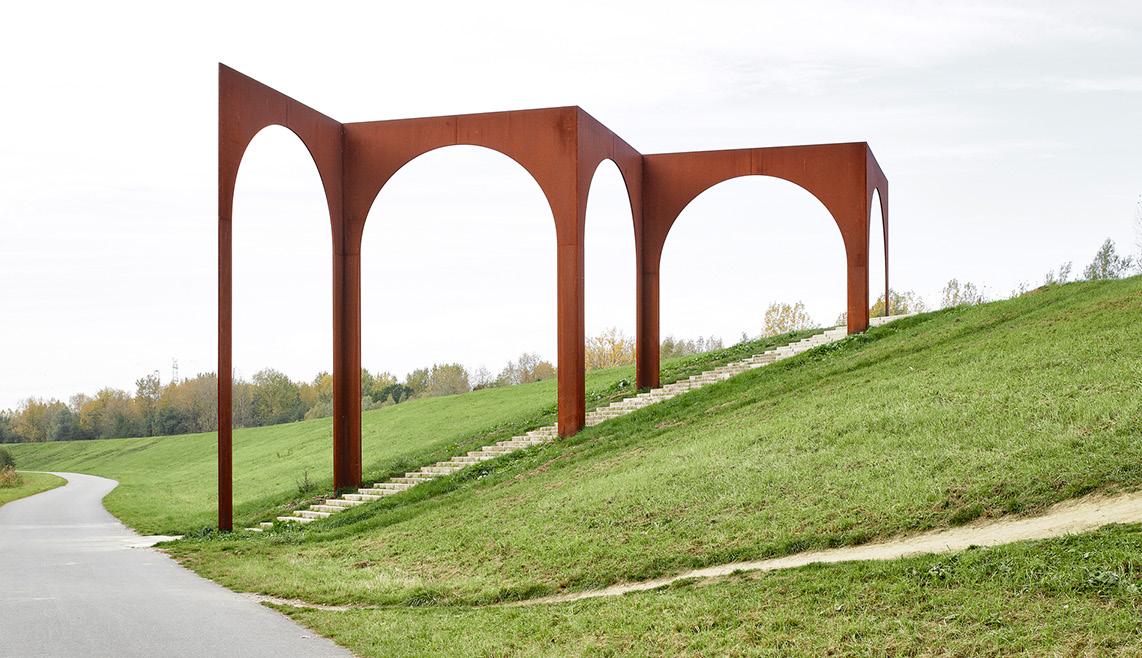
ITERATIVE PUBLIC ART PROJECTS
An iterative project is one that has many parts united by the same theme. For example, a park may commission an artist to create a series of sculptures placed in various locations around the park, united by the theme “Larger than Life Flowers.” Another example could be a recurring design motif or symbol placed in a range of sites around a town center. Imagine a beehive element designed by an artist and integrate into public realm features.
MANCHESTER LAMPS ACRYLIZE | MANCHESTER, UK
CREDIT: “CREATIVE BOOM, 2 AUG. 2021, HTTPS://WWW.CREATIVEBOOM.COM/NEWS/NEW-GIANT-LAMP-SCULPTURES-SHINE-ALIGHT-ON-MANCHESTERS-EPIC-HISTORY-AND-CULTURE/. ACCESSED 29 NOV. 2024.
ART TRAILS + TRANSIT
Taking inspiration from the format of iterative works of public art, art that is placed along trails or integrated into public transit systems can shape our experiences as we move from place to place and provide a captivating, continuous experience for travelers. Art trails and transit interventions allow the artwork to act as the primary trailblazing element in public space and reinforcing visual identity over large expanses of space.

ARCADE GIJS VAN VAERENBERGH | ANTWERP, BE
CREDIT: URDESIGNMAG, 2023, HTTPS://WWW.URDESIGNMAG.COM/ARCADE-GALLERY-GIJS-VAN-VAERENBERGH/. ACCESSED 20 FEB. 2025. PHOTO MATTHIJS VAN DER BURGT
SINGLE-PRESENTATION PUBLIC ART PROJECTS
Single-presentation public art projects are those that do not repeat in multiple locations and their compositions are limited to one site. Examples of these kinds of projects include, a large-scale sculpture commissioned for a city hall lawn; a unique mural on the facade of a community center; or light installation that is engineered to complement the detailed architecture of a historic building. Single-presentation projects may be temporary, or long-term, and they are primarily characterized by their function as a landmark in public space.
UNNUMBERED SPARKS JANET ECHELMAN | VANCOUVER, CA
CREDIT: ECHELMAN, JANET. “UNNUMBERED SPARKS.” PHOTOGRAPH BY EMA PETER. DESIGNBOOM, 20 MAR. 2014, WWW.DESIGNBOOM.COM/ART/JANETECHELMAN-GOOGLE-INTERACTIVE-SCULPTURE-IN-THE-SKY-03-20-2014/. ACCESSED 26 NOV. 2024.

PLACEMENT STRATEGIES
HOW TO PRIORITIZE PUBLIC ART PLACEMENT
The following sections detail specific public art opportunities within The Point. This approach considered critical experience moments such as gateways, pedestrian nodes, terminating vistas, open spaces, and major convergence points. While the final design of the public spaces will ultimately determine the scale and installation of the art, the community’s vision for public art should be honored and the public art strategy should leverage these moments to create an experience-defining collection of artworks.
Additionally, the recommendations in following sections consider the thematic opportunities presented by the distinctive character areas within the development.
GATEWAYS TO THE SITE
Gateway artworks set the stage for visitors entering a new place, reinforcing visual identity and creating memorable first impressions. This sense of arrival provides a prime opportunity for artists to craft impactful and defining experiences.
The Point can leverage these opportunities to tell its story. Future design phases should identify the specific locations and envelopes for gateway artworks.
TRAILS & PEDESTRIAN NODES
Art along trails and pedestrian nodes can enhance the journey, creating moments of discovery and delight for those traversing The Point. These artworks can be integrated into the landscape, seating areas, or act as wayfinding elements, providing visual interest and encouraging interaction. Sculptures, murals, interactive installations, and even kinetic art can transform these spaces into dynamic and engaging experiences, inviting people to linger, connect, and appreciate their surroundings.
MAJOR CONVERGENCE POINTS
Major convergence points, where corridors of activity intersect, offer opportunities for impactful art experiences that draw people together. These locations can accommodate larger-scale installations and define these transitional moments between spaces, becoming focal points within the built environment. Art in these areas can foster a sense of shared experience, spark conversations, and invite viewers to stop for a moment and absorb the scenes unfolding around them.
TERMINATING VISTAS & OPEN SPACE
Terminating vistas and open spaces provide dramatic backdrops for public art, allowing for bold and impactful installations. These locations can typically accommodate
larger-scale works of art which may include sculptures, architectural interventions that define the space and create a sense of place. Artworks in these areas can serve as landmarks, community gathering points, or simply places of contemplation and reflection, enriching the experience of The Point and contributing to its visual identity.
GATEWAYS TO THE SITE

TERMINATING VISTAS & OPEN SPACE
TRAIL & PEDESTRIAN NODES
MAJOR CONVERGENCE POINTS

SECTION TWO THE PROMENADE
The Promenade will be a mixed-use development along a people-focused Main Street. It will include over 2 million square feet of office space, approximately 3,000 multi-family housing units, and 222,000 square feet of retail, shopping and restaurants, and grocery stores. Local boutiques and national retailers will coexist symbiotically to provide Utahns with an 18hour gathering place with premier shopping, dining and entertainment opportunities.
With a sidewalk network that runs parallel to the River to Range, the Main Street will feature a flexible design that can adapt in real-time to changing conditions. During large-scale events, the road will be closed to vehicular traffic and provide a safe gathering place for pedestrians.


THE EXPERIENCE
UP CLOSE, PERSONAL, AND LIVELY.
The Promenade, nestled between the River to Range and the Central Green is a vibrant urban oasis stands as a bustling retail district, anchored by a dynamic performance arts venue. Here, local boutiques and national retailers coexist harmoniously alongside a diverse array of dining and entertainment options.
The Promenade is designed to offer spacious sidewalks, inviting outdoor dining areas, minimal vehicular traffic, and a flexible land use layout capable of adapting to evolving needs in real-time. The pedestrian experience is envisioned to be bustling, bold, and wholly immersive, reflecting the vibrant energy of this urban space.
To complement this dynamic atmosphere, public art installations within the Promenade will be colorful, playful, and interactive, engaging visitors of all ages. Furthermore, the artwork will seamlessly integrate with existing infrastructure, offering unique artist interventions within elements such as furniture, streetlights, and pavers. This integration ensures that every aspect of the Promenade contributes to its lively, artful ambiance.

THE THREE ROOMS
THE PROMENADE
Within the design of the Promenade are three rooms intended to convey different themes that speak to the natural splendor of the State of Utah. These spaces provide prime opportunities for artwork deeply integrated into the site design that complements the intended theme.
These pieces might be created by a single artists over the three sites or a team of artists each with their own site. The scale of the pieces will be reflective of each spaces intended purpose and experience.
PROPOSED TYPOLOGIES
• Site-specific
• Functional
• Interactive
• Multimedia
ADDITIONAL CONSIDERATIONS
• Seek an artist with experience creating largescale, site-specific works of public art in urban environments.
• The Point could consider taking a curatorial approach with this work and inviting artists to submit concepts whose approach to creating public art aligns with the works goals.
• The Point should consider paying part of the art fee to bring the selected artists on sooner, allowing them refine concepts during the later stages of the design process.
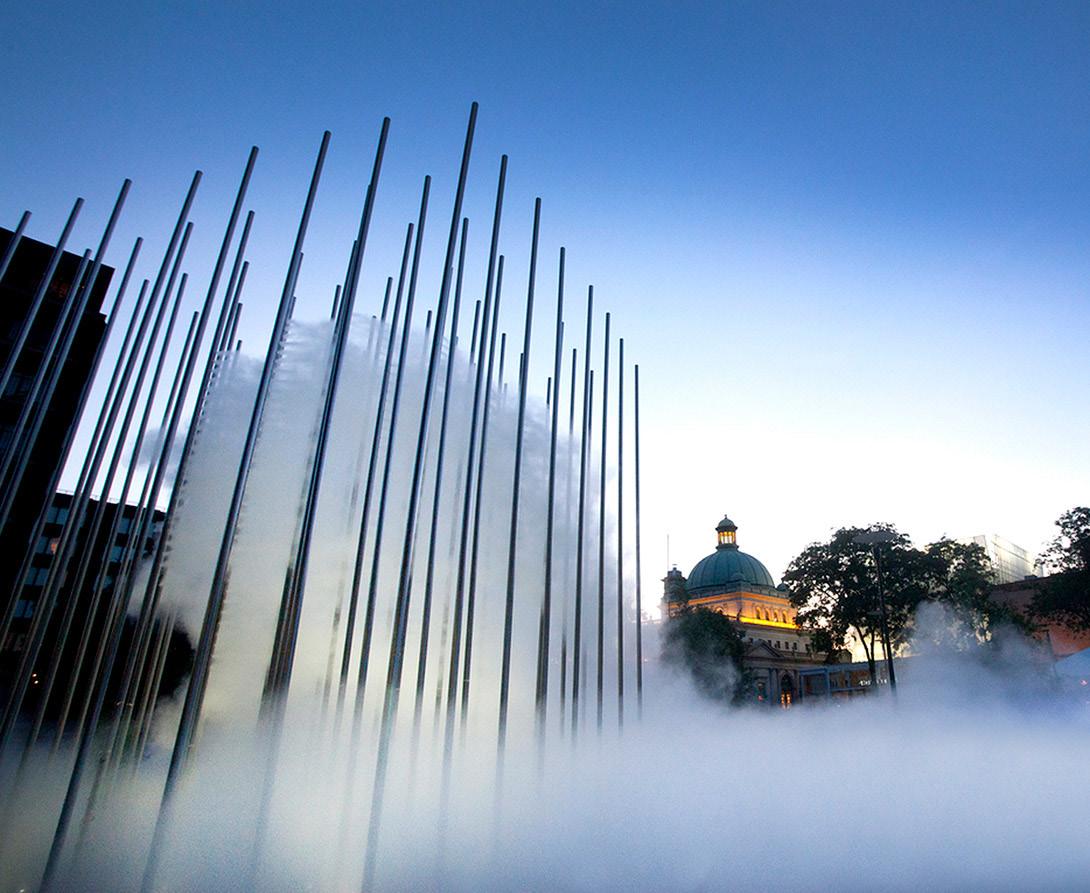

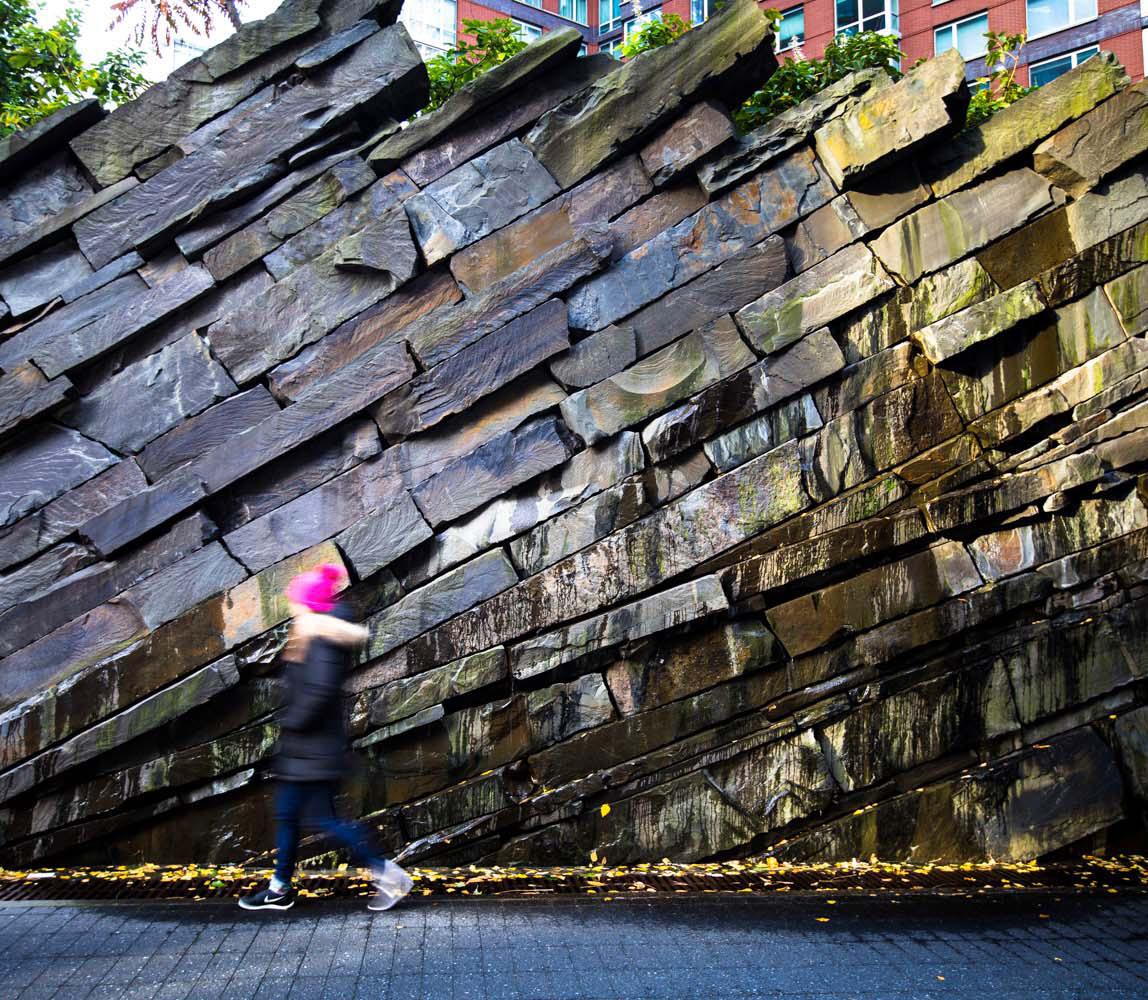

TYPOLOGIES
Functional, Site-specific, Interactive, Multimedia

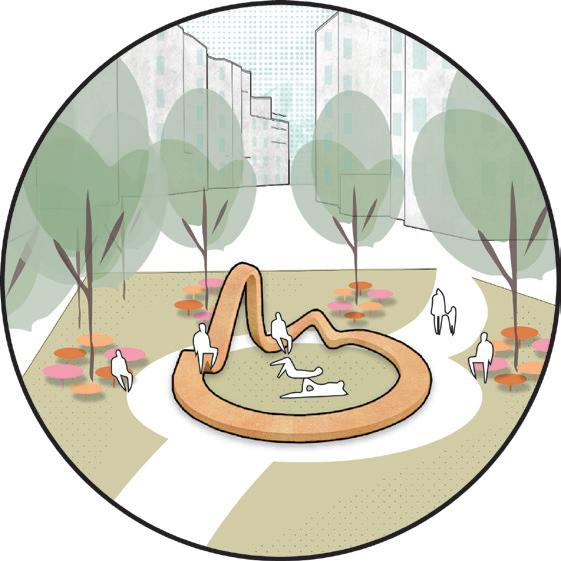

SECTION TWO
THE CENTRAL GREEN
The Central Green will be a place that brings together urban living and outdoor recreation for Utahns and their families. The 2.5-acre park will be at the center of an outdoorsy urban hub with nods to Utahs natural environment. Its use will be adaptive to accommodate seasonally appropriate activities year-round.
Central Green is intentionally located near an entertainment venue. Hosting up to 3,000 Utahns at each of the planned 200 events annually, the entertainment venue will offer fun and diverse programming for all Utahns.
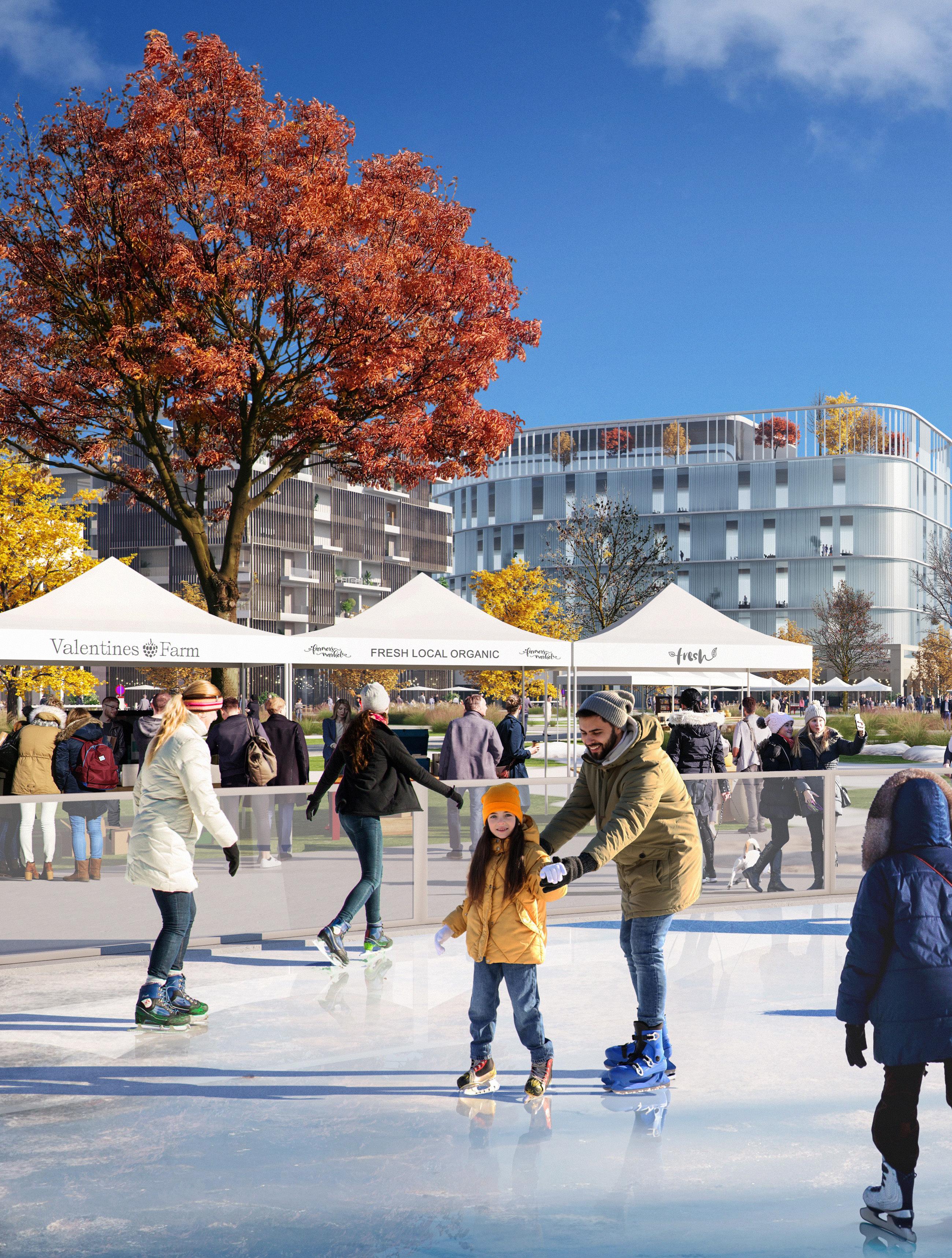

THE EXPERIENCE
GATHER, CONNECT, AND JUST BE.
The Central Green is slated to be the most dynamic and programmable outdoor public space and social epicenter and gathering point for all who visit and live here. This 2.5-acre park serves as the heart of the outdoor urban hub, meticulously designed to accommodate year-round activities, from ice skating in winter to vibrant concerts in summer.
The Central Green offers unique vantage points, where tree-lined spaces are surrounded by contemporary architecture and framed by majestic mountains. As the primary gathering space, the artwork here is designed to unite Utah families and visitors alike. Given the expansive space and diverse activities, the artwork will be architectural in scale, exploring utilitarian functions such as seating, shade structures, and pavilions.
Most importantly, the artwork must remind visitors of the awe-inspiring mountain landscape that envelops The Point. By framing the mountains and emphasizing community, the Central Green artworks will provide a bold and immersive experience, celebrating the natural beauty and fostering a sense of togetherness in The Point.

THE BEACON
CENTRAL GREEN
The Beacon at The Point, which is what it will be called until a concept is put forth, will be nestled in the Central Green. It will be a magnetic and dynamic work that draws viewers in and invites them to experience the work up close and personal.
PROPOSED TYPOLOGIES
• Sculpture
• Site-specific
• Interactive
• Multimedia
ADDITIONAL CONSIDERATIONS
• Seek an artist with experience creating largescale, site-specific works of public art in urban environments.
• The Point could consider taking a curatorial approach with this work and inviting artists to submit concepts whose approach to creating public art aligns with the works goals.

HTTPS://WWW.ARCHDAILY.COM/925059/ZEPHYR-PAVILION-MARC-FORNES-THEVERYMANY

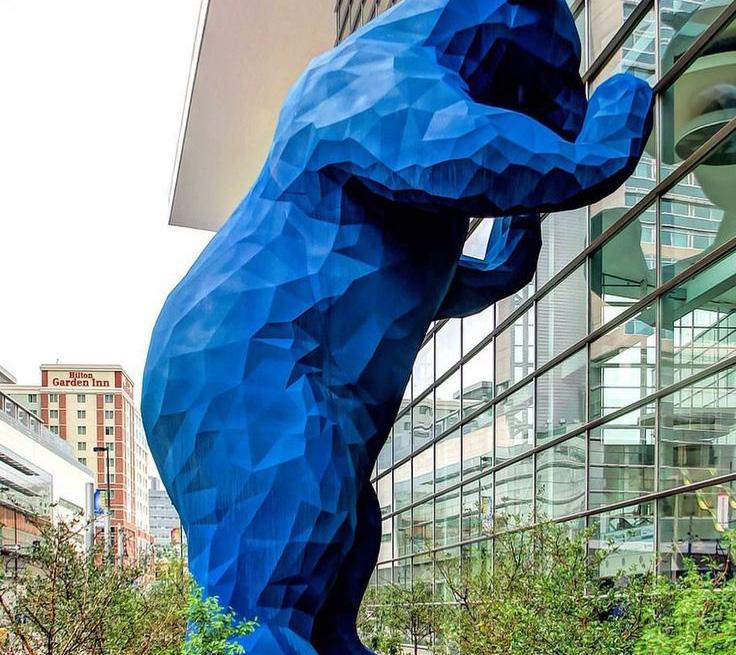

TYPOLOGIES
Sculpture, Site-specific, Interactive, Multimedia
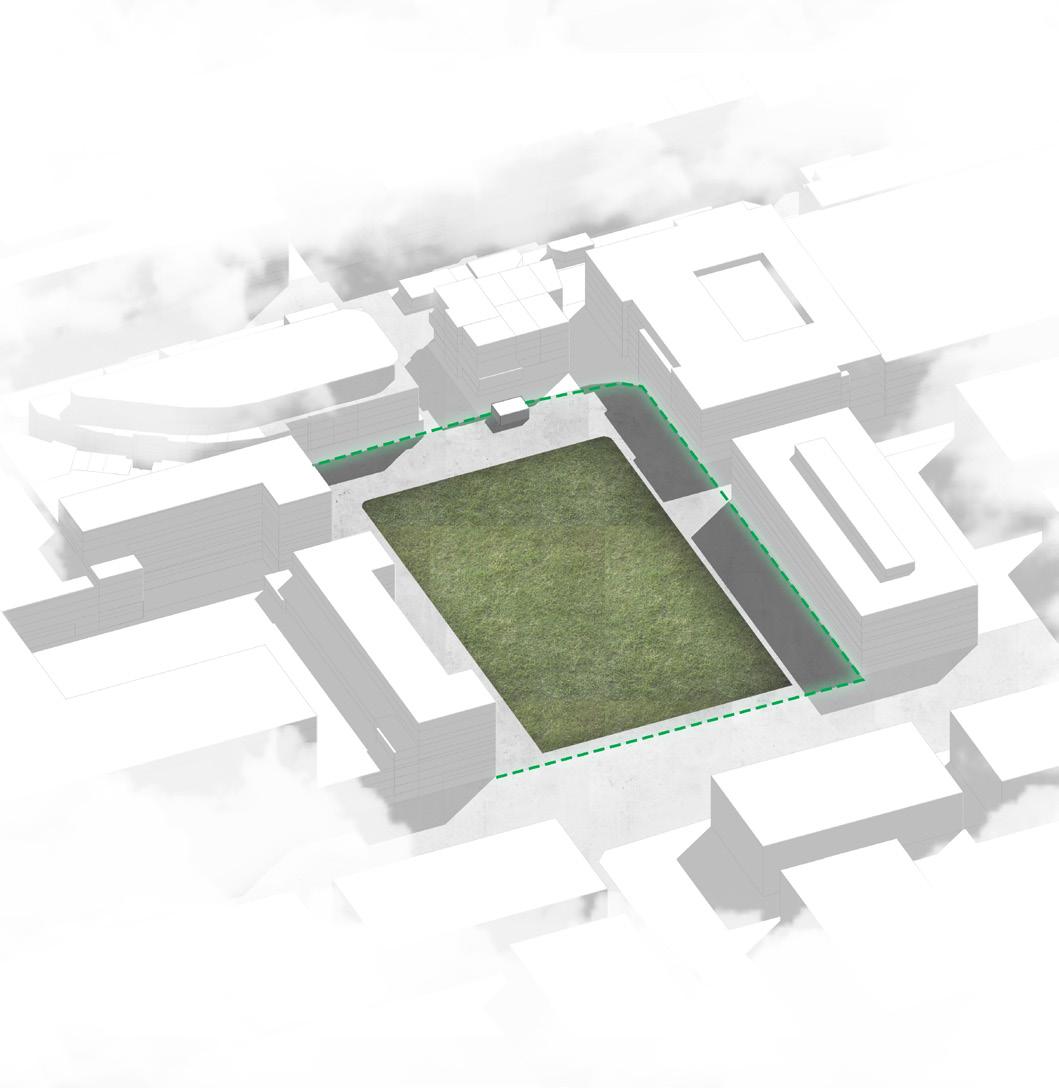
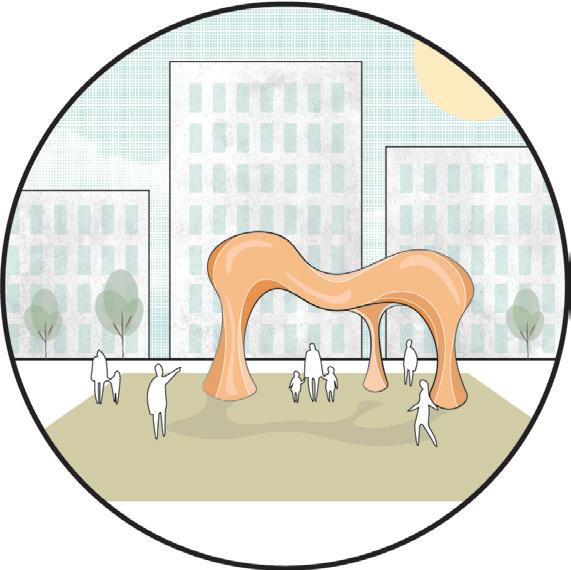

SECTION THREE
RIVER TO RANGE
The River to Range is a 1.4-mile paved regional trail that will connect the Jordan River Parkway Trail to the west with the foothills of Draper’s Corner Canyon to the east. For residents, employees, and visitors, the River to Range will encourage healthy living, provide recreational opportunities, offer an active way to commute to work, and establish a critical transit connection. As a linear park, the River to Range will also serve as a natural system for responsible rainwater management and the restoration of ecological habitats for native plants and animals.
The River to Range will stand as a lush centerpiece that will unite the community, natural surroundings, and the built environment. Art interventions in this space would amplify Utah’s majestic natural landscape, organic forms, and inherent beauty of nature.


THE EXPERIENCE
BEHOLD, THE VALLEY!
Welcome to the River to Range, a 1.4-mile paved regional trail bridging the tranquil beauty of the Jordan River Parkway Trail to the west with the rugged allure of Draper’s Corner Canyon to the east. Designed to seamlessly integrate with the natural landscape, this trail isn’t just a pathway; it’s a catalyst for healthier lifestyles, vibrant communities, and ecological stewardship.
For residents, employees, and visitors alike, the River to Range beckons as more than just a scenic route. It’s an invitation to embrace an active lifestyle, offering abundant recreational opportunities for hiking, biking, and leisurely strolls. Beyond leisure, it serves as a practical conduit for sustainable commuting, fostering a culture of eco-friendly transportation and reducing reliance on automobiles. Functioning as a linear park, it harmonizes with the surrounding environment, acting as a natural system in the heart of The Point.
In the heart of The Point, the River to Range isn’t just a trail; it’s a sanctuary—a respite from the hustle and bustle of urban life. As such, the integration of artwork into its design is paramount. Each artistic element, whether it be in theme, materials, or process, is thoughtfully curated to reflect the awe-inspiring beauty of nature. By immersing pedestrians in an artful celebration of the natural world, the River to Range ensures that Salt Lake City’s cherished identity as a bastion of environmental harmony is preserved for generations to come.

PORTER ROCKWELL BRIDGE
RIVER TO RANGE
The Porter Rockwell Bridge provides an ideal opportunity for a dynamic public art installation and leverages the bridge facade as a platform for the the experience.
The bridge itself poses a few constraints, access will need to be granted within the fabrication of the artwork for routine maintenance and inspection of the bridge. While this poses a creative challenge, evidence of works designed with these constraints in mind exist and are showcased in the examples.
PROPOSED TYPOLOGIES
• Sculpture
• Multimedia/Lighted Installations
• Mosaic
ADDITIONAL CONSIDERATIONS
• Seek an artist with experience creating largescale, site-specific works of public art in urban environments.
• Maintenance of the bridge will drive the final design with special consideration to the ability to access critical maintenance points.
• Lighting should be a critical component of the final experience.
• The Point could consider taking a curatorial approach with this work and inviting artists to submit concepts whose approach to creating
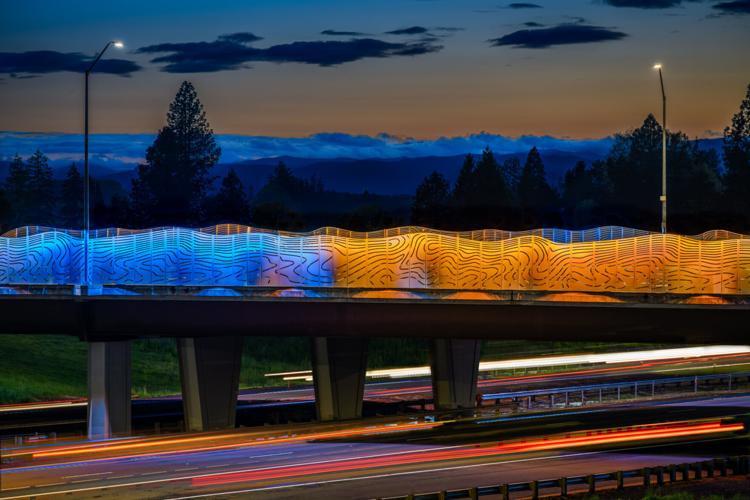



TYPOLOGIES
Sculpture, Site-specific, Interactive, Multimedia
PROPOSED



ART NESTS
RIVER TO RANGE
Designated for the River to Range is a series of Social Eddies which are intended to drive connection and act as small spaces of gathering within the park. Selecting a few of these to include art or be driven by an artistic vision would serve to create one of a kind moments with The Point’s park system.
PROPOSED TYPOLOGIES
• Sculpture
• Functional
• Interactive
ADDITIONAL CONSIDERATIONS
• Seek an artist with experience creating largescale, site-specific works of public art in urban environments.
• These works should consider function as well as form and may serve as shade shelters or include functional art such as seating and lighting.
• These works should be well integrated with the overall River to Range design and color and tonality should complement the look and feel of the park.
• Each “nest” may be a unique installation of its own, united under a consistent tone or scheme but completed by different artists.

PORTAL OF AWARENESS ROJKIND ARQUITECTOS | MEXICO CITY, MX
CREDIT: ROJKIND ARQUITECTOS. “PORTAL OF AWARENESS.” DESIGNBOOM, PHOTOGRAPH BY JAIME NAVARRO, WWW.DESIGNBOOM.COM/ARCHITECTURE/ROJKIND-ARQUITECTOSPORTAL-OF-AWARENESS/. ACCESSED 26 NOV. 2024.
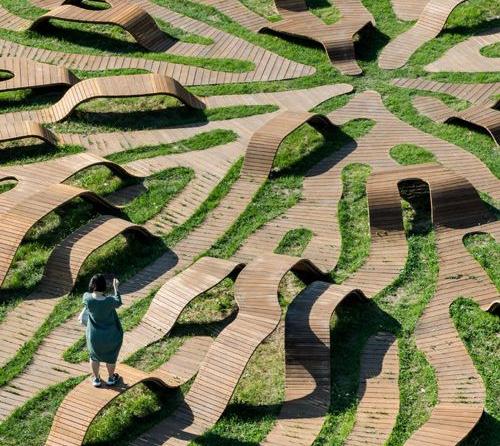
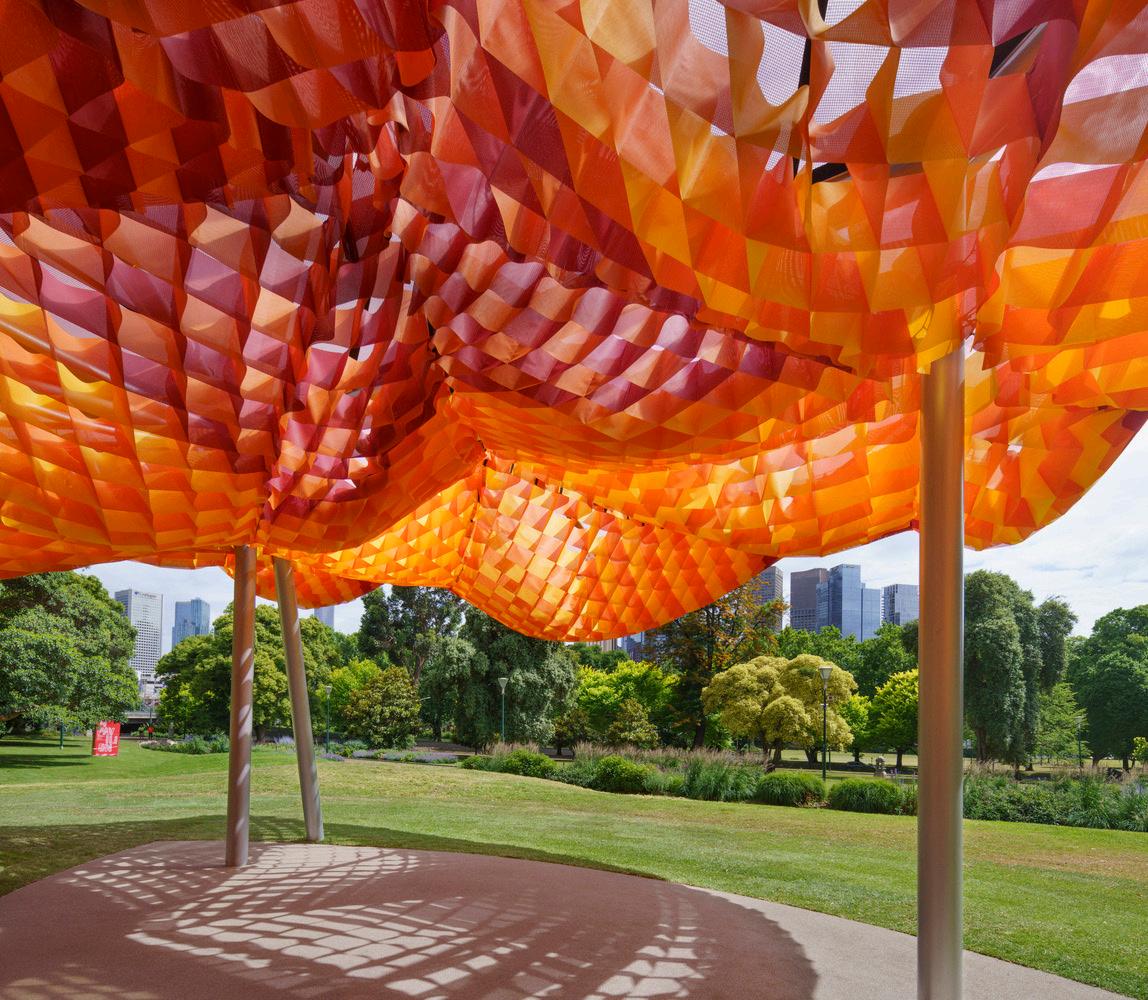
ALL(ZONE) | MELBOURNE, AUS
“MPAVILION IN MELBOURNE.” ARCHDAILY, 10 DEC. 2023,ACCESSED 26 NOV. 2024.

TYPOLOGIES
Sculpture, Functional, Interactive



LIGHTED TRAIL
INSTALLATIONS
RIVER TO RANGE
Art could serve to play a defining role in the day-to-night experience of the River to Range.
A system of lighted trail artworks could allow for small-scale moments within the park that provide an entirely different impression at night.
PROPOSED TYPOLOGIES
• Sculpture
• Multimedia
• Lighted Installations
ADDITIONAL CONSIDERATIONS
• These artworks may be nature themed or reflect Utah’s natural wonders.
• These artworks might be inspired by natural light sources within nature such as bio luminescence or the night sky.
• These works may be completed by one artist, a team of artists or over the course of several smaller calls for art but the theming of these works should feel collective.
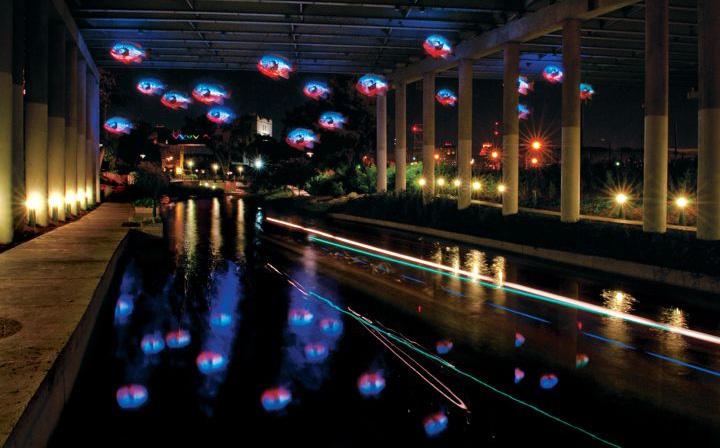



TIMING PRIORITY
PLACEMENT

TYPOLOGIES
PROPOSED INVESTMENT 2032
RIVER TO RANGE
Sculpture, Multimedia, Lighted Installations

$2,500,000

SECTION FOUR CHAPEL TRAIL
The Chapel Trail, a transformative pathway that starts at the Central Green, the communal heart of the site traverses the Promenade, crosses the nature-centric River to Range, and meanders through the development, culminating at the site of the Historic Chapel. This essential artery seamlessly connects all major activity hubs, providing a major pedestrian route that intersects with these vital public realm spaces.


THE EXPERIENCE
MOVE AND REFLECT.
As pedestrians move from the bustling River to Range, they are embraced by the towering buildings on either side, and the pathway becomes lush with growth, gradually distancing itself from the sounds of city life. This deliberate progression from urban vibrancy to serene solitude invites travelers on a journey of spiritual reflection and selfdiscovery, echoing the trail’s deeper symbolic purpose.
The Trail’s ultimate destination is the Chapel, historic architecture and the last remnant of the prison that once stood on this site. It stands as a beacon of hope and a symbol of redemption. The artwork curated along the trail is thoughtfully designed to reflect this spiritual journey, culminating in an uplifting celebration of the Chapel’s unique architecture.
Each artistic element, whether in theme, material, or process, is curated to highlight progress, self-reflection, and the redemptive power of the Chapel. This ensures that the trail is not just a physical journey but an immersive experience, preserving the site’s historic identity and inspiring all who walk it.

REFLECTION SPACE
CHAPEL TRAIL
The site of the historic chapel carries thematic significance for the site, redemption, reflection, and looking forward to a new future converge in one destination. This historical connection makes this the ideal opportunity for a moment of reprieve from the hustle and bustle of more activity intensive public realm spaces. A artwork, perhaps suspended over the space or superimposed over the architecture would create the desired experience and encourage the audience to stop for a moment, sit still, and reflect.
PROPOSED TYPOLOGIES
• Multimedia
• Textile
• Architecturally Integrated
ADDITIONAL CONSIDERATIONS
• Seek an artist with experience creating largescale, site-specific works of public art in urban environments.
• The artwork should invite contemplation and embrace themes of renewal and redemption.
• The artwork should not place an undue risk to any historically significant architecture.
• The Point could consider taking a curatorial approach with this work and inviting artists to submit concepts whose approach to creating public art aligns with the works goals.
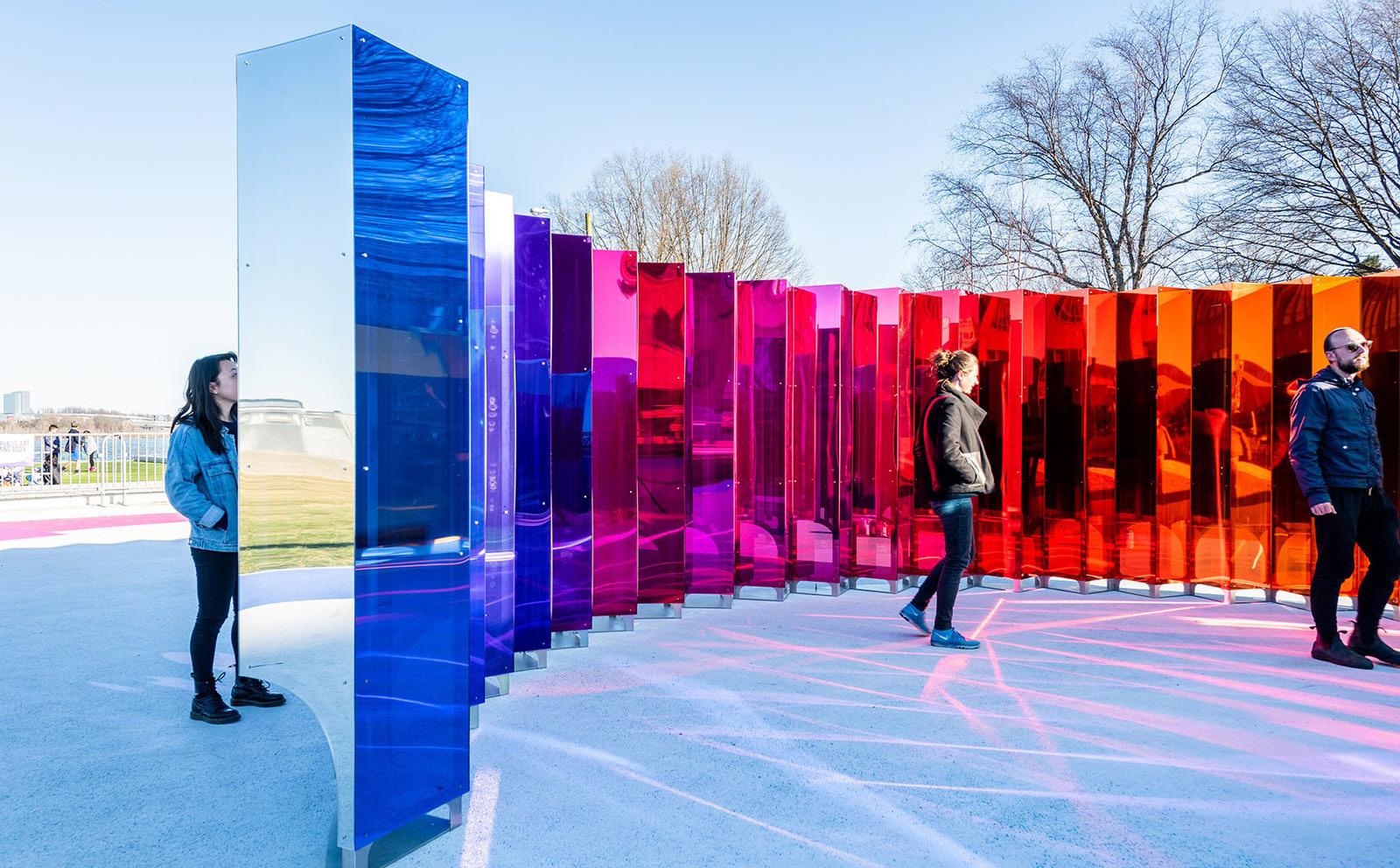
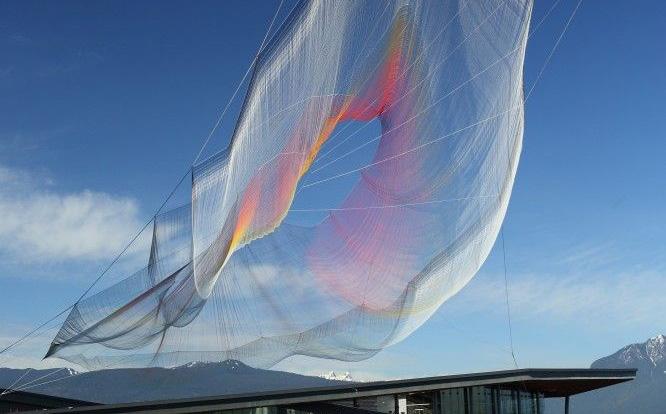


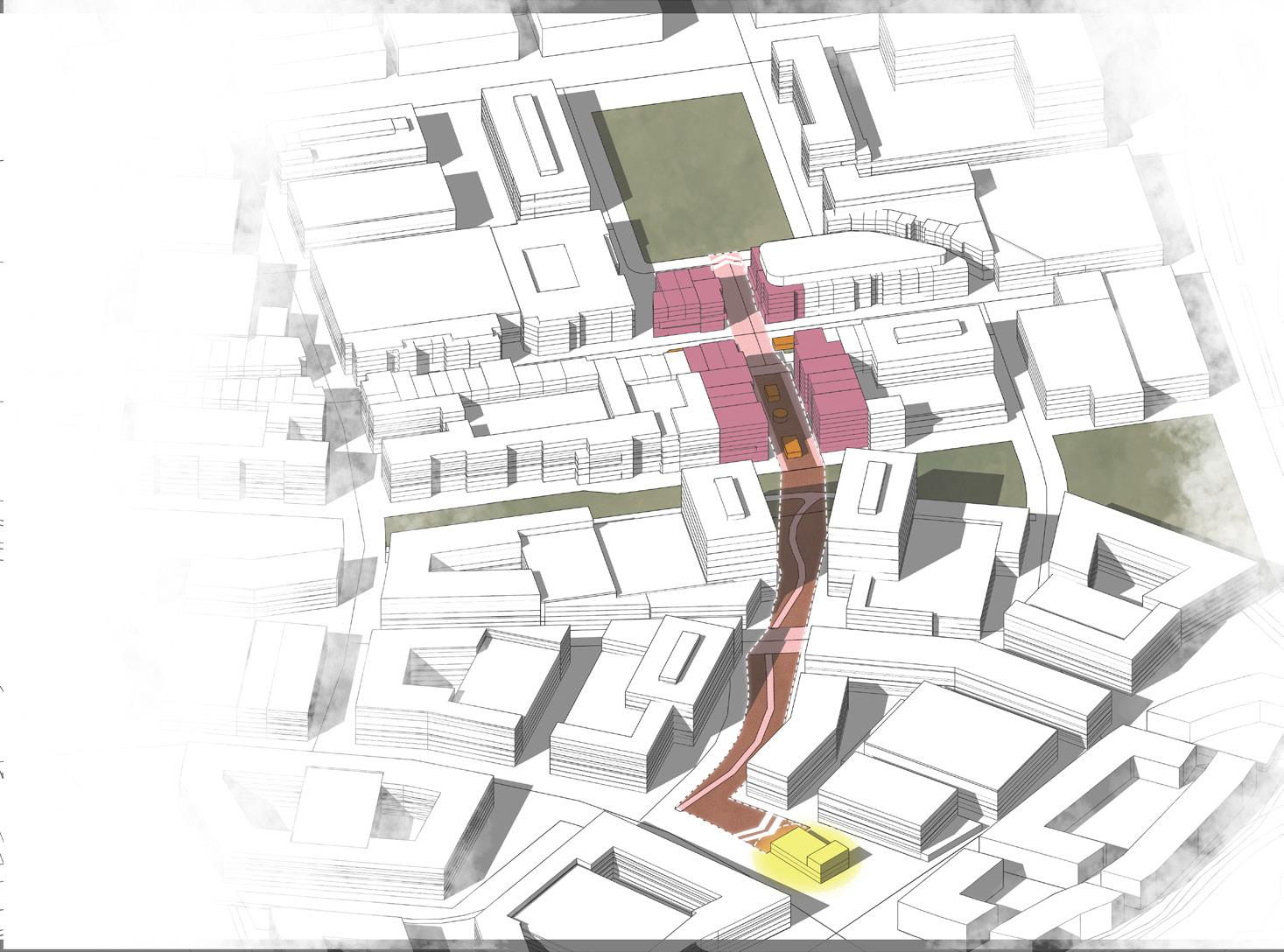
Sculpture, Multimedia, Textile
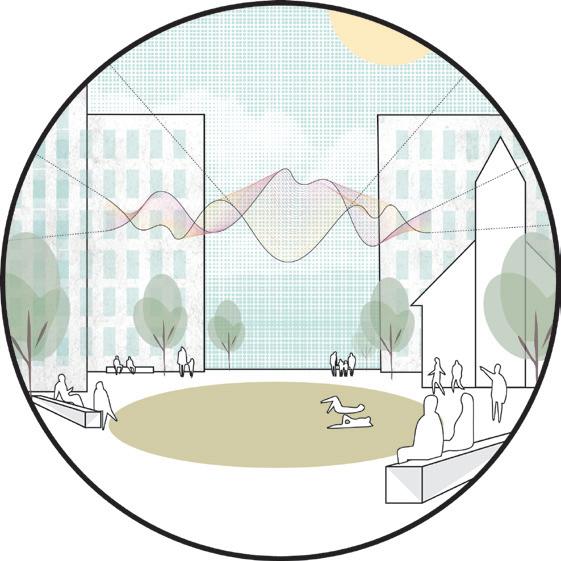

ADDITIONAL OPPORTUNITIES

AN EVENTFUL PATH
THE POWER OF BEAUTY
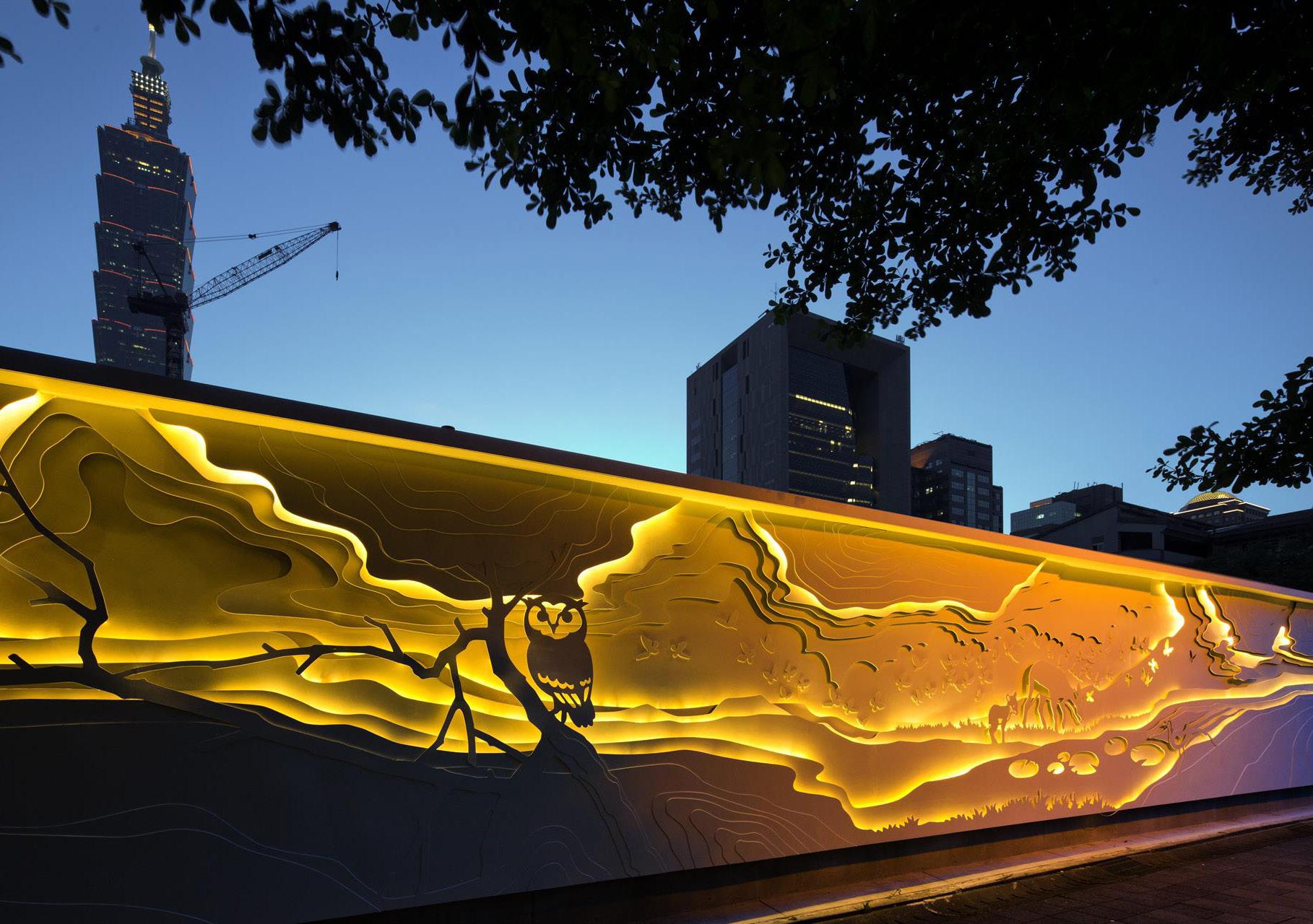
TRANSIT & TRAILS
Transit infrastructure is anticipated to weave its way throughout The Point, offering convenient mobility options via light rail and buses. These transportation arteries will seamlessly connect people across the site, with stations strategically placed to serve as small gathering hubs. These transit stations present an exciting opportunity to showcase local artists and events, infusing each stop with a touch of creativity and community spirit. These stations will serve as vibrant focal points within the landscape, enriching the journey for travelers and locals alike.
This innovative approach adds an extra layer of artistic intervention, providing pedestrians with a fully immersive experience as they traverse The Point.
These artworks may be funded utilizing the general fund.
ARCHITECTURALLY INTEGRATED
Architecturally-integrated artwork yields a bespoke, non-standard architectural element for both interior and exterior settings. Artists may lead teams of designers, architects, and engineers to realize such a project, but the Artist will drive the artwork’s unique, inspired vision. Such projects may emerge during a building’s construction process, or an Artist could be commissioned for an artwork after a building’s completion.
Special considerations should be taken to ensure the state-owned artwork is either integrated within publicly-owned structures or is removable should the state wish to deaccess the work or address maintenance concerns. State-commissioned artworks remain the property of the state and do not convey with privately-owned buildings and structures. Additional details are covered by The Point Public Art Policy.
These artworks may be funded utilizing the general fund.
PORTALS FOR NATURE
COLUMBUS, OHIO
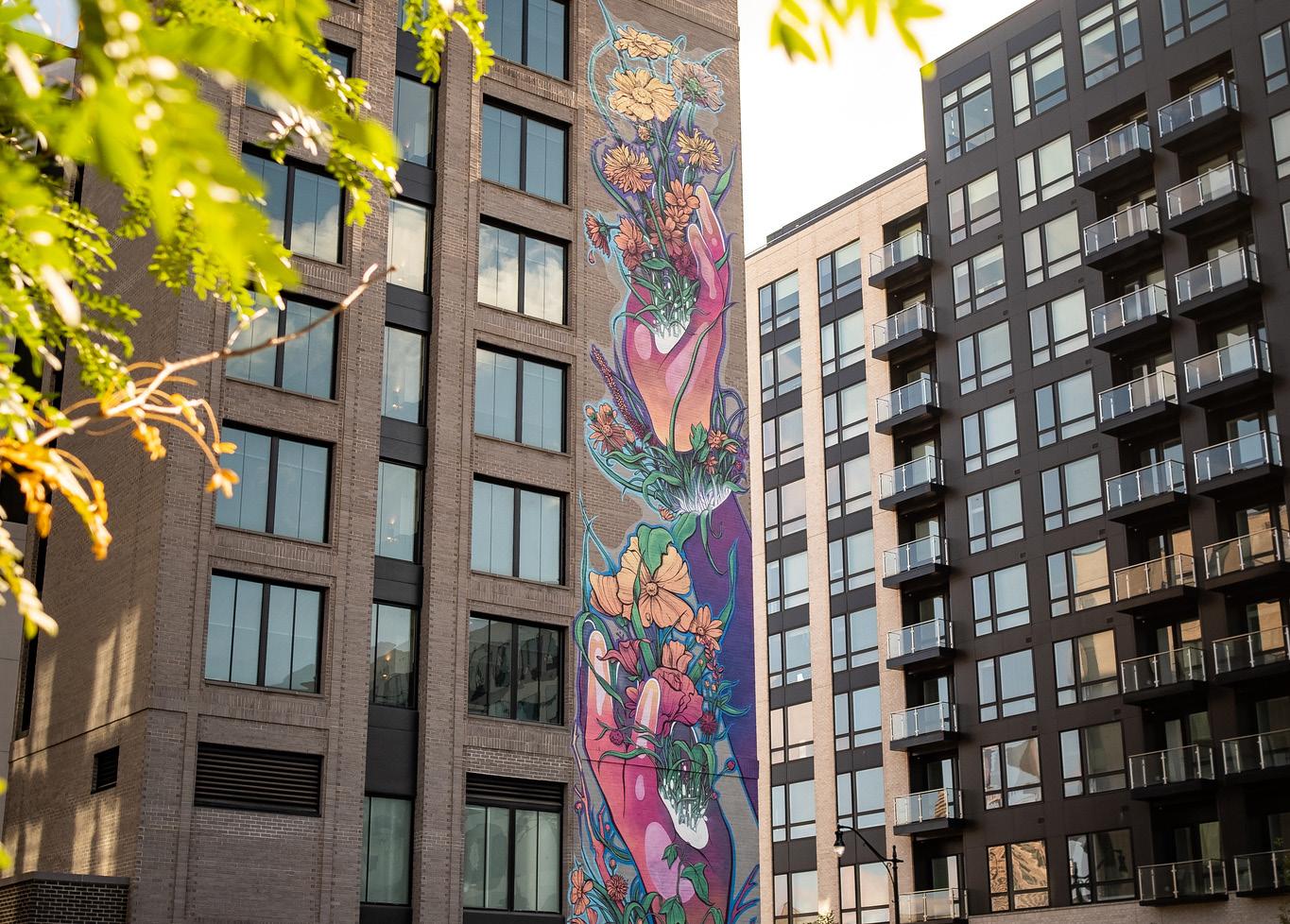
2023
MURALS
Murals are a relatively quick and highly impactful way to bring public art into the built environment. They provide an opportunity to transform blank walls into vibrant spaces, and can celebrate a place’s history, tell memorable stories, and be a source of beauty. In order to fund murals around the development a set amount of funding will be dedicated specifically to mural calls. These may be posted and commissioned in conjunction with the completion of a project or opportunities may be identified on an annual basis for mural program expenditures. The Point Public Art Advisory Board and the Design Review Committee will collaborate to identify mural placement opportunities and projects for mural fund expenditures.
These artworks may be funded utilizing the mural fund.
SKYHIVE
WISCONSIN, USA
Laurie Borggreve
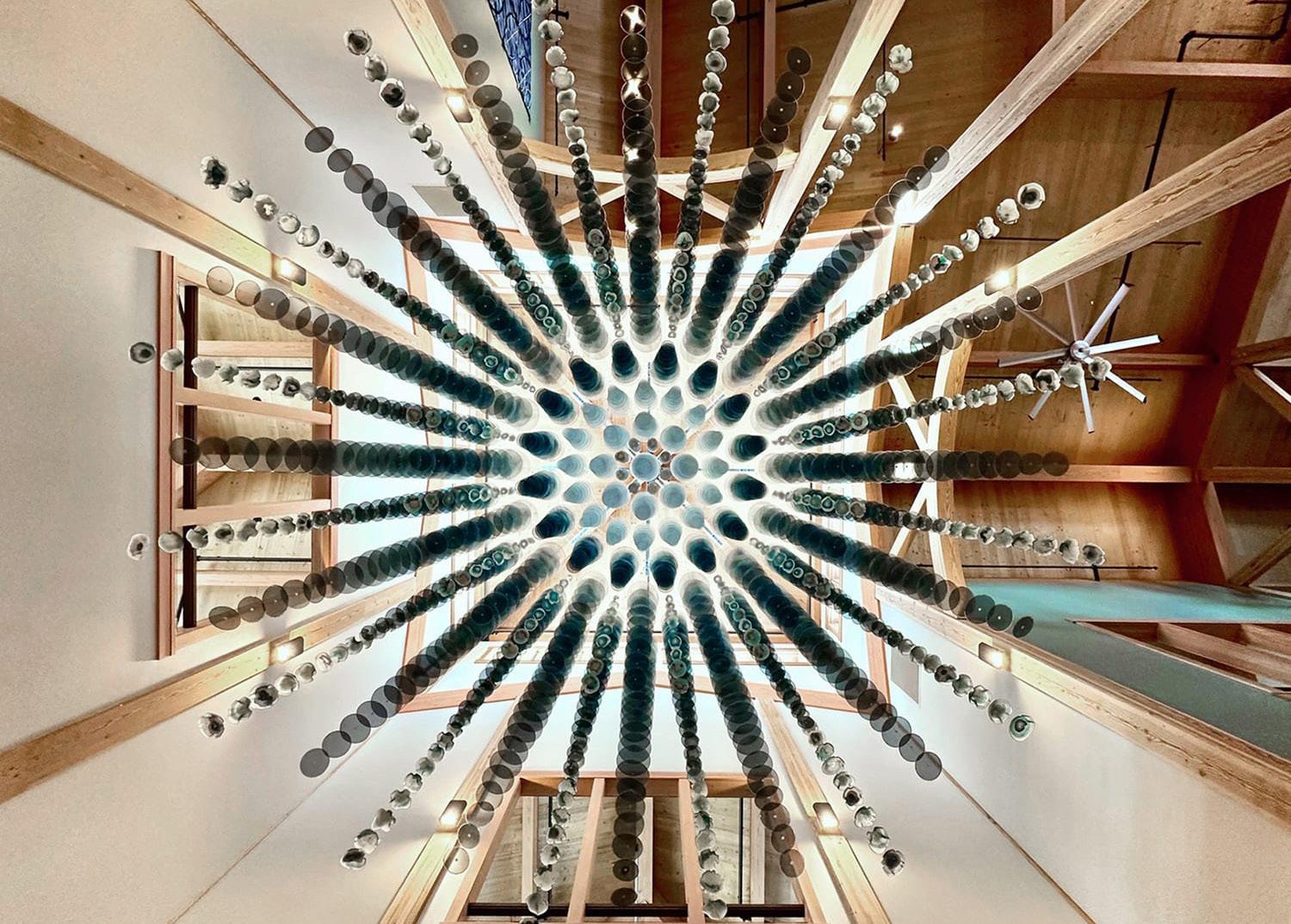
INTERIOR ARTWORKS
To encourage dynamic experiences with public art and enhance opportunities to showcase the State-owned public art collection, The Point is encouraged to consider interior display opportunities around the site. Factors such as humidity, light exposure, site accessibility, and foot traffic should be considered when curating artwork placement at The Point. The Public Art Advisory Board and the Design Review Committee should work jointly to ensure that artworks placed within the interiors of buildings meet priorities for public access and are appropriate for the building’s function.
These artworks may be funded utilizing the general fund.

INTERIOR WORKS
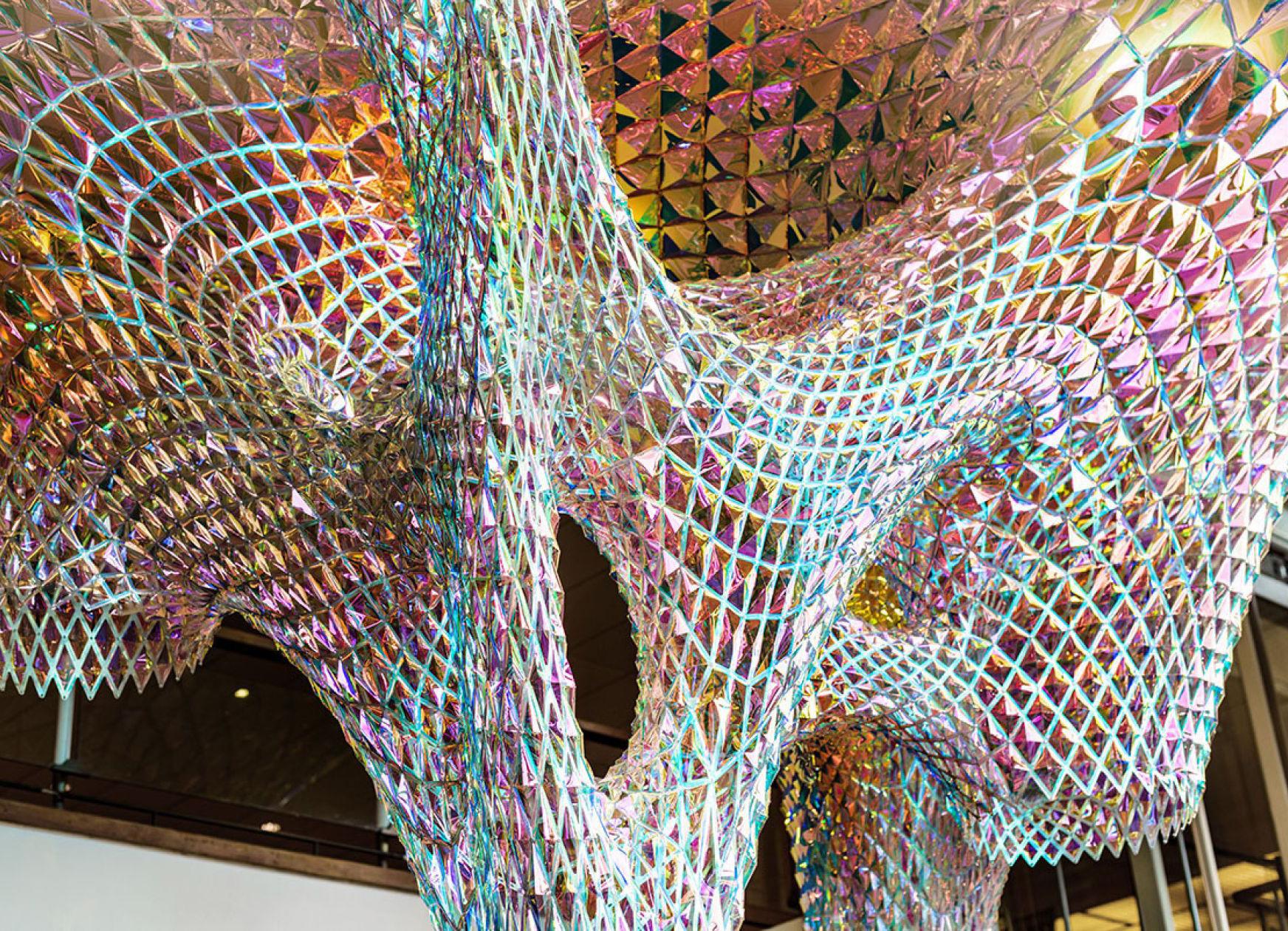
CONVERGENCE HALL
Convergence Hall will house the Innovation District’s work, including collaborative coworking space, classrooms, offices for universities, K-12 opportunities, and much more. Ground-level retail will offer restaurants and shopping that foster a vibrant environment for the community to live, work, and play.
Convergence Hall will provide much-needed office space and residential for Utah’s postsecondary institutions to collaborate on areas of shared interest, breaking down silos, increasing efficiencies, and adding unprecedented value to Utahns. The Point aims for each Utah university to be physically present at the site, unlocking the potential for cross-institutional synergy and statewide collaboration not previously harnessed.
These artworks may be funded utilizing funds earmarked as general artwork opportunities.
FUNDING MECHANISMS
FUNDING MECHANISMS
The Land Authority acknowledges the crucial role that public art plays in enhancing the cultural and aesthetic value of mixed-use developments. To achieve this, a collaborative funding model has been proposed leveraging both public and private funding sources. This public-private partnership, a hallmark of the Utah way of building community, will ensure that The Point boasts a rich tapestry of diverse public art experiences strategically placed throughout the entire development. By integrating art into the fabric of the site, we aim to create an environment where both Utahns and visitors alike can engage with and appreciate our shared stories and creative visions, fostering a truer sense of place and unique cultural identity.
Local arts and culture funding strategies draw from multiple sources to create a consistent and sustainable stream for collection management, maintenance, and growth. One such publicprivate model is Santa Monica, California’s Cultural Arts Fund, which receives contributions from private development alongside publicly procured percent for art dollars. In addition, Santa Monica grants funds to local arts and cultural organizations to provide additional cultural programming and amenities to its community members.
Funding models for The Point’s Public Art Program would include primary contributions from the State and TPP alongside additional
funding streams that might be generated from several sources, such as: an excise tax assessed on alcohol sales within the site; a lease fee model that considers the arts as a key community amenity and driver of marketability for rental properties; or a hotel/motel tax from surrounding properties that leverage tourism revenue at The Point to create reciprocal value for the public collection.
UTILIZING PUBLIC ART FUNDS
The Public Art Fund not only provides dollars for the procurement of Public Art on POMSLA property but is also the primary source of funding for collection management and maintenance. To secure and sustain the future of the Public Art Program, specific buckets of funding should be earmarked within the Public Art Fund, these being:
The Maintenance Fund
Representing 15% of the total projected public and private contributions to the program, the Maintenance fund is critical to the future stewardship of the collection. This fund should be set aside and held in a trust that grows over time. The growth yielded should be reincorporated back into the Public Art Fund to support future collection growth and management.
Private Property & Interior Public Spaces
A sum of not more than 10% of the total fund may be utilized, with the proper agreements in place, for the placement of publicly owned works of art
procured and commissioned through the public art program on privately owned buildings (e.g. a privately-owned parking garage highly visible from public space) and within in the interior of public spaces (e.g. Convergence Hall).
The General Artwork Fund
The general artwork fund should be reflective of 10% of the total projected public and private contributions to the Public Art Fund. This fund may be utilized for projects identified by POMSLA and/or the designated Public Art Coordinator within public spaces. Examples of artworks for consideration include creative placemaking and wayfinding elements, architecturally integrated art designed by an artist, or functional, mosaic, and sculptural elements of a more intimate scale than the long-range projects currently planned. Expenditures for commissioned works of art exceeding $50,000 would trigger the convening of a selection panel as outlined in the Public Art Policy.
The Mural Program
Murals provide a dynamic, illustrative, and content-rich experience within the public realm. However, unlike more long-lasting works of art, the lifespan of murals is more predictably limited. To ensure a long-lasting, dynamic, and diverse collection at The Point, the Mural Program funds have been allocated separately from the larger fund, with an initial recommendation of $350,000 for the creation and execution of murals around the site.

CHAPTER THREE PROGRAM MANAGEMENT

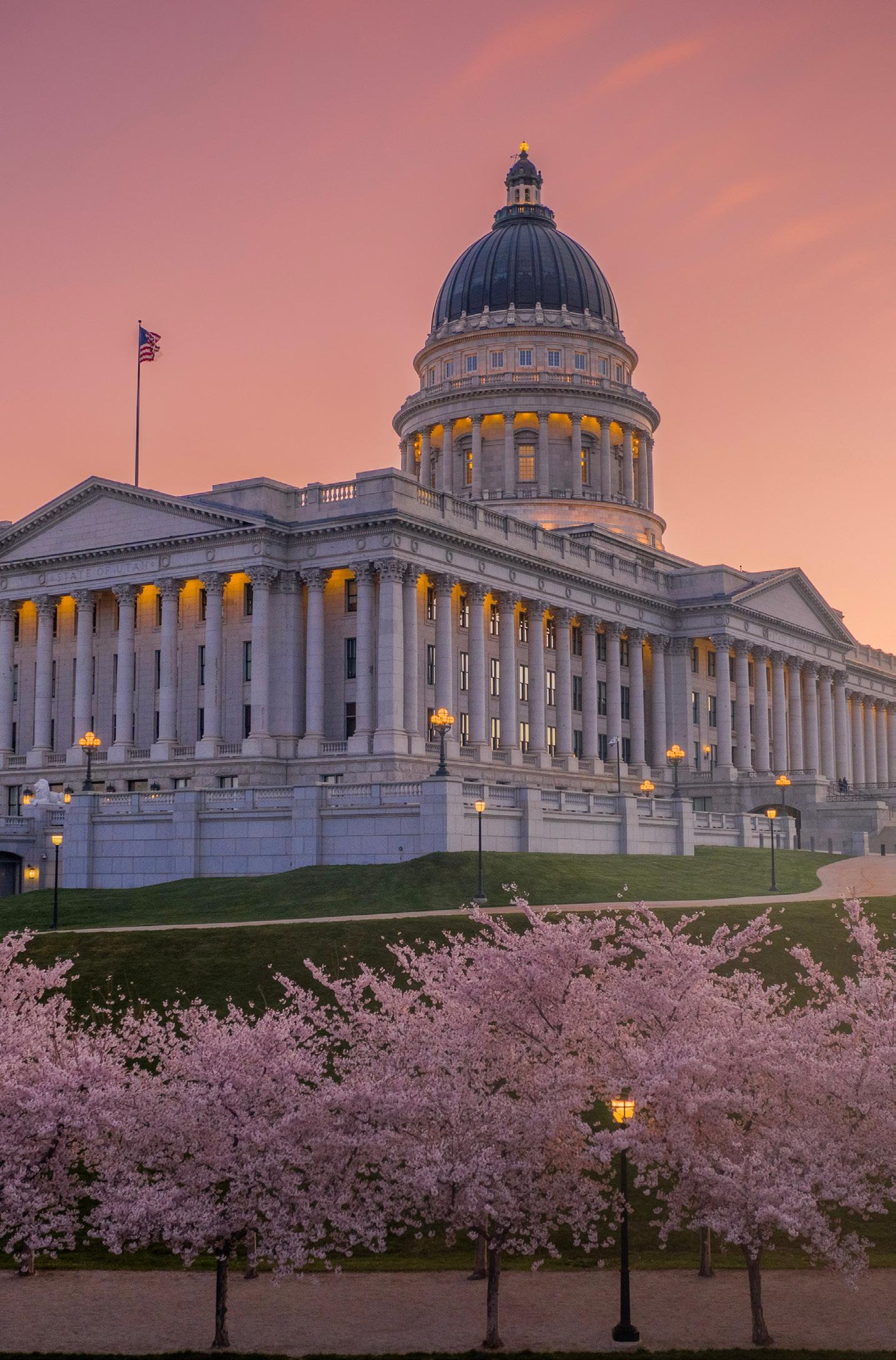
HOW TO USE THE PUBLIC FUND
The Public Art Fund is designed to support most public art activities, including the acquisition, administration, and maintenance of public art in The Point’s collection. As defined in the previous section, there are limits to the use of public art funding, based on the definition for public art. There are strict guidelines on what the funds can and cannot be used for, such as prohibiting spending on architect-designed artworks or mass-produced artwork.
The Public Art Fund for The Point can be sourced from various avenues including dedicated art assessments, capital improvement budgets, grants, private contributions, and other public agencies.
A separate Fund for Public Art Maintenance will be established to support the long-term maintenance activities for The Point Public Art Collection.
PUBLIC ART SELECTION PROCESS
Public Art acquisition processes vary based on project budget, project site, and the desire for art that is existing or will be newly-commissioned. In any case, selecting the artist is one of the most critical steps in acquiring public art. An open, equitable, competitive process that inspires the artist and engages stakeholders can be an enriching experience and lead to more creative and exciting public art. For projects being drawn from the Public Art Fund, the following process describes how Public Art Plan-informed design criteria aligns with desired public art projects.
The Public Art Coordinator, further defined on page 71, will facilitate the process of sharing the Public Art Advisory Board’s project recommendations to the Design Review Committee.
The Public Art Coordinator will collaborate with the DRC to confirm project parameters, including desired materials, placement, and context. The project budget will be pre-determined within the annual public artwork plan based on available funding for a given year. This will be further vetted by the Public Art Coordinator and Public Art Advisory Board prior to reviewing the project parameters with the Design Review Committee.
The Public Art Coordinator will prepare a Project Charter, that includes, but is not limited to, the following:
• Project budget
• Project site(s)
• Applicable materials
• Project theme
• Project goals
• Project timeline
Upon confirmation of these parameters, the DRC will issue a Certificate of Appropriateness. If proposed parameters are not consistent with the Design Requirements, the DRC will not issue a Certificate of Appropriateness, but will identify in writing to the Public Art Coordinator the reasons for its determination and identify any changes needed to ensure that the Project Charter is consistent with the Design Requirements.
The Public Art Coordinator will create an RFP, based on the Project Charter, and a selection committee will be assembled.
The selection committee will identify at least three but no more than 5 artists from the Pre-Qualification list who will be invited to submit proposals for the project. The artists will receive compensation for their proposals.
The selection committee will score artist submissions based on the following criteria:
• Overall Concept
• Qualifications and Experience
• Past Projects
• Ability to Meet Timeline
• Project Understanding
• Budget/Project Cost
The selection committee’s recommendation will be shared with the Public
Art Advisory Board, further defined on page 70, who will accept or decline the proposal to move forward for approval by the Land Authority.
The Public Art Policy fully outlines the various courses of action for public art acquisition, which will be tailored to each public art acquisition opportunity. As indicated above, all public art projects at The Point will be funded by the Public Art Fund.
PUBLIC ART POLICY
A comprehensive public art policy for The Point is a critical first step to responsibly build the collection through best practices and sound governance. This policy— which outlines acquisition processes, conservation, funding structures, and beyond—will support short- and long-term public art goals at The Point.
The Public Art Policy outlines the roles and responsibilities of The Point of the Mountain State Land Authority, the Design Review Committee, regional partners, and The Point stakeholders in the development, funding and implementation of The Point Public Art Program. The Plan provides guidelines and requirements for the development of a Public Art Work Plan annually, the funding and acquisition of public art, the selection of artists and artwork, the implementation and conservation of The Point Public Art Collection. It is intended to ensure that The Point Public Art Program is implemented in a fair and consistent manner that enables a communityoriented, artistically creative process and promotes the cultural, aesthetic and economic vitality of The Point.
PUBLIC ART POLICY
This policy establishes the mission, vision, and guiding principles for the program as well as overall definitions for the policy.
COLLECTION MANAGEMENT
This policy establishes the management practices of artworks acquired through the solicitation and donation processes. These pieces are considered part of The Point’s public art collection and must be cared for in accordance with the Policy and Procedure for Maintenance Policy and the Collection Management Policy. The Collection Management Policy is intended to maintain the value of The Point’s Permanent Collection and guard against inappropriate disposal of any of its pieces.
DONATION POLICY
This policy establishes the donation process for artworks not commissioned for The Point. Each proposed donation must come with a plan to fund and deliver ongoing maintenance, or the resolution accepting the public art must identify how maintenance of the donated public art will be funded. Donation requirements, the responsibilities of the donating party, and the process for donating a piece of public art are outlined in this policy.

commissioned work, and inspection guidelines are included.
THE ROLES AND RESPONSIBILITIES
The Roles and Responsibilities chapter outlines the duties of the Land Authority, its staff, and its agencies in the funding and implementation of the The Point Public Art Program. The Plan provides guidelines and requirements for the development of an annual Public Art Work Plan, the acquisition of public art, the selection of artists and artwork, and the implementation and conservation of The Point’s Public Art Collection.
MAINTENANCE POLICY
This policy establishes the procedure for the maintenance of the future art collection. Direction for surveying the collection, working with future artists to establish a maintenance plan for any
The above policies are integral to the success of The Point’s Public Art Program. Each policy directs a specific aspect of the Program and ensures the Land Authority is following consistent procurement practices, maintaining
its commissions through long-term planning and maintenance, governing the program with strong public trust, and providing clear direction for artists, and donors to follow when participating in the program.
DEFINITIONS
Accession, when used herein, shall mean a procedure for the acceptance of artwork into the Public Art Collection.
Artist, when used herein, shall mean an individual generally recognized by critics and peers as a professional practitioner of the visual, performing, or literary arts, as judged by the quality of that professional practitioner’s body of work, educational background, experience, public performances, past public commissions, sale of works, exhibition record, publications, and/or production of artwork.
Should consultants, practitioners, or members of teams retained for other design, construction, or other services at The Point wish to be considered as artists for public art projects utilizing the Public Art Fund they will need to submit their qualifications and responses within the same public art selection process applicable for all artists and public art commissions at The Point.
The Point, when used herein, shall mean The Point, as located in Draper, Utah.
Certificate of Appropriateness, when used herein, shall mean a certificate issued by the Design Review Committee that confirms a project or artwork’s consistency with The Point Design Requirements.
Creative amenity, when used herein, shall mean non-standardized enhancements made to public space.
Deaccession, when used herein, shall mean a procedure for the withdrawal of artwork from the permanent collection and the determination of its future disposition.
Design Guidelines, when used herein, shall mean the guidelines set forth in the Disposition and Development Agreement (the “DDA”) by and between Land Authority and CLW POINT PARTNERS, LLC, a Delaware limited liability. Collectively, the Design Guidelines are comprised of Exhibit J, compliance with the requirements applicable to Major Elements set forth in Exhibit G-1 to the DDA, and where applicable, compliance with the requirements for development within the Priority Zone
Historic or civic objects, when used herein, shall
mean an object that is historically or civically significant.
Life Spans
Temporary: 0-2 years
Short term: 2-10 years
Medium term 10-25 years
Long term 25+ years
Mural, when used herein, means a large-scale artwork, painting, or mosaic, applied to or mounted directly to an exterior surface of a building, construction fence or other structure and that is visible from the public right-of-way. Its primary intent is to be artistic in nature, rather than purely information, creative signage and commercial signage.
Public Art Collection or Collection, when used herein, shall mean art objects owned by the Land Authority, its designees, agencies, and/ or authorities. Permanent Public Art must be located in a public place with public visibility, accessibility, and impact and shall have a permanence comparable to associated capital projects.
Public Art Coordinator or Coordinator, when used herein, shall mean the Public Art Program Coordinator as determined by the Land Authority.
Public Art Program, when used herein, shall mean the Public Art Program of The Point in Draper, Utah. The Public Art Program intends to promote private and public programs to further the development and public awareness of, and interest in, the visual arts and fine crafts and encourage the integration of art into public spaces and architecture at The Point.
The Point Public Art Advisory Board, or Advisory Board, when used herein, shall mean an Board advising on matters pertaining to the The Point’s Public Art Collection when the Land Authority is funding the creation or acquisition of new artwork in public spaces. The Advisory Board will promote awareness, access, and appreciation of public art at The Point. The Advisory Board also provides recommendations for public art placement at The Point and facilitates administrative duties required for the Public Art Program.
Public Art, when used herein, shall mean any of the following:
• sculpture, statues or monuments in any material or combination of materials;
• painting;
• murals;
• graphic arts including printmaking and drawing;
• photography;
• crafts in clay, fiber and textiles, wood, metal, plastics, glass and other materials;
• mixed-media, any combination of forms or media, including collage;
• performing arts;
• functional art such as street furniture, as defined by The Point Public Art Program;
• environmental art consisting of landforms and artistic landscape composition, or artwork created from natural (non-man made) materials.
The term “Public Art” does not include: reproductions by mechanical or other means of original works of art, except for limited editions, controlled by the artist, of original prints, cast sculptures, photographs or other works of art;
• decorative, ornamental, or functional elements

which are designed by a building architect or consultants engaged by the architect which are a traditional and typical element of architectural functionality or code standards;
• elements generally considered to be conventional components of a landscape architectural functionality or code standards including, but not limited to, plant materials, pools, paths, benches, receptacles, fixtures and planters;
• “Art objects” which are mass produced or of a standard design, such as playground sculpture or fountains, except pieces of historical significance to The Point;
• directional or other functional elements, such as supergraphics, signage, color coding and maps, except where sculptural pieces are used to define gateways in The Point;
• electrical, water or mechanical service for activation of the work;
• exhibitions and educational programs related to the work;
• and art that displays slogans, logos, mascots or commercial advertising.
Public Art Policy or Policy, when used herein, shall mean the policies approved by the Land Authority for the administration of the Public Art Plan.
Public Art Plan or Plan when used herein shall mean the Public Art Plan of The Point that pertains to Public Art, as it exists or may be amended. The Plan shall provide a process for the systematic selection and acquisition of pieces of artwork and locations of art to be included in public spaces.
Public space, when used herein, shall mean any area or property (public or private) which is
accessible and visible to the general public a minimum of 8 hours per business day.
Publicly-owned land, when used herein, shall mean any land open to the public and managed by the Land Authority, its designees, agencies, and/or authorities.
Public Art Program Update, when used herein, shall mean a document that outlines projects that are in-progress and will be initiated in coming fiscal years.
Relocation, when used herein, shall mean a procedure for the movement of an artwork from one location to another.
THE ROLES AND RESPONSIBILITIES
The Point of the Mountain State Land Authority shall administer the Public Art Program. Day-to-day responsibility for the program will ultimately reside with the Public Art Coordinator, and are outlined below in the Public Art Policy. The Public Art Coordinator may be a staff member of The Point of the Mountain State Land Authority or an outside consultant and have an oversight role for all of the public art projects executed within The Point. The Public Art Coordinator will collaborate with The Point of the Mountain State Land Authority staff or outside contractors to execute projects.
The Point of the Mountain State Land Authority
The Point of the Mountain State Land Authority has established the The Point Public Art Program. As state-appointed board members, the Land Authority is ultimately responsible for the outcomes of the Public Art Program.
Public Art Advisory Board
The Point of the Mountain State Land Authority appoints the members of The Point Public Art Advisory Board (The Advisory Board). The Advisory Board is a Public Art Advisory Board that advises on matters pertaining to The Point’s Public Art Collection when the The Point is funding the creation or acquisition of new artwork in public space, as defined above. Each member of the The Point Public Art Advisory Board serves without compensation. No member of the The Point Public Art Advisory Board may be the artist, provide the artwork, provide art consulting services, or have any interest in any artwork to be reviewed by the The Point Public Art Advisory Board, whether proposed by a private developer or the The Point.
The following qualifications should be considered when appointing the members of the Advisory Board.
1. One member of POMSLA
2. One member of TPP
3. Architect, or interior designer;
4. Landscape architect, urban designer, or urban planner;
5. Professional in the field of art;
6. Art or architectural historian or Art educator;
7. Artist.
The Advisory Board consists of up to seven (7), but no fewer than five (5) members.
The Public Art Advisory Board has the following responsibilities:
1. Advise The Point of the Mountain State Land Authority (the Land Authority) on the adoption of policies and procedures to acquire, commission, and maintain works of
2. Advise the Land Authority regarding proposed donations of art.
3. Recommend sites for location of public art in accordance with the public art master plan.
4. Provide recommendations and guidance in implementation of the public art master plan.
5. From time to time, The Point Public Art Advisory Board shall provide updates or revisions to the public art master plan that identify proposed locations and criteria for public artwork, art selection, and placement criteria, and other program recommendations, to reflect the changing environment of The Point. It is the intent that such a master plan be updated every five (5) years.
6. Conduct, with the assistance of The Point staff, calls to artists regarding installation of art as part of public projects and regarding installation of art using the Public Art Fund.
7. Provide recommendations to the Land Authority on the maintenance of The Pointowned artwork to preserve and protect the public art in The Point’s collection.
8. Provide recommendations to the Land Authority on the deaccessioning, removal, or replacement of public art owned by The Point.
9. Advise the Land Authority regarding murals to be installed at The Point.
10. Propose recommendations to the Land Authority regarding the public program.
11. Report to The Point, on an annual basis, the status of the public art program, the application of the master plan, the use of public art funds and the fund balance.
Any member serving on the Advisory Board is ineligible for a public art project by The Point during their membership and for an entire year
following.
Public Art Coordinator
The Point Public Art Coordinator will oversee The Point’s public art activities and manage the Public Art Program. The Land Authority will determine the appropriate staffing structure for this staff and/or consultant position, who will collaborate with The Point to ensure the processes outlined in the Public Art Policy are carried out efficiently and appropriately. Their responsibilities encompass various aspects of public art processes, including planning, collaboration, artist selection, project management, and art acquisition. Responsibilities include:
1. Work with various partners to develop potential projects for inclusion in the Public Art Program Update.
2. Coordination with other The Point planning efforts.
3. Present a Public Art Program Update as part of The Point’s regular budget process to the Land Authority.
4. Coordinate and manage the Public Art Advisory Board and its regular meetings
5. Coordinate with the Public Art Advisory Board to ascertain advice on any matter pertaining to public art, including:
6. preparing and presenting the Public Art Program Update to the Land Authority;
7. artist selection juries and process;
8. purchase of artworks;
9. commission and placement of artworks; and
10. public art programming;
11. Coordinate the hiring of an outside consultant or agency to administer public art projects as needed.
12. Ensure various partners are following The Point’s Public Art Policy.
The Land Authority Staff
The Land Authority staff members should look for opportunities to include Public Art in development projects, site programming, and public spaces throughout The Point, particularly in locations identified as priorities in the Public Art Master Plan. Overall public art responsibilities include:
1. Explore opportunities to include public art throughout The Point.
2. Support Public Art opportunities, projects, and initiatives throughout The Point
3. Coordinate with the Public Art Coordinator for inclusion of projects within the Public Art Program Update and report.
COLLECTION MANAGEMENT
The Land Authority acquires artworks by commission and donation. Processes for these acquisitions are dictated by the Acquisition and Donation sections in the Public Art Policy. Artwork acquired through these processes are considered to have been accessioned into The Point’s Public Art Collection. They must be cared for in accordance with the policies and Procedure for Maintenance and the Collection Management policies. These policies only apply to artworks formally accessioned into the The Point Public Art Collection, in accordance with the processes set forth in this document. The Collection Management policies are intended to maintain the value of The Point’s Public Art Collection and guard against the arbitrary disposal of any of its pieces.
Objectives
• Maintain a Collection management program that results in a high-quality collection;
• Eliminate artwork that is unsafe, not

• Respect the creative rights of artists; and
• Support an efficient workload for staff.
Donations
Requests to donate artwork to the Land Authority may be considered on a case-by-case basis, where the Land Authority has established in advance, and publicized, a need, project, or location in which an art donation may be included. Requests for consideration shall be made to the Public Art Coordinator, and the Land Authority has no obligation to accept a proposed Donation. The Land Authority will consider the following types of donation proposals for artworks for property managed or owned by the Land Authority, its designees, agencies, and/or authorities:
• An already completed artwork; or
• A commissioned artwork by a specific artist or artists to be created especially for The Point-owned property.
• Only donation proposals for site-specific existing or commissioned artworks will be considered
Donation Requirements
The Land Authority will consider donations on the following basis:
• The donation contributes to and enhances The Point’s Collection;
• The donation meets a high standard of quality and is appropriate and meaningful to the community;
• The donation follows the Land Authority’s required procedures, including the submission of a Donation Proposal and a Maintenance Plan. Donation Proposal requirements are included in these policies.
The requirements for the Maintenance Plan can be found in Procedure for Maintenance policies below;
• The donation proposal includes a plan to fund and deliver ongoing operations and maintenance – or the resolution accepting the public art must identify how maintenance will be funded; and
• The donation proposal is reviewed and endorsed by the Advisory Board and approved by the Land Authority.
The Land Authority will not accept a donation of artwork until all funds for development, fabrication, siting, and installation have been secured.
Donation Proposal Procedures and Review Process
Formal requests to donate artwork to the Land Authority are made to the Public Art Coordinator and reviewed by the Public Art Advisory Board who provides a recommendation for final approval or denial by the Land Authority.
1. The donor shall complete an Art Donation Agreement Application (donor form) and submit the form to the Public Art Coordinator.
2. Following a positive initial review, the Public Art Coordinator will contact the Public Art Advisory Board, which will evaluate the donation request to determine the appropriateness of the donation as measured by approval criteria and provide a written recommendation to the Land Authority.
3. The Land Authority will determine whether the donation is in The Point’s best interest and is consistent with the Land Authority’s repairable, or no longer meets the needs of the The Point;
goals and applicable to the Land Authority policies and local laws.
4. The Land Authority will ultimately determine whether or not the donation request is approved.
5. The Land Authority will notify the donor in writing, identifying final conditions if approval is granted.
Ownership
Once the Land Authority accepts a donation, the Land Authority shall be the sole owner of the donated item and will have the right, in its sole and absolute discretion, to deaccession any donated item without providing notice to or obtaining the donor’s consent.
Criteria for Evaluation
Elements will include, but will not be limited to, the following:
1. The Land Authority Property – Donated public artwork must be suitable for public display on property managed or owned by the Land Authority, its designees, agencies, and/or authorities;considerations for privately owned properties
2. Relevance and Site Context – Works of art must be appropriate for the proposed location and its surroundings and/or complement the architecture, topography, history, and social dynamic of the location in which it is placed;
3. Artist and Artwork Quality – The artist demonstrates the ability and potential to execute the proposed artwork based on previous artistic achievement and experience. Duplication of work will also be considered. The artwork must enhance The Point’s Collection;
4. Physical Durability – The artwork will be assessed for long term durability
against theft, vandalism, and weather. The Land Authority strongly encourages that prospective donors obtain an Object Assessment report from a trained artwork conservator;
5. Public Safety and Liability – The artwork will be assessed for any public safety concerns, as well as for any potential liabilities for the Land Authority;
6. Sustainability – Consideration will be given to the environmental impact and sustainability of the proposed artwork, including its operations and maintenance requirements/costs; and
7. Legal – Proposed terms of donation, legal title, copyright authenticity, artist’s right to reproduce, liability, and other issues as deemed appropriate will be considered.
8. Originality - Works of art should be an original design unless it is decided that the work will enhance and complement the character of the surrounding area.
9. Compliance with Sign Code - Proposed artwork should feature no copy, lettering, symbols, or any references directly promoting any product, business, or service unless such images are discreet and do not detract from the artwork. Donor and artist names may be incorporated in murals but should be discreet and not exceed 5% of the design.
10. Supporting Costs - the Land Authority’s preference is for donors and lenders to provide financial support for public art projects. Donations and loans are an important tool for growing public art at The Point and they foster civic pride by providing people and businesses the opportunity to shape the public environment. Projects should identify donor support. Prospective donors or lenders should
provide a comprehensive budget for costs associated with artwork production, siting, installation, maintenance, and ongoing operations for proposed donations or loans to The Point. Although use of public art funds for production, siting, installation or ongoing operations and maintenance is not recommended, any such request must be approved by the Land Authority, and are not guaranteed.
11. Installation and Maintenance - Any donation proposal should present a reasonable plan to install and remove (or preserve) the work. The maintenance plan agreed upon between the artist, business owner, and/or property owner should adequately make arrangements to preserve and, if necessary, restore the quality of work during its exhibition. Elements of a thorough maintenance plan would include:
• Lifespan of artwork and prognosis of durability in consideration of that lifespan.
• Routine cleaning protocols, methods, cleaning agents, and frequency.
• Itemization of long-range considerations and care, highlighting maintenance and the anticipated need for periodic conservation treatment or repairs.
• Specifications of materials used in fabrication.
• Guarantee against failures of workmanship over an agreed upon period of time.
• Assignment of manufacturers or fabricators warranties to the owner of the artwork.
Memorial Gifts
Memorial gifts will have an additional review process, which will include, but will not be limited to, the following:
1. Timeframe – The person or historical
event memorialized must be deemed significant enough to merit such an honor. If the artwork portrays a person in their likeness, the person so honored will have been deceased for a minimum of five years before consideration. The Land Authority reserves the right to remove memorials at any time should the Land Authority deem it necessary;
2. Community Value and Timelessness – The art selected represents broad community values and timeless qualities that will be meaningful to future generations; and
3. Location – The location under consideration is an appropriate setting for the memorial; generally, there should be some specific geographic justification for the memorial being located within a particular site.
Art on Loan or Temporary Display on the Land Authority Property
Art on loan, or art on temporary display on property managed or owned by Land Authority, its designees, agencies, and/or authorities, must meet the Donation Requirements above and follow the Donation Proposal Procedures and Criteria above. Such art on loan or art on temporary display must not be accessioned or added to the Land Authority’s Collection inventory list and master database. In alignment with Item 10 in the Criteria for Evaluation, the Land Authority shall determine whether an expenditure of public art funds, either a direct outlay of public art funds or the use of The Point resources and materials, is associated with or required by acceptance of the loan prior to acceptance. The Land Authority may accept loaned public art from organizations and outside of The Point.
All incoming loans should be documented and

monitored in accordance with the same detailed procedures that govern The Point Public Art Collection. Loans must be documented by written loan agreements between the lender and the Land Authority, its designees, agencies, and/ or authorities, which should be signed by the lender prior to delivery and/or installation of the work at The Point.
Upon the Land Authority’s approval of a loaned artwork, the lender must sign an Art Loan Agreement with the Land Authority, its designees, agencies, and/or authorities. The agreement should include:
Term of Loans
• Loan agreements shall be for a minimum of six months and a maximum of two years, with a provision for up to one-year extension with written approval from the lender and the Land Authority, its designees, agencies, and/ or authorities. When determining the duration of a loan and its duration for display, Lenders and the Land Authority should consider an object’s material conditions, display location, and display context.
• At the end of the term of loan, the lender will be granted up to six additional weeks for the removal of the artwork from the site on which it resides.
Costs
• The lender will be responsible for all costs associated with the loaned artwork, including but not limited to costs of transportation, installation, maintenance, removal, and repair (if needed).
• The Land Authority will provide site maintenance as well as assistance with installation and removal, under the supervision of the lender or lender’s
representative. The Land Authority, its designees, agencies, and/or authorities shall not be held responsible for any damage to the artwork while it is on loan.
Installation
• Artwork must be installed in accordance with requirements from the Land Authority staff.
Insurance
• the Land Authority, its designees, agencies, and/or authorities will not assume responsibility for damage or theft of artwork that is on display in accordance with this policy.
• The lender will acknowledge that a risk of damage, loss, vandalism, or theft is inherent in a public display.
• The lender must furnish satisfactory evidence of liability insurance by submitting a Certificate of Insurance and an Additional Insured Endorsement listing the Land Authority, its designees, agencies, and/ or authorities. With approval from the Land Authority, the liability insurance requirement can be waived if the lender signed an Art Loan Release of Liability form.
Removal
• Lenders are required to remove artwork by the agreed termination date. The Land Authority does not accept responsibility for artwork not removed within the designated time frame. Any piece of art that is not removed by the deadline shall be treated as abandoned property
• Artwork may be removed from the property in accordance with the Deaccession section of this policy.
Acceptance and Accession of the Donated Artwork
The Land Authority should refer to the Land Authority Purchasing Policy, prior to finalizing the accession process, as proposed donations may require the Land Authority acceptance.
If the proposal is accepted by the Land Authority, a formal agreement will be negotiated outlining the responsibilities of each party (the Land Authority, the donor(s), the artist, and outside contractors, where applicable).
The agreement will address project funding, insurance, siting, installation, operations and maintenance, project supervision, vandalism, the right of removal or transfer, public safety, and other issues as necessary.
The Land Authority will be the owner of the artwork and reserves the right to remove or alter the work to ensure public safety or because of any other the Land Authority concerns. The Land Authority upholds copyright law and the Visual Artists Rights Act of 1990 (17 U.S.C.§ 106A). Any changes will be made in consultation with the artist and donor(s) when possible, or notification will be provided.
The completed and installed artwork will be accessioned and added to The Point’s inventory list and master database with all accompanying documentation.
Removal, Relocation, or Deaccession of the Artwork
In accepting a donation of artwork, the Land Authority, its designees, agencies, and/or authorities will not be bound by any agreement with the donor that restricts the Land Authority’s
ability to act in the best interest of the Land Authority, its designees, agencies, and/or authorities. Nothing in the acceptance of a donation of artwork shall prevent the Land Authority from approving subsequent removal, relocation, or deaccessioning of such donations if it serves the Land Authority’s best interest to do so. The Land Authority will deaccession and dispose of works of art in its Collection in accordance with the Collection Management policies.
MAINTENANCE
The Land Authority will administer the maintenance of The Point’s Collection with advice from the Public Art Coordinator and other outside partners through yearly evaluation and planning for the care of the existing Collection.
This section addresses:
• Accessioning and inventorying the The Point’s Collection of public art;
• Conducting a biennial Survey and Condition Assessments of all work in the Collection;
• Preparing a biennial Public Art Maintenance Plan; and
• Overseeing routine maintenance and special conservation treatment of The Point’s Collection.
the maintenance funds available held in the Fund for Public Art Maintenance.
The Point Public Art Collection is composed of donations, acquisitions of existing artwork, and acquisitions of site-specific commissioned artwork. All works in the Collection must be accessible for maintenance. If works in the Collection are placed on private property neither owned nor managed by the Land Authority, its designees, agencies, and/or authorities, then the private property owner and the Land Authority shall enter into an easement agreement that provides the Land Authority with access to the object for routine maintenance and ongoing care.
MAINTENANCE GUIDELINES FOR ACQUIRING NEW WORKS
Maintenance Plan
As described in the Acquisition policy, all acquired artworks must have a maintenance plan developed.
Utilization of the Maintenance Plan
The Maintenance Plan will be used to:
Every five years, The Point will assess the condition of all public art with a qualified professional conservator and develop a prioritized list of works in need of conservation or maintenance. This list will be the basis of the biennial Public Art Maintenance Plan.
Under this plan, trained contractors may carry out routine maintenance. For work in need of a higher level of maintenance, specialized care, or conservation treatment, the Program will utilize
• Advise the Public Art Advisory Board, appropriate the Land Authority staff, and others who must review and approve design proposals or accept or decline donated artwork;
• Troubleshoot the production of construction drawings, the fabrication of the artwork, and the preparation of the site;
• Follow-up on the artist’s recommendations; and
• Refer to during the post-fabrication/ installation inspection to prepare a final report and a punch-list to complete the project.
The Land Authority, professional conservators, and artists will strive to address the recommendations in the Maintenance Plan without unduly interfering with the aesthetic intent of the proposed public art.
Post Fabrication/Installation Inspection
The Post-Fabrication/Installation Inspection conducted by the Land Authority staff will be based upon and follow-up on the Maintenance Plan that was developed during the design phase. It will include the following:
• Ensure that recommendations made in the Maintenance Plan and during fabrication were followed;
• Confirm that the artwork is executed as proposed and agreed upon;
• Confirm that there are no missing or incomplete elements;
• Establish that materials quality and stability are acceptable;
• Establish that fabrication quality and stability are acceptable;
• Confirm that installation is stable and secure;
• Confirm that stainless steel is fully and properly “passivated”;
• Confirm that, if required, protective coatings have been applied;
• Ensure that warranties for electronic and other media are submitted as necessary;
• Identify any remaining vulnerabilities;
• Confirm no new damage resulting from installation process;
• Ensure that the maintenance and operations plan is accurate; amend as needed; and
• Confirm that the plaque/public notice meets program policies and is properly installed.

DEACCESSION
Removal from Public Display
Requests to deaccession artwork in The Point’s Collection may be considered on a case-by-case basis. Requests for consideration shall be made through the Public Art Coordinator to the Public Art Advisory Board, based on the deaccession criteria below.
If the artwork is removed from public display, the Land Authority may consider the following options:
• Relocation: If the Public Art Advisory Board recommends that an artwork must be removed from its original site, and if its condition is such that it can be re-installed, the Public Art Advisory Boavrd will attempt to identify another appropriate site. If the artwork was designed for a specific site, the Public Art Advisory Board will attempt to relocate the work to a new site consistent with the artist’s intention. If possible, the artist’s assistance will be requested to help make this determination.
• Store artwork until a new site has been identified or the Land Authority decides to deaccession the artwork.
• Sell or trade the artwork after deaccession.
• Disposal, if the artwork’s material condition requires exorbitant repair to return the artwork to good condition
Provision for Emergency Removal
In the event that the structural integrity or condition of an artwork is such that the artwork presents an imminent threat to public safety, the Land Authority may authorize immediate removal without the artist’s consent, and have the artwork placed in temporary storage. The artist must be notified of this action within 30
days. The Land Authority will then consider options for repair, reinstallation, maintenance provisions or deaccessioning. In the event that the artwork cannot be removed without being altered, modified, or destroyed, and if the Artist’s agreement with the Land Authority has not been waived under the Visual Artists Rights Act of 1990 (17 U.S.C.§ 106A), the Land Authority must attempt to gain written permission before proceeding. In the event that this cannot be accomplished before action is required in order to protect the public health and safety, the Land Authority shall proceed according to the advice of the Land Authority Legal Council.
Criteria for Deaccession
The Public Art Advisory Board may consider the deaccessioning of artwork for one or more of the following reasons in the event that it cannot be re-sited:
1. An artwork is not, or is only rarely, on display because of lack of a suitable site.
2. The condition or security of the artwork cannot be reasonably guaranteed.
3. The artwork has been damaged or has deteriorated and repair is impractical or unfeasible.
4. The artwork endangers public safety.
5. In the case of site specific artwork, the artwork’s relationship to the site is altered because of changes to the site.
6. The artwork has been determined to be incompatible within the context of the collection.
7. The Land Authority wishes to replace the artwork with work of more significance by the same artist.
8. The artwork requires excessive maintenance or has faults of design or
workmanship.
9. the Land Authority has approved necessary site alterations
10. Written request from the artist.
11. The artwork has become publicly associated with racism, sexism, homophobia, xenophobia, acts of assault or violence, or other offensive themes.
Integrity of Artworks
The Point Public Art Program will seek to ensure the ongoing integrity of the artwork and the sites for which they were created, to the greatest extent feasible, in accordance with the artist’s original intentions, and consistent with the rights afforded by the Visual Artists Rights Act of 1990 (17 U.S.C.§ 106A).
Access to Artworks
The Land Authority, its designees, agencies, and/or authorities will seek to assure continuing access to artworks by the public. However, the Land Authority may limit availability due to circumstances such as funding, public safety, display space, and deaccession processes.
Life Spans
An artwork’s life span is either the amount of time its materiality will allow it to be displayed (either for artwork safety or artwork integrity reasons), or the object’s display period, as determined by a contract between the Land Authority and the artist, whichever is shorter. Life spans assigned to the work during the commissioning process will be considered as part of requests for deaccession or removal. For artworks that have not been assigned a life span, the Public Art Coordinator may engage experts to assist in assigning the artwork a life span, based on the life expectancy of the artwork’s materials and fabrication methods, and/or the programming
priorities of the Public Art Advisory Board.
Temporary or short-term artworks are subject to the Collection Management Policy in this document, and both their life span deaccession method must be clearly identified in any agreements, contracts, or documents.
Temporary: 0 - 2 years
Short Term: 3 -10 years
Medium-Term 11 - 25 years
Long-Term 26+ years
APPLICATION PROCESS
Preliminary Request
Deaccession or relocation requests may be submitted by the public. Permanent artworks must be in place for at least five years before deaccession or relocation requests will be considered, unless matters of public safety necessitate the removal, or the conceptual integrity of the artwork is compromised by unforeseeable, severe material failure or extreme changes to the artwork’s site condition or the surrounding landscape.
Deaccession and Removal Form
Applicants will be required to submit a written request to the Land Authority, or the appropriate representative for consideration of deaccession or removal of artwork.
Review Process
In consultation with the Public Art Advisory Board, the Public Art Coordinator will review requests and decide on either deaccession or relocation.
Public Meeting
The Land Authority may hold a public meeting to gather community feedback on a proposed deaccession or removal, unless the removal is
an emergency. The Land Authority may also decide to hold additional public meetings or gather community input through other methods. The Land Authority may seek additional information regarding the work from the artists, galleries, curators, appraisers, or other professionals before making a recommendation.
Artist Involvement
If deaccession or removal is recommended, the artist (if available) will be contacted and invited to provide input to the Land Authority. The artist’s contract and other agreements or pertinent documents will be reviewed and sent to the Land Authority’s Legal Council for final approval.
Recommendation
The Public Art Coordinator will prepare a report and consult with the Land Authority Legal Council, as necessary. The Land Authority’s recommendation may include dismissing the request and/or modifying, relocating, selling, donating, disposing, or storing the artwork.
The Public Art Coordinator will provide all relevant correspondence including, but not limited to:
1. Artist’s Name, biographical information, samples of past artwork, and resume.
2. A written description and images of the Artwork.
3. Artist’s statement about the Artwork named in Deaccession or Relocation Request (if possible)
4. A description of the selection process and all related costs that was implemented at the time the Artwork was selected.
5. A formal appraisal of the Artwork (if
possible)
6. Information regarding the origin, history, and past ownership of the Artwork
7. Information about the condition of the Artwork and the estimated cost of its conservation.
8. Information and images of the Artwork’s site
9. Any information gained from the public meeting held about the deaccession and removal of the work.
10. Feedback from entities responsible for operating and maintaining the Artwork.
11. Detailed budget for all aspects of conservation, maintenance, repair, installation, operation, insurance, storage, and the Land Authority support.
12. The Artist’s contract with the Land Authority.
The Land Authority can recommend one or more of the following methods for an artwork’s deaccession:
1. Sale or Exchange - sale shall comply with the State of Utah and the Land Authority laws and policies governing the sale of private property.
գ Artist, or estate of the artist, will be given the first option to purchase or exchange the artwork(s).
գ Sale may be through auction, gallery resale, direct bidding by individuals, or other forms of sale in compliance with the State of Utah and the Land Authority law and policies governing surplus property.
գ Exchange may be through an artist, gallery, museum or other institution for one or more artwork(s) of comparable value by the same artist.
գ No works of art shall be traded or given to Public Art Advisory Board members or the Land Authority staff or consultants.
գ Proceeds from the sale of artwork shall be placed in the Public Art Fund. Any

pre-existing contractual agreements between the artist and the Land Authority regarding resale shall be honored. An exception to these provisions may be required if the artwork was originally purchased with funds that carried with them some restriction, for example, bond funds for street and sidewalk improvements, in which case the proceeds shall be placed in an account designated for art allowed under similar restriction(s).
2. Destruction of Artwork – if artwork is deteriorated or damaged beyond repair or deemed of negligible value.
3. If the Land Authority is unable to dispose of the artwork in the manner outlined above, the Public Art Coordinator may recommend the donation of the artwork to a non-profit organization or another method.
Costs
If deaccession or relocation accommodates the applicant’s interests or project, they may be required to cover the deaccession or relocation at no cost to the Land Authority.
Conflict Of Interest
No works of art shall be given or otherwise transferred publicly or privately to officers, directors, or employees or staff of the Land Authority or their immediate families or representatives of the Land Authority.
Compliance With Applicable Policies And Regulations
Deaccession and relocation of artwork will be done in a manner that complies with all other applicable to the Land Authority, the State of Utah, and federal procedures, policies, and
regulations.
PUBLIC ART PROGRAM UPDATE
What is the Public Art Program Update?
The Public Art Program Update is a document that outlines in-process projects, and projects will be initiated in the coming fiscal year(s). The Public Art Program Update is one of the most crucial elements of the Public Art Program. It creates a roadmap and allows for the input of stakeholders, partners, and others who care deeply about public art at The Point.
The Public Art Coordinator will develop the Update in consultation with staff and the Public Art Advisory Board and submit it to the Land Authority as part of the budget for review and approval.
The following steps will be taken to develop the Public Art Program Update:
1. Work with the Land Authority to determine the availability of funds for the upcoming year(s).
2. Identify projects to be paid for by identified funding, including acquisition and maintenance.
3. Develop a draft Public Art Program Update that will include locations, goals, and budgets for public art projects and programs for staff review.
4. Present the Update to the Land Authority as part of the The Point budget approval.
5. Integrate feedback from the Land Authority to determine the final Public Art Program Update.
6. Report on the use of funds collected to support the Public Art Program to and increase the amount of art at The Point that is available to the public.
USE OF FUNDS
The Public Art Fund
A separate public art fund must be established by the Land Authority and shall be called the Public Art Fund. All art assessment deposits from private and public development must be deposited into this fund and the funds must be kept separate from any other funds accessible by the Land Authority. A maintenance fund will be set aside representing 15% of the collection value which will be restricted to use for routine maintenance, relocation, and removal costs of the Land Authority-owned art. This does not prohibit the remaining funds from also being used for these purposes. Any monies not expended in the fund in any fiscal year must be carried over in the fund into the following year. Any interest earned on the funds must be retained in the fund to ensure long-term maintenance of the collection.
The public art fund shall be used by the Land Authority for the selection, commission, acquisition, and maintenance of public art, as defined above, anywhere at The Point. Such funds may be spent on artworks or art-related costs including, but not limited to:
• Selection. Selection processes for public art to be owned by the Land Authority, including but not limited to advertising, selection panelist fees, completion stipends, outside consultant fees, and/or travel expenses for artists or experts.
• Commissioning, acquisition (of existing artwork), and installation. Artist and engineering design fees, permit fees, purchase price, fabrication, transportation, installation, site preparation and improvement, lighting and other costs directly related to the installation of public art
owned by the Land Authority, its designees, agencies, and/or authorities or on loan to the Land Authority, its designees, agencies, and/ or authorities.
• Maintenance. Maintenance of public art owned by the Land Authority, its designees, agencies, and/or authorities or on loan to the Land Authority, its designees, agencies, and/ or authorities, including but not limited to evaluation fees for professional conservators, costs of repair, cleaning and conservation.
• Relocation, removal & storage. Costs directly related to the transportation and relocation or removal of public art owned by the Land Authority, its designees, agencies, and/or authorities or on loan to the Land Authority, its designees, agencies, and/or authorities or storage of public art owned or on loan to the Land Authority, its designees, agencies, and/ or authorities.
• Insurance and security. The costs for damage and theft insurance for public art owned by the Land Authority, its designees, agencies, and/or authorities or on loan to the Land Authority, its designees, agencies, and/or authorities, and, as appropriate, costs for security for installations or exhibitions for art owned by the Land Authority, its designees, agencies, and/or authorities or on loan to the Land Authority, its designees, agencies, and/ or authorities.
• Consulting. The fees and costs for consultants, appraisers, conservators, and curators as may be necessary.
• Promotion. Costs to promote the public art in the public art program, including but not limited to implementation of programs educating the public on the public art program, public art tours, public lectures, descriptive on-site plaques, social media, brochures and other methods.
• Program administration. All personnel costs for the management and staffing, as needed, to support the public art program.
• Artwork appraisal
The public art funds may not be spent for:
• Mass-produced work, with the exception of limited editions controlled by the artist.
• Professional graphics, unless designed or executed by an artist or used in the development of collateral material.
• Decorative, ornamental or functional elements that are designed by a project’s architect or other designer.
• Routine maintenance, conservation, repair, or restoration, exceeding more than 10% of the annual budget.
• Purchase of existing works of art outside of the selection process.
Funding for the The Point Public Art Program may come from:
• the Public Art Fund;
• Percent for Art assessments;
• grants and/or contributions from private entities;
• other public agencies;
• philanthropic sources; or
• through other sources as deemed appropriate by the Land Authority including excise taxes and lease fee models.
Fund for Public Art Maintenance
A separate Fund for Public Art Maintenance shall be established to ensure the long-term, sustained care of the public art collection. All monies deposited into this fund shall be designated solely for the purpose of maintaining public art owned by the Land Authority, its designees, agencies, and/or
authorities. Funds designated by agreement with an artist/lender for a specific work of art may not be used to maintain, relocate or remove other works of art in the The Point Public Art Collection, nor will monies from The Point’s Fund for Public Art Maintenance be allocated for the care of loans. Any monies not expended in the fund in any fiscal year must be carried over in the fund into the following year. Any interest earned on the funds must be retained in the fund.
Public Art Acquisition
This section of the Public Art Policy document outlines the acquisition process for public art that will be funded in whole or in part with public dollars. Public art acquisition processes vary based on project budget, project site, and the desire for art that is existing or will be newlycommissioned. In any case, selecting the artist is one of the most critical steps in acquiring public art. An open, equitable, competitive process that inspires the artist and engages stakeholders can be an enriching experience and lead to more creative and exciting public art. The procedure creates a thorough and transparent process for acquiring artwork and favors open-ended selection processes to ensure artistic excellence in The Point’s Collection.
Selecting the artist is one of the most critical steps in commissioning public art. An open, equitable, competitive process that inspires the artist and engages the community can be an enriching experience and lead to more creative and exciting public art. The Public Art Coordinator will work with the Land Authority to determine the appropriate method for commissioning new artwork for each Public Art Program project.
Goals of the Selection Process
• To satisfy the goals of the project site through

an appropriate artist selection.
• To further the mission and goals of the Public Art Program.
• To select an artist or artists whose existing public artworks or past collaborative design efforts have demonstrated a level of quality and integrity.
• To identify an approach to public art suitable to the goals and demands of the particular project.
• To select an artist or artists who will best respond to the distinctive characteristics of the site and the community it serves.
• To select an artist or artists who can work successfully as members of an overall project design team.
• To ensure that the selection process represents and considers the interests of all parties concerned, including the public.
Placement of Purchased or Commissioned Public Art
All artwork purchased or commissioned in whole or in part with public art funds must be displayed, installed, or executed (if performance-based) on land, facilities, properties, and/or buildings that are owned or managed by the Land Authority, its designees, agencies, and/or authorities. Artwork may be placed on another entity’s property so long as the property is located within the Land Authority’s jurisdiction limits and an agreement between the Land Authority and the entity that owns the property is executed and approved by the Land Authority. All artwork purchased with public art funds must be displayed in a visually accessible location for the public to receive the most enjoyment and benefit from the art.
Conflict of Interest
Artist Selection Committee members will declare any and all conflicts of interest for all
projects and artwork under consideration at the beginning of their meetings. A conflict of interest exists if a committee member, an organization the committee member is associated with as a staff or board member, or a committee member’s family member, has the potential to gain financially from the project under consideration by the Public Art Advisory Board. In order to promote public confidence in this process, a committee member may also declare a conflict if they think there may be a perception that they have a conflict. Potential conflicts should be submitted in writing to the Public Art Advisory Board. If it is determined by the Public Art Advisory Board that a conflict exists, the committee member must resign from the selection committee.
ARTIST SELECTION METHODS FOR ACQUIRING EXISTING ARTWORK Competitions
In competitions, the Land Authority may put out an open call to artists for a possible inclusion in an exhibition at a predetermined site. The competition, which may or may not take the form of a temporary exhibit may feature existing artworks. Each selected artist may receive a stipend and the Land Authority may purchase one or more pieces of artwork at the conclusion of the exhibit to be placed in public locations around The Point. All calls for artists will be advertised on The Point’s website and the appropriate State of Utah procurement site.
Direct Selection
On occasion, artists may be chosen directly by the Artist Selection Committee. Direct selection may be useful on projects where an urgent timeline, low budget, or where precise project requirements exist.This list of artists could come from a pre-qualified list.
Direct Purchase
Some projects require the purchase of a specific artwork due to the exacting nature of the project or a minimal project timeline. In this case, the work must be “one-of-a-kind” and not massproduced or off the shelf. This list of artists could come from a pre-qualified list.
ARTIST SELECTION METHODS FOR COMMISSIONING NEW ARTWORK
Open Competition
In an Open Competition, any artist may submit their qualifications or proposal, subject to any requirements established by the Artist Selection Committee. The Requests for Qualifications (RFQs) or Requests for Proposals (RFPs) should be sufficiently detailed to permit artists to determine whether their art is appropriate for consideration. Open Competition allows for the broadest range of possibilities for a site and brings in new, otherwise unknown, and emerging artists.
Limited or Invitational Competition
In a Limited Competition or Invitational, several pre-selected artists are invited by the Artist Selection Committee to submit their qualifications and/or proposals. This method may be appropriate when the Land Authority is looking for a small group of experienced artists, a limited time frame, or if the project requirements are so specialized that only a limited number of already identified artists would be eligible.This list of artists could come from a pre-qualified list.
Direct Selection
On occasion, artists may be chosen directly by the Artist Selection Committee. Direct selection may be useful on projects where an urgent
timeline, low budget, or where precise project requirements exist.This list of artists could come from a pre-qualified list.
Direct Purchase
Some projects require the purchase of a specific artwork due to the exacting nature of the project or a minimal project timeline. In this case, the work must be “one-of-a-kind” and not massproduced or off the shelf. This list of artists could come from a pre-qualified list.
ARTIST SERVICES PROCUREMENT
Design Team Member
In some instances, the Land Authority may use a targeted process to select an artist as part of a larger project design team. Language would be added to the project Request for Qualifications/ Request for Proposals specifying that all teams responding to the RFQ/RFP must include a professional artist from a pre-qualified list as described in the section below. Given the nature of the project, a design team responding to an RFQ/RFP may be asked to identify an artist as part of the team based upon criteria established by the Land Authority in the RFQ/RFP. In this case, the Public Art Coordinator will represent the Program as part of the selection committee for the design team.
Pre-Qualified Artist Lists
The Land Authority may decide to develop a pre-qualified pool of artists from which it can choose artists for Limited Competition, Direct Selection, and Direct Purchase. This pool would be developed based on a comprehensive review of artist qualifications. This list could be updated annually or bi-annually, depending on the frequency of new projects.
Artist Selection Process for Artwork
Acquisition (Existing Artwork and NewlyCommissioned Art)
Once an Artist Selection method is determined, a selection process will be established. A jury of recognized experts will make recommendations for selected artists to create site-specific artwork or will make recommendations for artwork chosen to be exhibited.
If the budget for a single piece of artwork is $50,000.01 or more, a selection panel must be formed. If the budget for a single piece of artwork is $50,000.00 or less, then the Public Art Advisory Board will act as the selection committee.
Purpose and Responsibilities
The artist selection process will interpret and review the artist’s proposals based on the selection criteria.
• The goals of the selection process are as follows:
• To satisfy the goals of a specific project or site through an appropriate artist selection.
• To further the mission and goals of the Public Art Program.
• To select an artist or artists whose existing public artworks or past collaborative design efforts have demonstrated a level of quality and integrity.
• To identify an approach to public art suitable to the goals and demands of the particular project.
• To select an artist or artists who will best respond to the distinctive characteristics of the site and the community it serves.
• To select an artist or artists who can work successfully as members of an overall project design team.
• To ensure that the selection process represents and considers the interests of all parties concerned, including the public, and the arts community involved.
ARTIST SELECTION COMMITTEE
Membership of Selection Committees
Membership will be recommended by the Public Art Coordinator. The members of the selection panel (panelists) will be representative of the community demographic and will consist of at least five (5) but no more than nine (9) members from the list below:
• Members of the Public Art Advisory Board;
• Artist or arts administrator;
• Design professionals;
• the Land Authority project manager who may appoint the project architect or project landscape architect in their stead;
• a member of TPP;
• a member of POMSLA;
• A member of the project steering committee if one has been appointed; and,
• At least one community representative
Artist Selection Committee Conflict of Interest
Artist Selection Committee members will declare any conflicts of interest for all projects and artwork under consideration at the beginning of their meetings. A conflict of interest exists if a committee member, an organization the committee member is associated with as a staff or board member, or a committee member’s family member can gain financially from the project under consideration by the Artist Selection Committee. In order to promote public confidence in this process, a committee member may also declare a conflict if they think there may be a perception that they have a conflict. If a committee member has a conflict, they must not participate in the Artist

Selection Committee’s discussion or decision regarding the project. They must also refrain from discussion about the project and from influencing fellow committee members.
Procedures
During an artist selection process, Artist Selection Committee members will not submit applications for the placement of their own artwork and/or projects. The Land Authority Staff and Public Art Advisory Board can invite artists to participate but must refrain from giving advice to applicants or answering their questions and direct such questions to the Public Art Coordinator during the selection process. A formal vote recommending the selection to the Land Authority must be recorded in keeping with the Land Authority public record requirements.
Purchasing Procedures and Acquisition Method Approval
Pursuant to the Land Authority Purchasing Regulations, the Public Art Advisory Board may be required to recommend a proposed commission or artwork to the Land Authority prior to approval of the contract or purchase. Approval for any acquisition method should be in accordance with the Land Authority’s purchasing procedures. the Land Authority staff should refer to the Land Authority Purchasing Regulations, prior to finalizing the accession process.
Project Implementation Process for SiteSpecific Artworks
Upon the decision of the Artist Selection Committee, and with the assistance of the Land Authority’s Legal Council, the Public Art Coordinator will prepare a contract that includes the scope of work, fee, schedule, and relevant terms and conditions to be approved by the Land Authority and the artist.
The Land Authority will follow the process for contracting required by law. For some projects, the contract with the artist may be phased to include two scopes of work with separate pay schedules and deliverables. The first phase would include all design documentation, including final design, stamped engineering drawings, installation details, and a revised fabrication budget and timeline. The second phase would include all costs related to fabrication and installation.
The Public Art Coordinator will ensure all documents are signed and insurance coverage secured before issuing a notice to proceed and will be responsible for coordinating the artist’s work to ensure the successful integration of the artwork into the project. The Public Art Coordinator will organize a meeting with all integral staff to review roles, responsibilities, and schedules.
If specified in the contract, the artist will develop design development drawings for review and approval from the Land Authority before fabrication. The Public Art Coordinator will schedule meetings with the appropriate entities to review and approve the plans.
If the artist proposes any significant design changes, the Public Art Coordinator will secure the recommendation for approval from the Public Art Advisory Board and the appropriate entities before approving said changes in writing, per the terms and conditions of the contract.
The Public Art Coordinator will be responsible for overseeing the installation of the artwork. The Public Art Coordinator will ensure that all the necessary requirements have been completed before interim and final invoice payments to the artist.
Maintenance Plan
Understanding maintenance and care of public art begins before an artwork is created. During the design phase or when a donation is initiated, the Land Authority, artist, or donor will review and analyze their design proposal and advise on maintenance and operations of the artwork. It is best practice and highly recommended that an art conservator is contracted to give a report on the proposed artwork.
On behalf of the Land Authority, the artist, donor, or the appropriate party will submit a Maintenance Plan to the Land Authority, who will review and then catalog any tasks associated with maintenance of the artwork.
The Maintenance Plan will enable the Land Authority to:
• Evaluate the quality and sustainability of the proposed or existing public artwork;
• Establish maintenance requirements, assign schedules, and identify potential costs; and
• Determine if the Land Authority should accept or decline the design proposal and/or public artwork.
To produce the Maintenance Plan, the artist should examine and render an opinion on the following:
• Durability;
If the parties are unable to reach mutually beneficial contract terms, then the contract process will be terminated.
• Type and integrity of materials;
• Construction/fabrication technique;
• Internal supports, anchoring and joining, and
footings;
• Landscaping;
• Vulnerable and delicate elements;
• Drainage of artwork;
• Potentially dangerous elements;
• Security;
• Location;
• Environment;
• Whether the design encourages/discourages interaction; and
• Effects of skateboarding, graffiti, and any other potentially damaging activities.
The Maintenance Plan will include:
• A record of the artist’s intentions for the artwork;
• Recommendations to mitigate potential problems discovered during the examination;
• Notes about how the artist would like the artwork to age;
• An itemization of long-range considerations and care, highlighting maintenance and the anticipated needs for periodic conservation treatment or repairs; and
• Identification of the lifespan of the artwork and a prognosis of its durability in consideration of that lifespan.
The artwork may also be identified as siteintegrated, or part of the site and/or the architecture, as appropriate and will fall into the long-term lifespan category above.
MURAL GUIDELINES
Introduction
Murals are a relatively quick and highly impactful way to bring public art into the built environment. Murals provide an opportunity for visual artists to show their talent and creativity while also contributing to a community’s landscape and identity.
Private Murals on Private Property
The Land Authority encourages the installation of private murals on private property in order to support artists and enhance the visual environment at The Point. Private property owners are encouraged to voluntarily follow the policies set forth in this document as applicable and are also encouraged to consult with the Land Authority and the Public Art Coordinator with regard to any questions or concerns as they develop and implement private murals.
Publicly-Owned Murals
The Land Authority has oversight responsibility pertaining to the creation of publicly-owned murals at The Point. Publicly-owned murals may occur on publicly-owned buildings or on privately-owned buildings where the property owner agrees to a mural easement allowing for the creation and maintenance of a publiclyowned mural on private property for a specific period of time.
The Public Art Advisory Board assists the Land Authority with coordinating the creation and completion of publicly-owned murals. This assistance includes but is not limited to:
• Identifying potential mural sites.
• Issuing and administering the Request for Qualifications (RFQ) for mural artists.
• Coordinating a selection process for RFQ reviews and artist recommendations.
• Acting as a selection panel if the budget is under the $50,000 project threshold.
• Making recommendations for the selection panel members if the budget is over the $50,000 threshold.
MURAL DESIGN CONSIDERATIONS
Murals at The Point are encouraged to be varied in both content and design. A wide variety of murals will ensure a vibrant visual experience for residents and visitors alike. Some murals may celebrate the natural beauty of The Point while others may be palettes for vibrant artistic expression, inject whimsy into the built environment, or showcase the artists’ wildest dreams - the opportunities are endless.
Though there may be positive benefits for a property owner as a result of the creation of a mural on their building, there must be no direct correlation between the content of the mural and the property or any business conducted on the property. The Land Authority intends to support artistic expression, and proposals containing content that is inappropriate and/or indecent by community standards may not be approved. While not relating to content, some design considerations should be made in order to ensure a successful project.
Design Considerations:
1. Scale - Who will be the intended viewer or audience? A mural intended for pedestrians may be of a different scale than one intended for automobile drivers or cyclists along a bike trail.
2. Accessibility - Are there opportunities to engage those who are visually impaired or otherwise not able to view the mural?
3. Maintenance - What are the long term maintenance implications of the design? Is it easily repairable?
4. Experiential Elements - Is there a potential for additional elements that could be added to enhance the experience of the viewer such as virtual (VR) or augmented (AR) reality elements, audio elements either on site or online, instagram or social media interactions

or other opportunities?
5. Historic Preservation - Is this mural intended for a historic building or structure? If so, painting unpainted finished masonry is generally considered an inappropriate treatment. Explore other options such as painted panels or applied vinyl. Murals proposed for placement on historic buildings or structures shall be subject to applicable additional review depending on the proposed project scope.
MURAL EASEMENTS
In order to create additional mural opportunities within The Point, these policies encourage property owners to enter into easement agreements with the Land Authority that allow for public funds to be expended for murals on private property. Though there may be positive benefits for a property owner as a result of the creation of a publiclyowned mural on their building, there must be no direct correlation between the content of the mural and the property or any business housed in the property.
In order for the Land Authority to implement a publicly-owned mural on a privately-owned building the building owner must sign an easement created by the Land Authority which states that the owner will not paint over, destroy, cover, or alter the mural for the duration of the agreement. Agreements typically last for a minimum of 5 years but may be shorter or longer depending on the project. As part of easement negotiations, the Land Authority should also consider negotiating with the property owner for nightly illumination of the mural for the lifetime of the easement.
RFQ Artist Selection
A selection panel should be formed using the policies in the acquisition section of the policy
in order to select artists. The following criteria should be utilized as the minimum criteria for the selection of artists for all mural projects. Additional project specific criteria may be added in addition to the baseline criteria.
• Experience with similar mural projects, examples of past projects, including at least ten (10) color images of one or more completed mural projects, and three supporting professional references.
• Willingness to work with the Land Authority staff to develop and refine the mural design.
• Timely response to the RFQ, which shall include but not be limited to a requirement that at least ten (10) color renderings/designs of the proposed mural, a written description of the mural, and photographs of the proposed site and physical surroundings be submitted to the Land Authority
• Innovative and unique artistic vision, including technique, composition of visual art elements, use of line, color, form, and texture.
• Realistic project budget and timeline.
• Willingness to enter into a contractual agreement with the Land Authority.
• Liability/Workers compensation/automobile insurance.
• Agreement to allow images of the completed mural to be placed on The Point’s website.
Fundable Expenses
The installation of a mural may necessitate additional expenses beyond the artist fee and materials. Additional fundable expenses include but are not limited to:
• Artist(s) fees for design and execution of murals.
• Rental or purchase of painting equipment or the purchase of painting supplies.
• Preparation of the mural surface including repairs and priming.
• Rental of barricades and other equipment required of street or alley closures.
• Lighting and electrical equipment.
• Other expenses that are pre-approved by the Land Authority.
Mural Implementation
Upon selection, the artist will work with the Land Authority to create a design, secure permits, as appropriate, such as street or alley closures. Below is a general overview:
• the Land Authority will have final approval of the selected artist and mural design
• The Point staff and the Public Art Coordinator will monitor the creation and completion of the mural.
• The Artist will create the artwork in a timely fashion. If more time is needed, the artist must notify the Public Art Coordinator that any applicable permits may be extended.
• The creation of the mural must include materials that are long-lasting (at least five [5] years unless agreed to beforehand), graffiti and UV resistant, or include an antigraffiti and UV resistant coating.

PROGRAM NEXT STEPS
1. Identify and convene experts to serve on The Point Public Art Advisory Board
In order to steward The Point’s public art program and to build world-class public art experiences, a Public Art Advisory Board should be established. The duties of this group include:
• Establish criteria and eligibility standards for applicants of projects;
• Identify and develop connections with artists whose practices align with programming areas for public art at The Point;
• Establish criteria for awarding projects;
• Support duties pertaining to collection management and stewardship;
• Promote the activities of The Point’s Public Art Program;
• Provide curatorial direction for all activities pertaining to The Point’s Public Art Program;
• Act principally in an advisory capacity to the Land Authority in any matter pertaining to public art at The Point.
Members of this group may include local and national leaders in the arts, design, landscape architecture, urban planning, historic preservation, and arts administration.
2. Adopt a Public Art Policy
To establish a successful Public Art Program at The Point, the Land Authority should adopt the following policies: Collection Management Policy, Donation Policy, Deaccession Policy, and Acquisition Policy. Full policy text is included in this Plan’s Appendix.
The aforementioned policies and guidelines will do the following:
• Establish a definition for public art;
• Create a Public Art Acquisition Account;
• Develop processes for public art to be commissioned; and
• Adopt The Point Public Art Plan.
POINT OF THE MOUTAIN RENDERING | SOM
